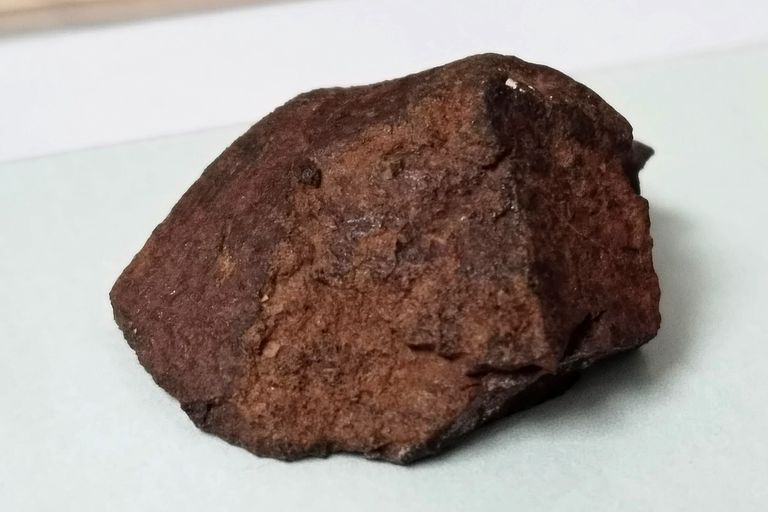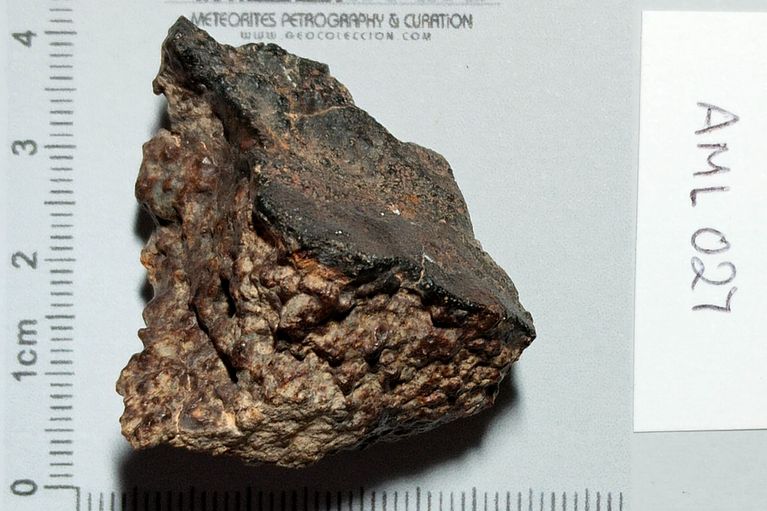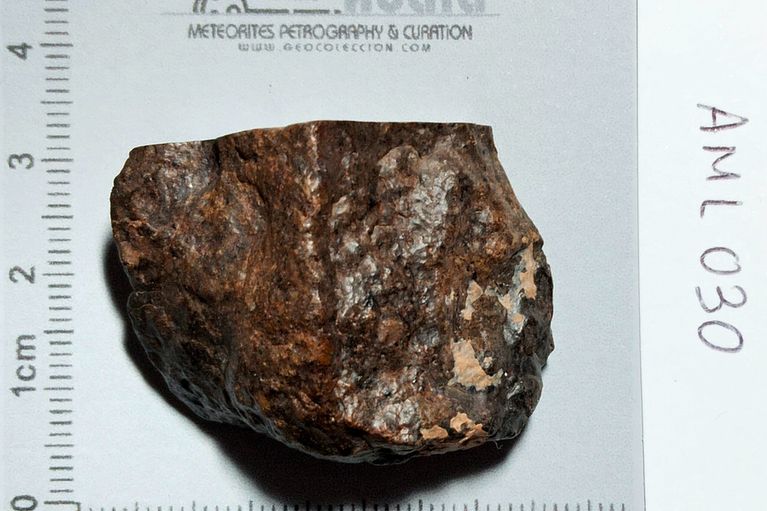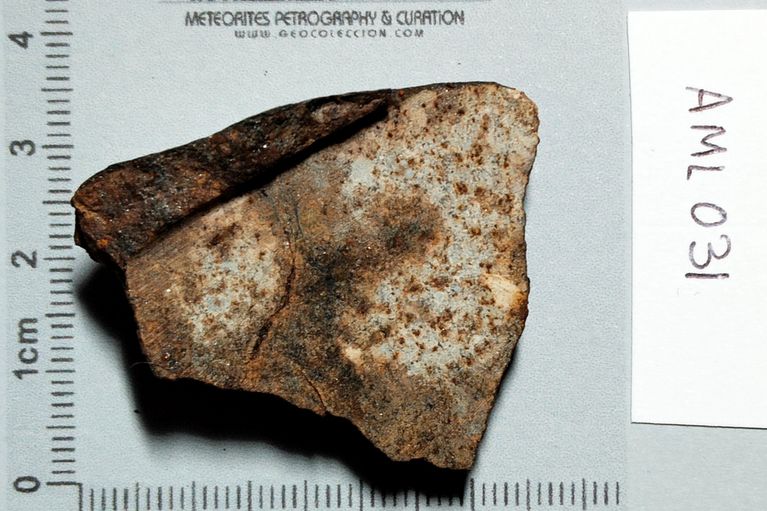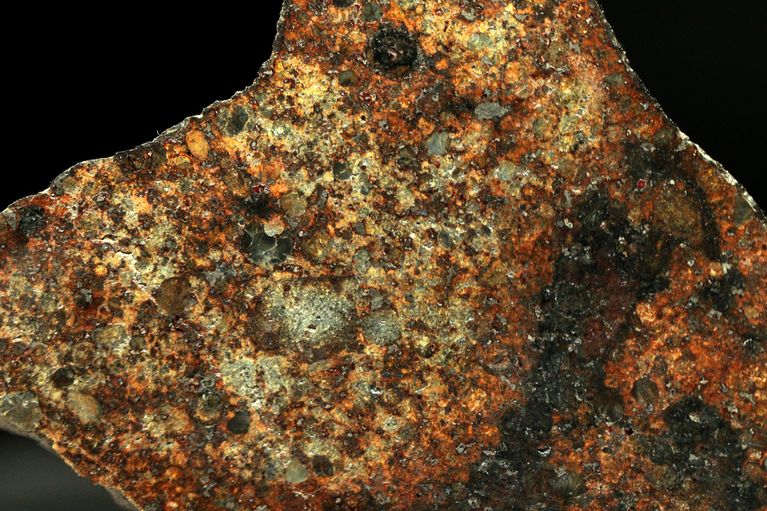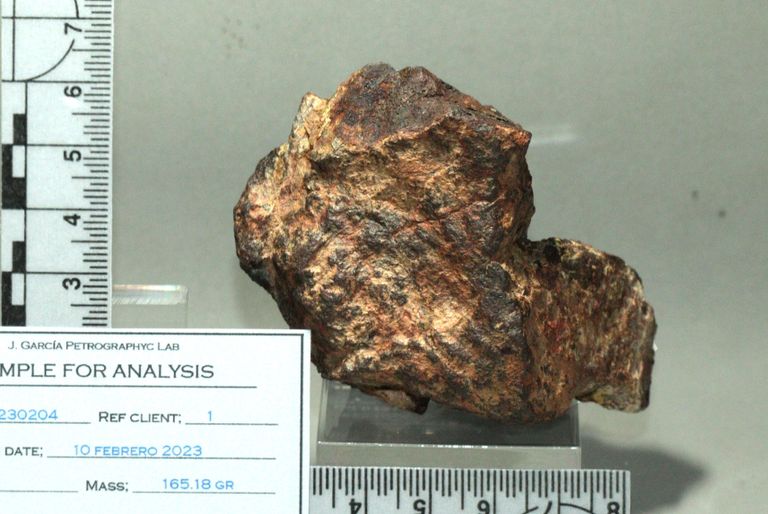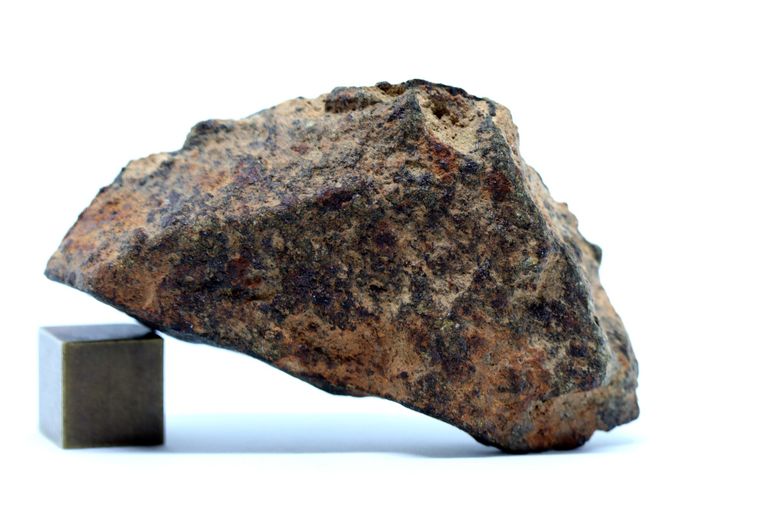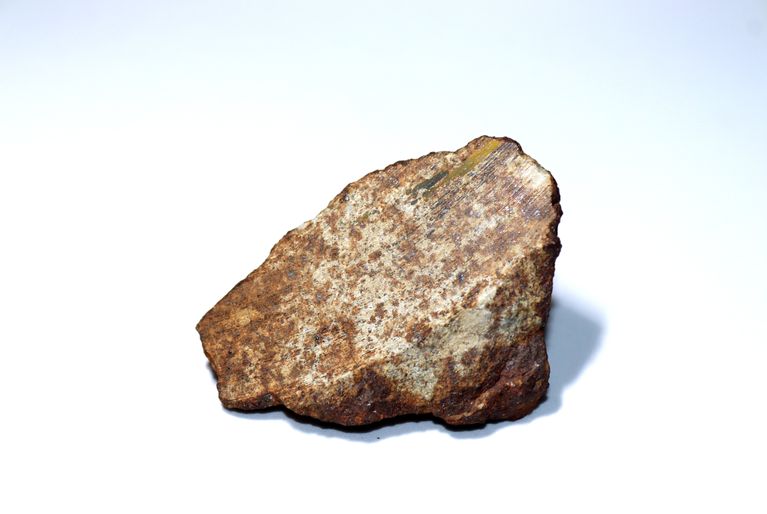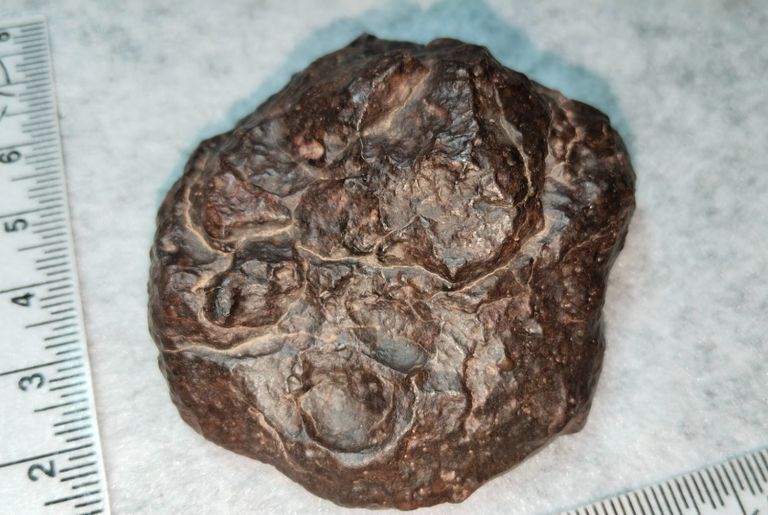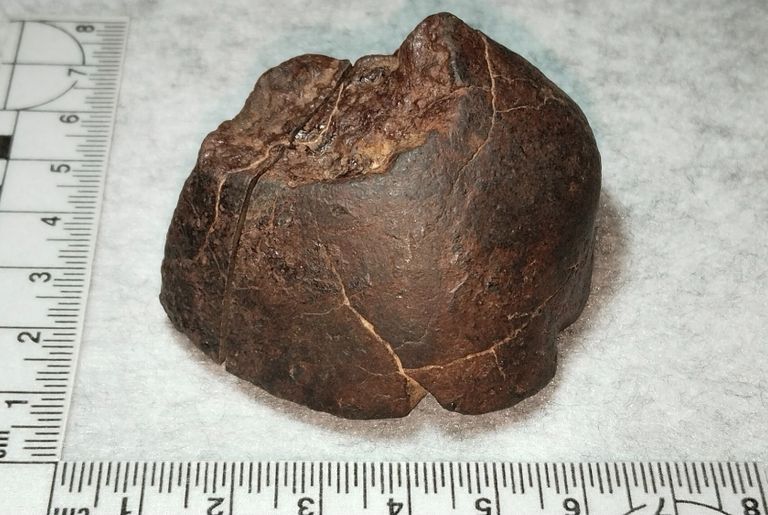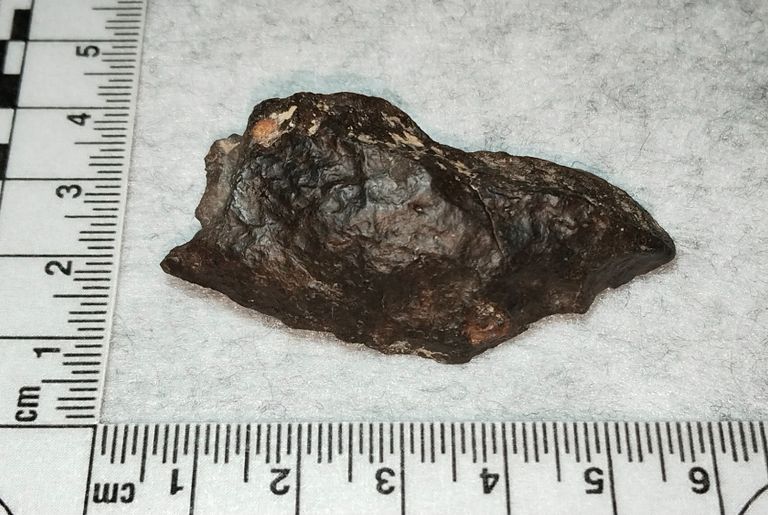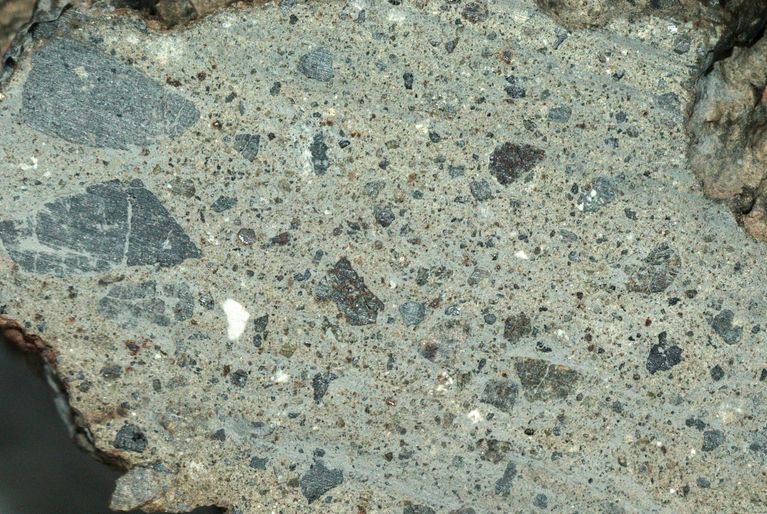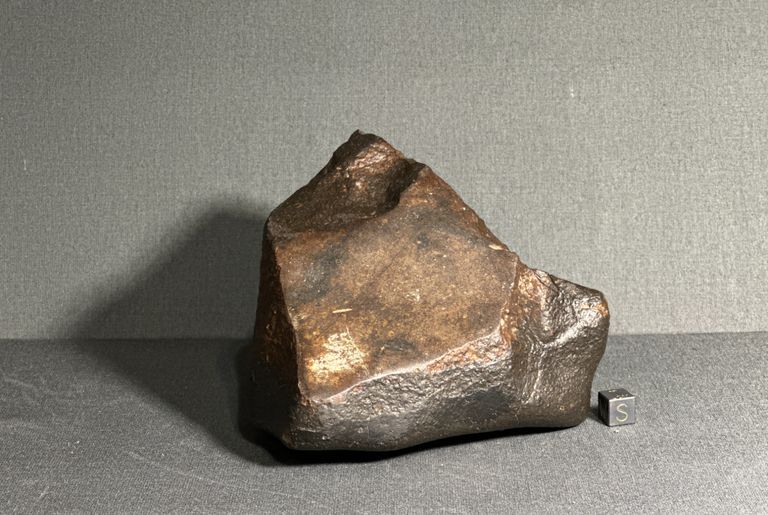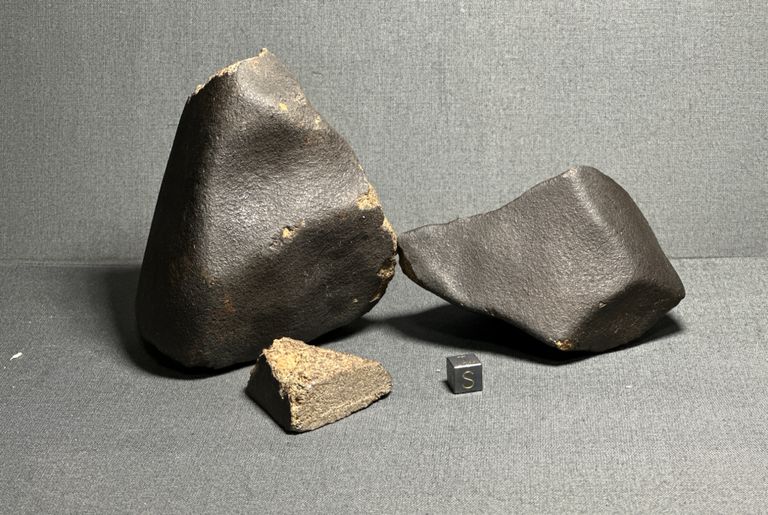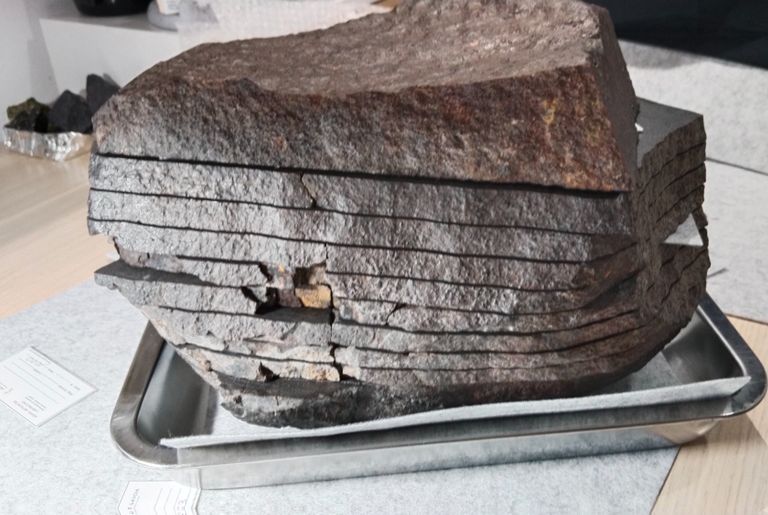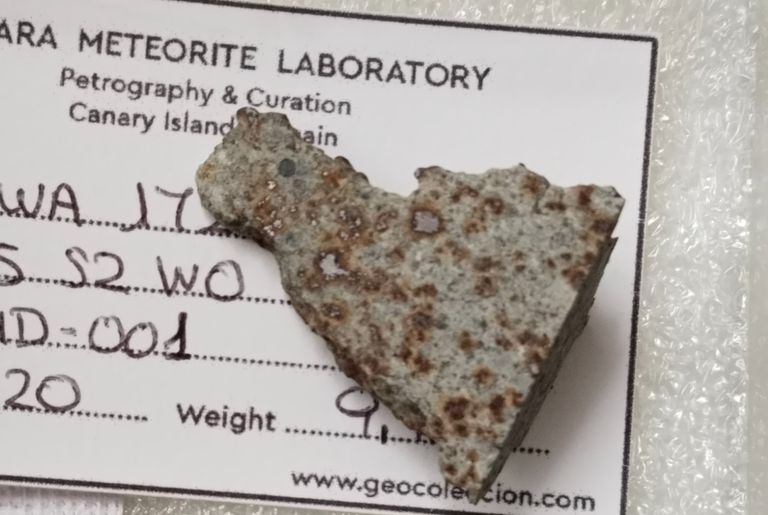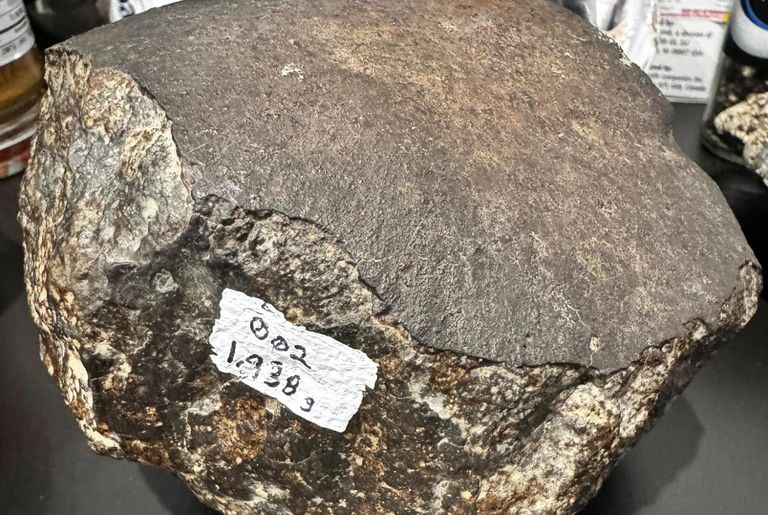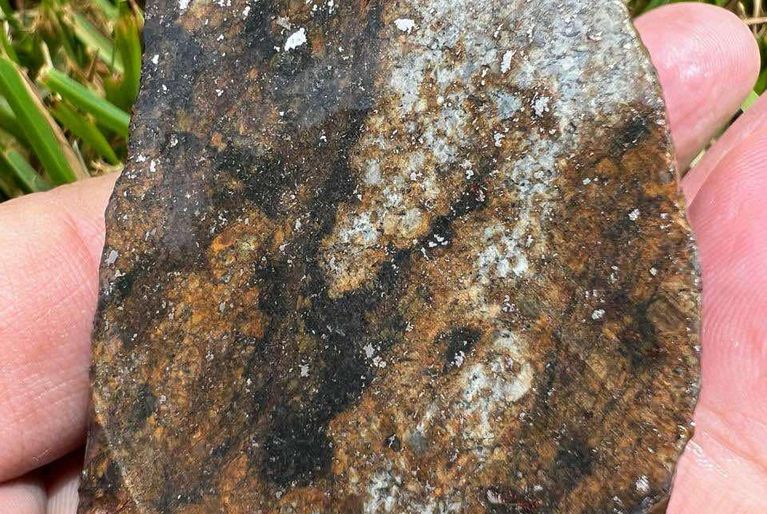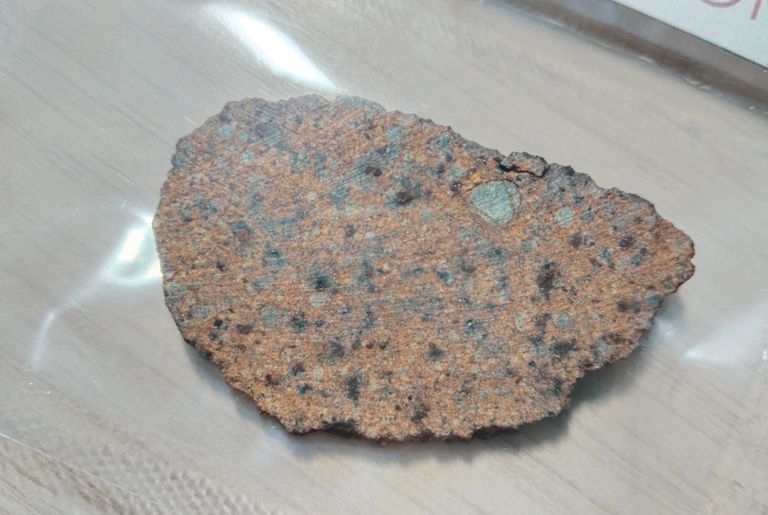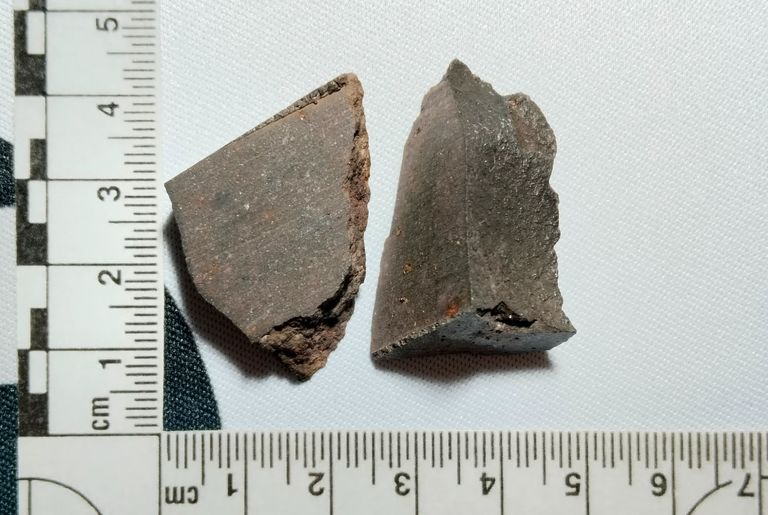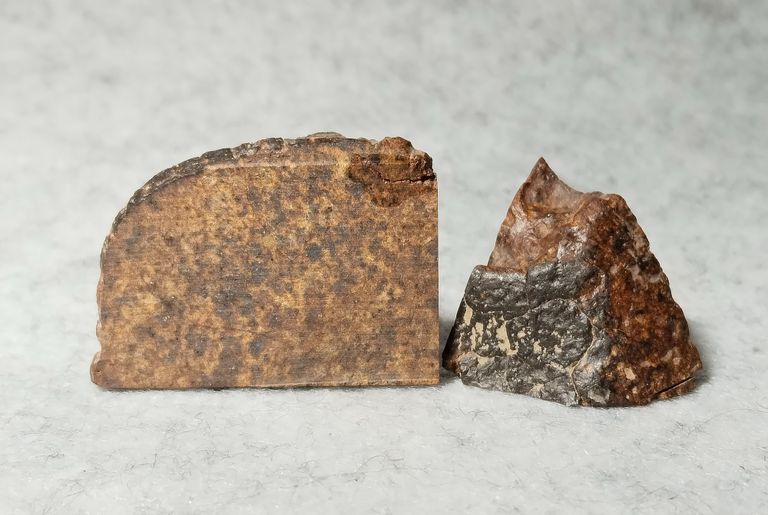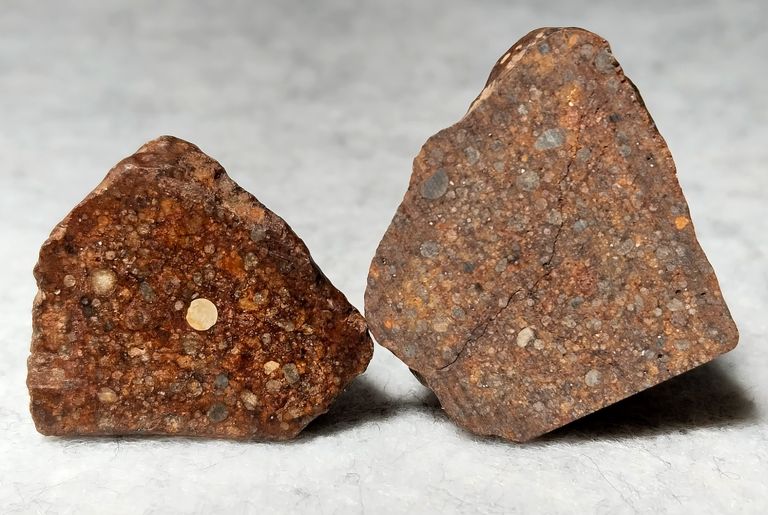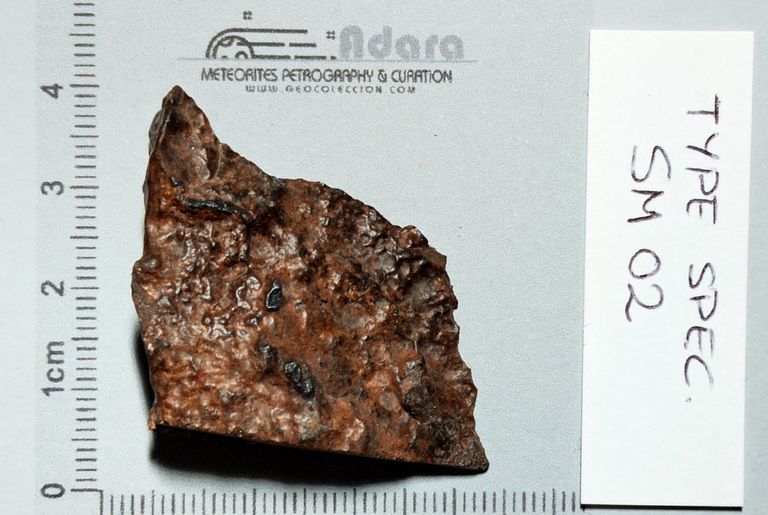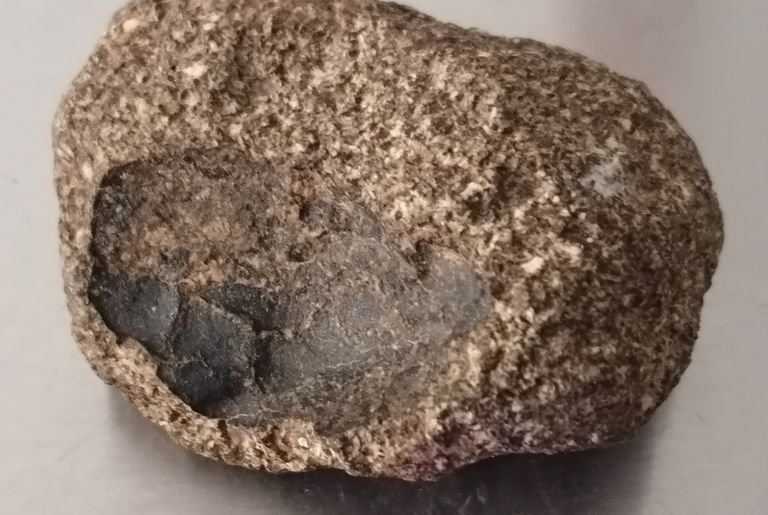Our classified meteorites
in The Meteoritical Bulletin
On this page we share the basic information of the meteorites that we have officially classified.
All of them were originally samples recovered in the deserts and sent to the laboratory for analysis. Now they are exceptional pieces of collecting and research.
For more info about our lab, CLICK HERE.
Access to the Meteoritical Society Database, CLICK HERE.
Northwest Africa 10909
History: Six complete stones covered with dark fusion crust were found in the desert by a nomad. The stones (originally 201.3, 110.9, 121.7, 127.1, 100.3, and 152 g) were sent to MCM for study. After the first studies, several grams were sent to UPC, where analysis was performed by Dr. J. Llorca in October 2015.
Petrography: The meteorite displays a basaltic texture with up to 1.5 mm sized exsolved pyroxenes and equally sized lath-shaped calcic plagioclase. Minor phases include chromite, SiO2 polymorphs, ilmenite and metallic iron.
Geochemistry: Orthopyroxene; Fs57.4±0.9, Wo2.2±1.4, FeO/MnO = 32±1, n=19. Plagioclase; An87.1±2.6, n=21.
Magnetic susceptibility:
Classification: Monomict eucrite.
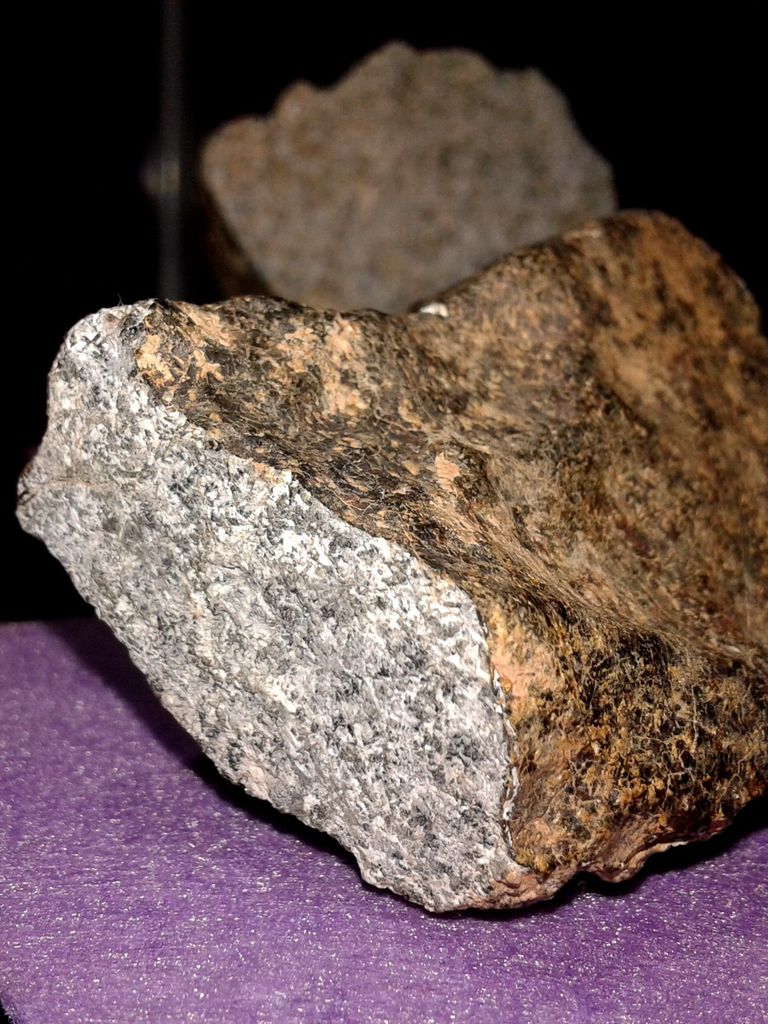
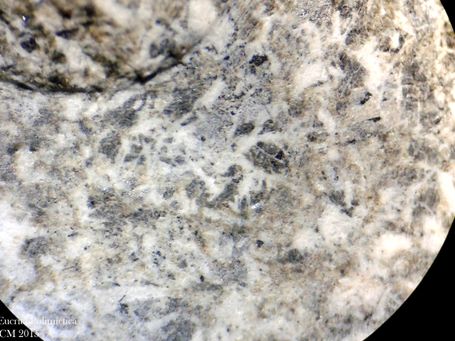
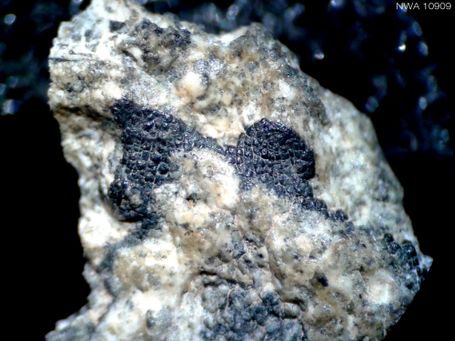
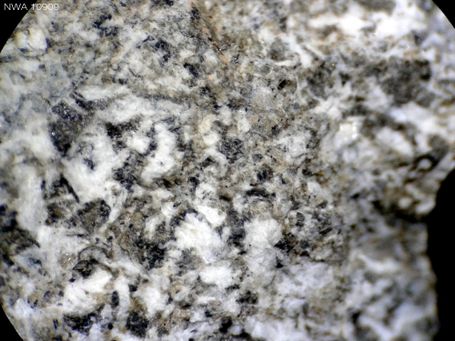

Northwest Africa 11397
History: In July 2015, Hamid Maatallaa, collaborator of MCM, recovered five pieces of the meteorite, which were sent to MCM for study. After the first observations, a sample for analysis was sent to Dr. Llorca, who carried out the classification.
Petrography: Breccia composed of disaggregated eucritic debris and some lithic eucrite clasts in a light matrix. Minerals include anorthite, pigeonite, augite, fayalite, silica polymorph, ilmenite, troilite and chromite. Minor Fe metal.
Geochemistry: Low-Ca pyroxene (Fs54.5±3.0Wo5.3±1.2, FeO/MnO=32-38, n=12), high-Ca pyroxene (Fs25.2±2.6Wo40.8±1.1, FeO/MnO=27-32, n=14); orthopyroxene host (Fs34.5±3.2Wo3.2±0.8, FeO/MnO=24-27, n=18), clinopyroxene exsolution lamella (Fs15.8±1.1Wo42.3±0.9, FeO/MnO=28-31, n=15), plagioclase (An90.3±3.3, n=22), fayalite (Fa92.2±2.0, FeO/MnO=41-42, n=11).
Magnetic susceptibility:
Classification: Eucrite, polymict.
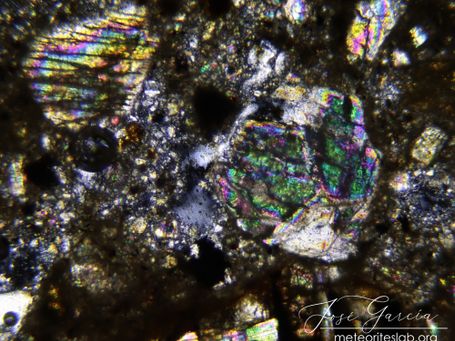
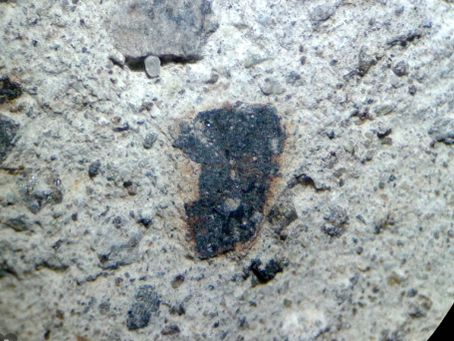
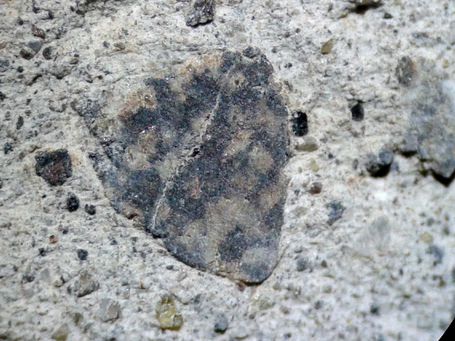
Geochemistry: Mineral compositions and geochemistry: Olivine (Fa20.1±0.8; N=82), low-Ca pyroxene (Fs16.6±0.6 Wo1.3±0.7; N=60), high-Ca pyroxene (Fs11.2 Wo25.7; N=1), feldspar (Ab78.3±4.5 An15.7±6.4 Or5.9±4.7; N=7). MEV/EDS: troilite (Fe = 64.7±0.6 wt%, S = 35.5±0.6 wt%; N=2), kamacite (Ni = 7.2±1.5 wt%; N=2), taenite (Ni = 29.8±3.7 wt%; N=2), tetrataenite (Ni = 46.2±0.6 wt%; N=1), chromite (Cr/(Cr+Al): 0.88±0.06; N=4), zoned Cr-spinel (edge = Cr/(Cr+Al): 0.58±0.05, Mg/(Mg+Fe): 0.22±0.03, Ti: 0.5±0.1 wt%; N=3) (center = Cr/(Cr+Al): 0.29±0.04, Mg/(Mg+Fe): 0.40±0.03; N=3), apatite (Cl: 5.0±0.2 wt%, F: 1.2±0.2 wt%; N=1), ilmenite and merrillite (RAMAN).
Magnetic susceptibility:
Classification: Ordinary Chondrite (H5), S3, W2.
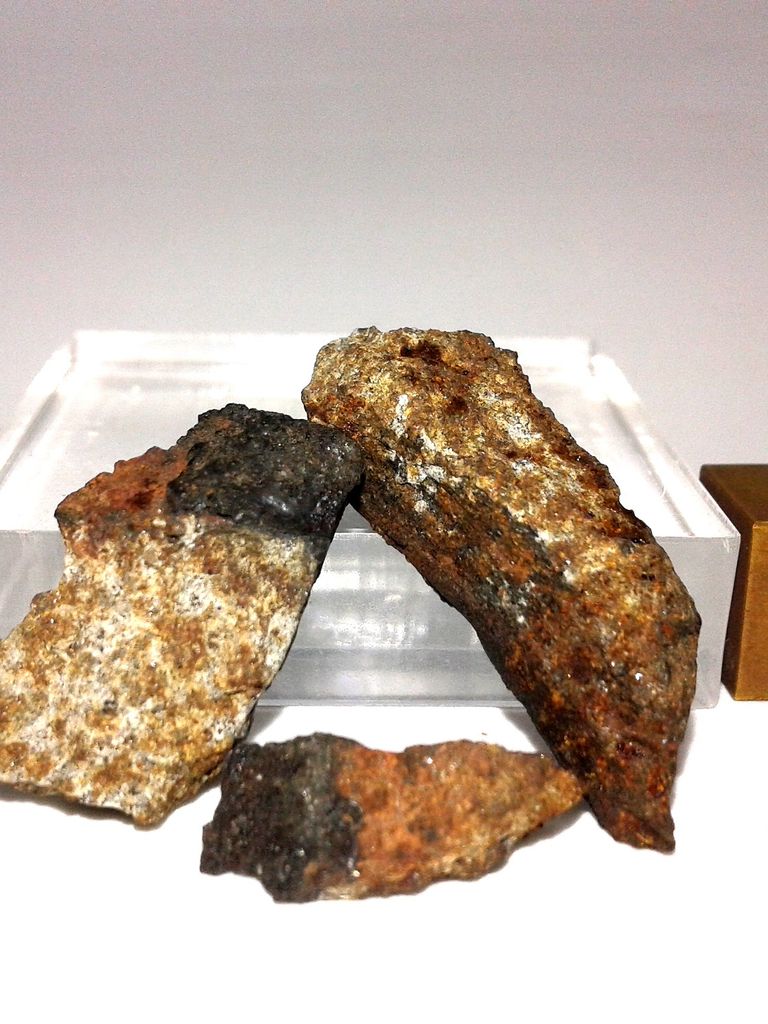
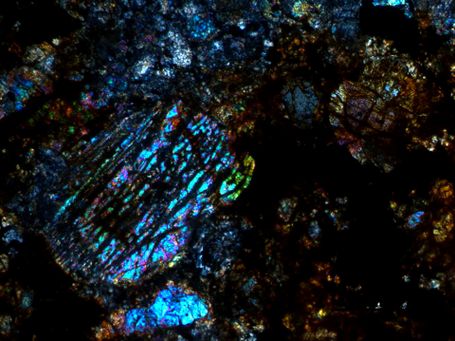
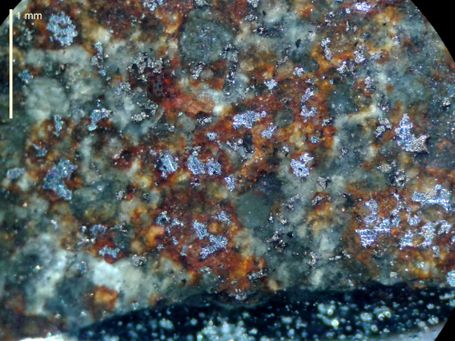
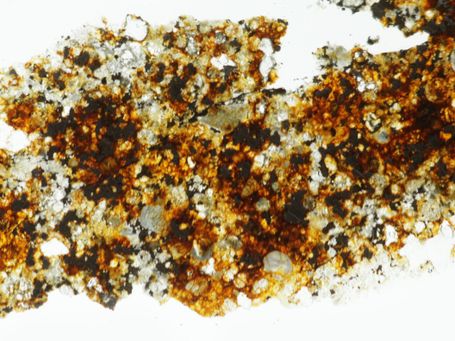
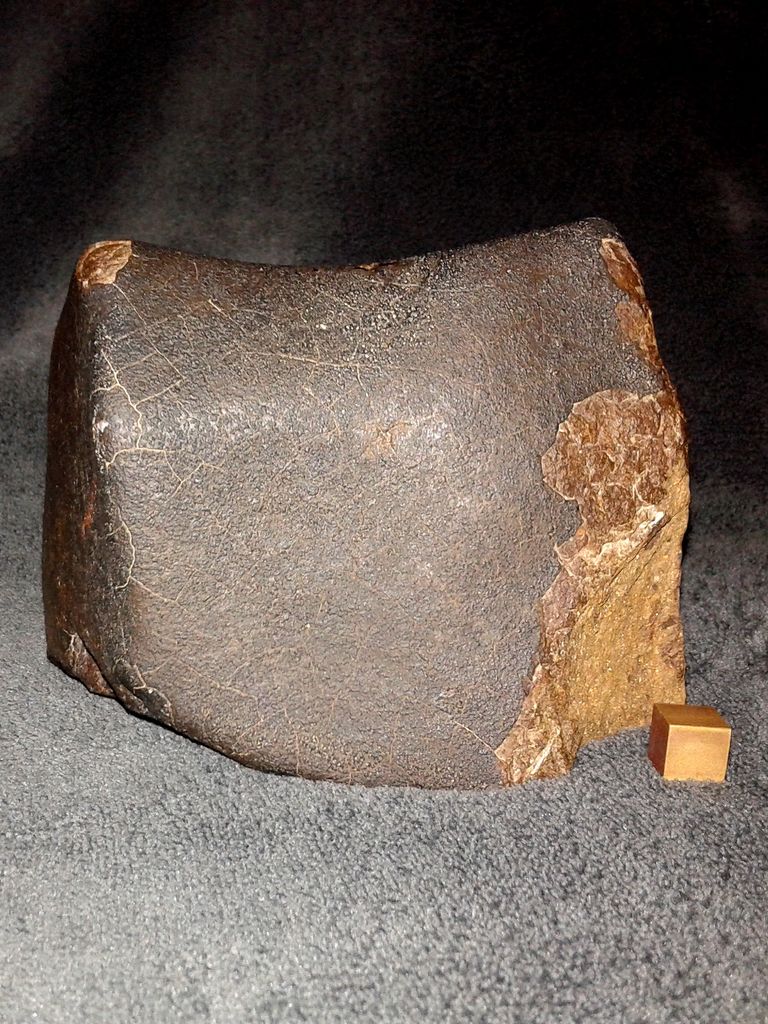
Physical characteristics: Complete piece. It has primary fusion crust over 70% of the surface, secondary crust over 20%. The fusion crust is brown dark, thick, well preserved, and has contraction cracks. The rock measures 12 × 9.5 × 7.5 cm. It weighs 1552 g.
Petrography: Breccia containing chondrules and chondrule fragments embedded in a fine-grained yellow-brown matrix. Opaque phases are chromite and FeNi-sulfides. Metallic FeNi has not been found. Low-Ca pyroxene has not been found.
Geochemistry: Olivine, Fa39.2±0.8 (Fa38.1-42.2; n=20) Fe/Mn=82±1.5; pyroxene, Fs11.5±0.9Wo 45.0±1.1 (Fs10.2-12.7Wo43.7-46.6; n=15): Plagioclase: An9.7-11.1 (n=4).
Magnetic susceptibility:
Classification: R4-5, S2, W3
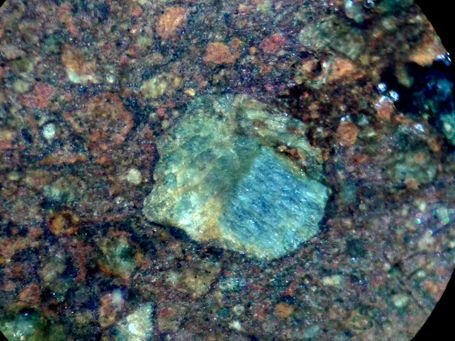
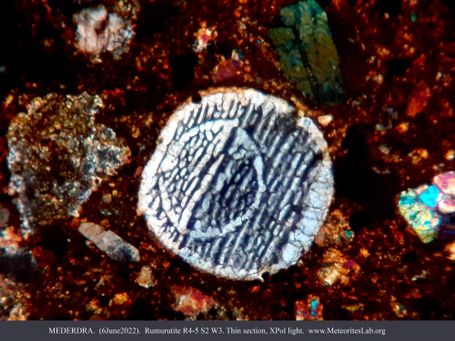
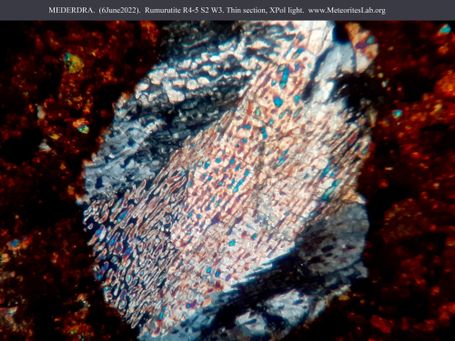
Northwest Africa 14005
Petrography: (Jose Garcia, MCM; D. Sheikh, Cascadia) This specimen is a breccia composed predominantly of sub-angular to sub-rounded anorthitic clasts (up to ~1.5 mm) and isolated mineral fragments of olivine and pyroxene set in a fine-grained matrix that contains interconnected areas of shock melt veins and trace amounts of ilmenite and troilite. Estimated modal abundances: Anorthitic plagioclase (90%), Olivine (3%), Pyroxene (3%), Shock melt veins (3%), Opaques (1%).
Geochemistry: (D. Sheikh, Cascadia) Olivine (Fa33.9±3.5, range Fa30.9-37.8, Fe/Mn=72±4, n=5), Low-Ca Pyroxene (Fs42.1±1.5Wo0.8±0.1, range Fs41.0-43.2Wo0.7-0.8, Fe/Mn=50±4, n=2), Pigeonite (Fs28.7±3.2Wo17.7±2.7, range Fs23.4-35.2Wo14.9-21.9, Fe/Mn=53±5, n=10), Augite (Fs21.0±4.0Wo32.0±4.6, range Fs16.9-24.8Wo27.9-37.0, Fe/Mn=53±6, n=3), Plagioclase (An96.0±0.5, range An94.8-97.0, n=36).
Classification: Lunar (feldspathic breccia).
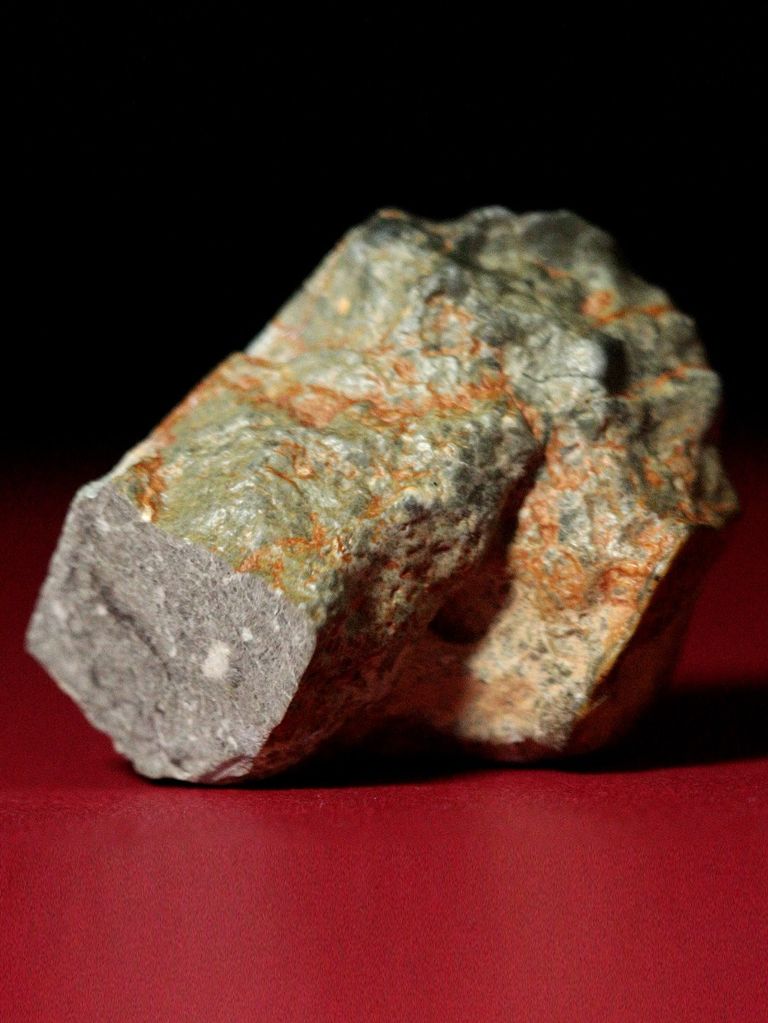
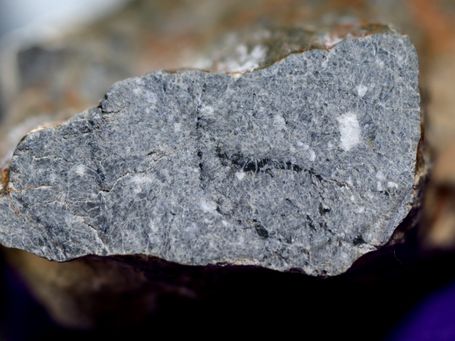
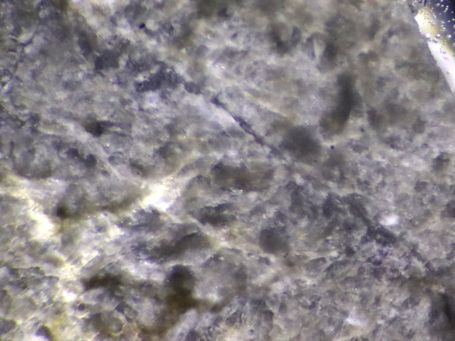
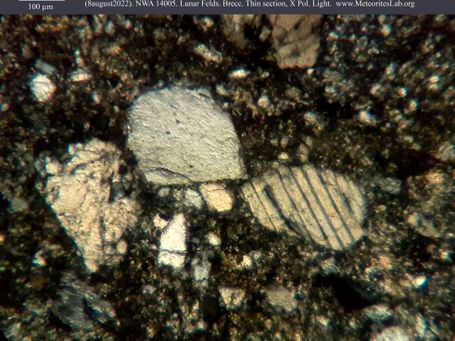
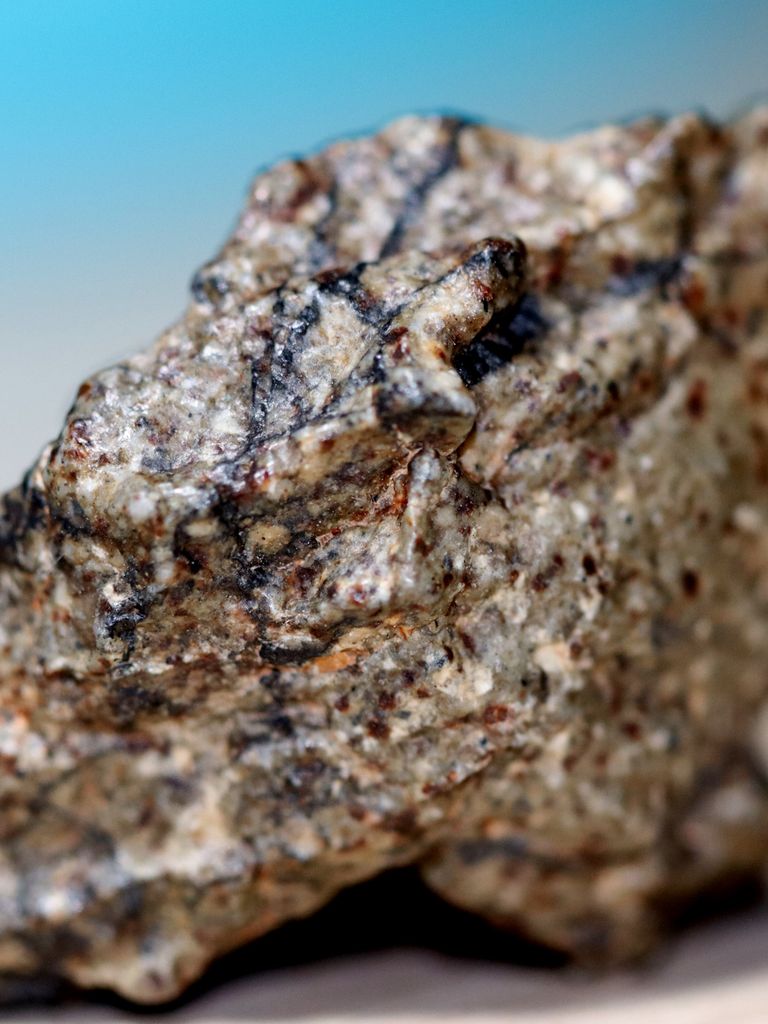
Petrography: Igneous rock with intersertal texture. Main minerals are pyroxene and plagioclase with typical grain size 400 µm. Other minerals include chromite, ilmenite, metal, troilite.
Geochemistry: Low-Ca pyroxene Fs59.3±0.6Wo2.7±0.4, FeO/MnO 30.2±2.0 (n=4). Augite exsolutions Fs26.6Wo43.3, FeO/MnO 30.3 (n=2). Plagioclase An89.2±0.3Ab10.5±0.4Or0.3±0.1 (n=4). Chromite Cr# 0.82.
Magnetic susceptibility: 3.46
Classification: Achondrite (eucrite)
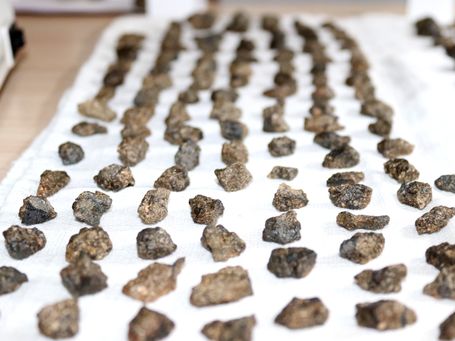
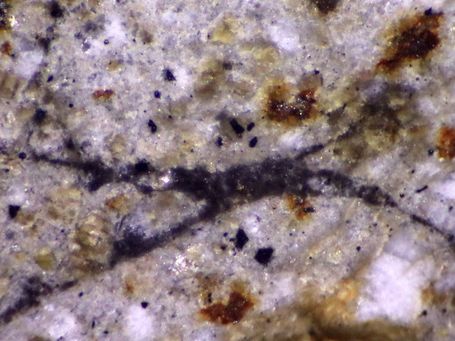
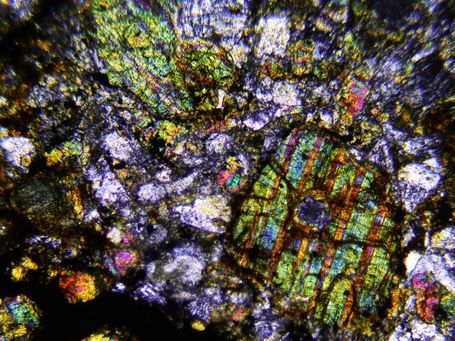
Northwest Africa 14527
Physical characteristics: Black irregular rock with visible mm-sized white clasts. Cut surface show a black interior with white angular clasts to 5 mm.
Petrography: Mineral clasts to 400 µm set in a feldspathic glassy matrix containing vesicles with typical size 100 µm. Metal and troilite are present. One lithic clast, a 600 µm microgabbroic clast, was observed in the studied section.
Geochemistry: Olivine Fa24.8, FeO/MnO = 84.4 (n=2). Pyroxene Fs32.3±3.6Wo13.9±7.1, FeO/MnO = 59.1±7.5 (n=10). Plagioclase An94.0±2.6Ab5.8±2.5Or0.3±0.2 (n=6).
Magnetic susceptibility: 3.29
Classification: Lunar meteorite (Feldspathic breccia)
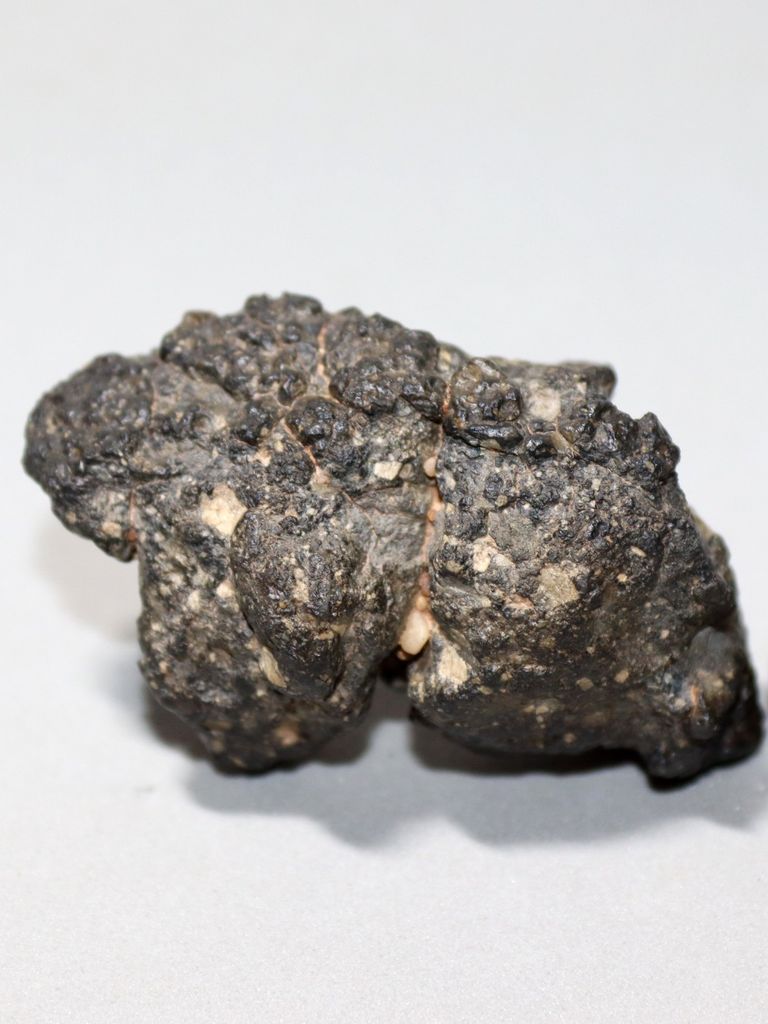
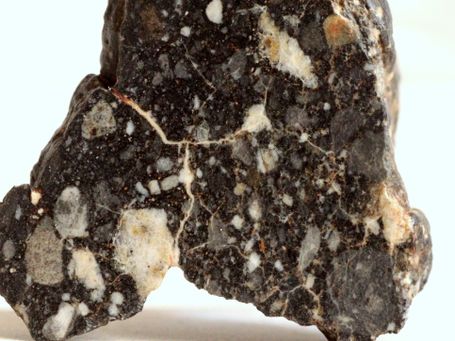
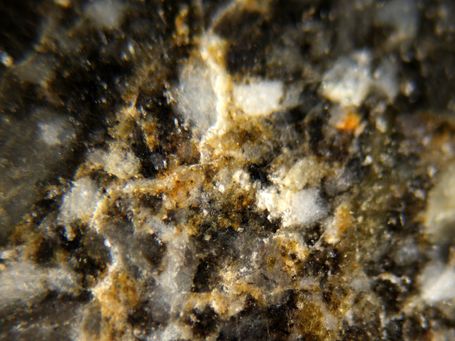
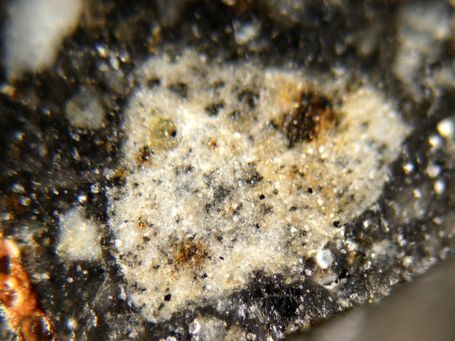
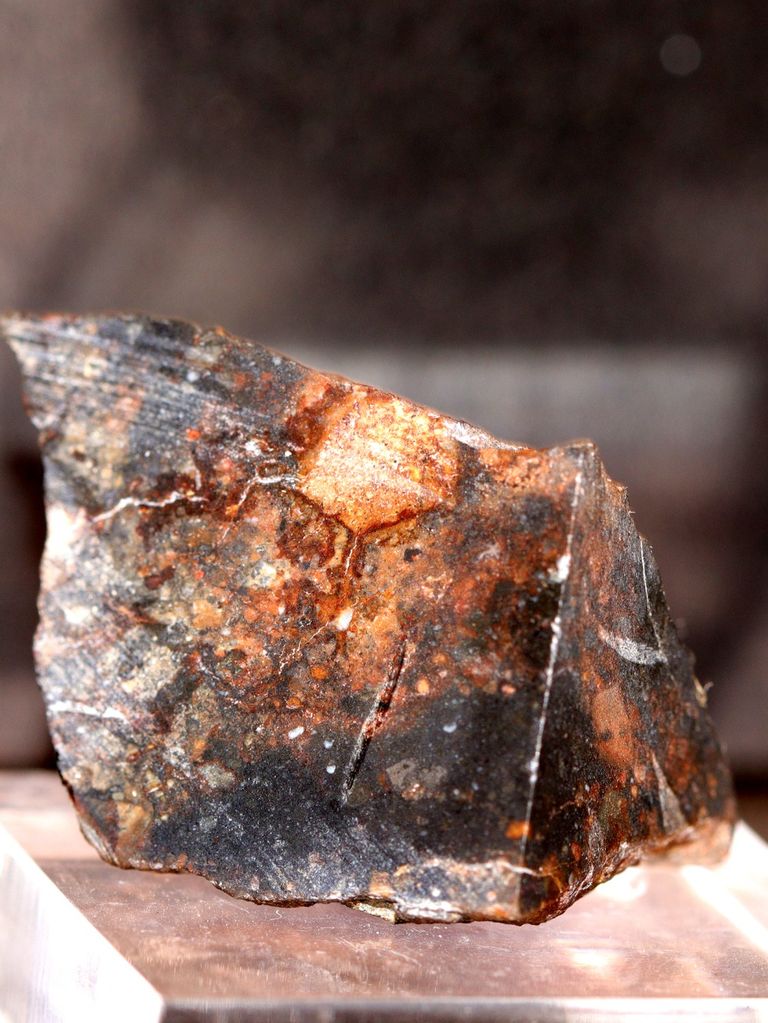
Northwest Africa 14801
Petrography: Brecciated gabbroic igneous rock with mm grain size. Main minerals are pyroxene and plagioclase. Accessory metal and troilite. Electron probe microanalyses reveal that pyroxene have diogenitic and eucritic compositions. The proportion of eucritic material is <10%.
Geochemistry: Diogenitic pyroxene Fs26.2±4.0Wo2.8±0.8, FeO/MnO=30.7±2.2 (n=7). Eucritic pyroxene Fs49.4Wo5.1, FeO/MnO = 30.5 (n=2). Plagioclase An94.5Ab5.1Or0.1 (n=1).
Magnetic susceptibility: 3.41
Classification: Achondrite (diogenite, polymict breccia).
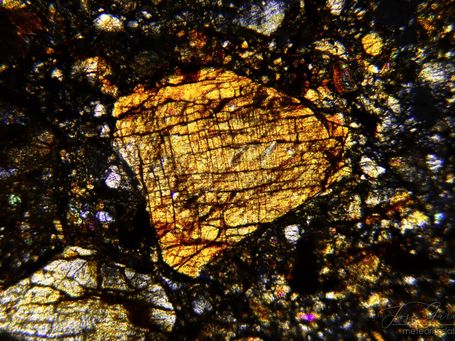
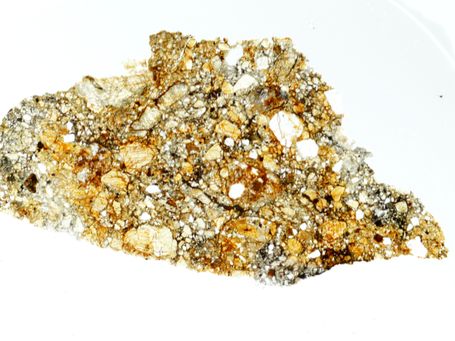
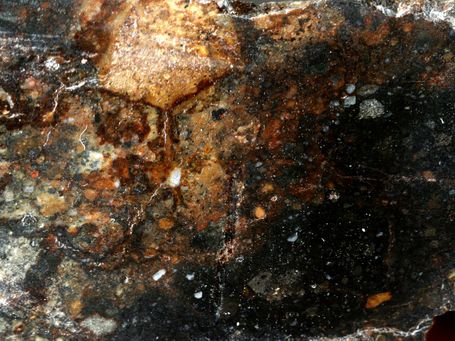
Northwest Africa 14802
Physical characteristics: Grey stone. Cut surface reveals a gray interior with mm-sized darker clasts.
Petrography: Brecciated igneous rock with ophitic texture with typical grain size 250 µm. Main minerals are pyroxene (some exsolved, others zoned), and plagioclase. Accessory chromite, ilmenite, troilite, FeNi metal. A 2 × 2 mm melt rock clast is present.
Magnetic susceptibility: 2.79
Geochemistry: Pyroxene Fs35.1±5.7Wo3.3±2.1, FeO/MnO=36.8±4.8 (n=6). Plagioclase An86.0Ab13.4Or0.6 (n=2).
Classification: Achondrite (eucrite-br).
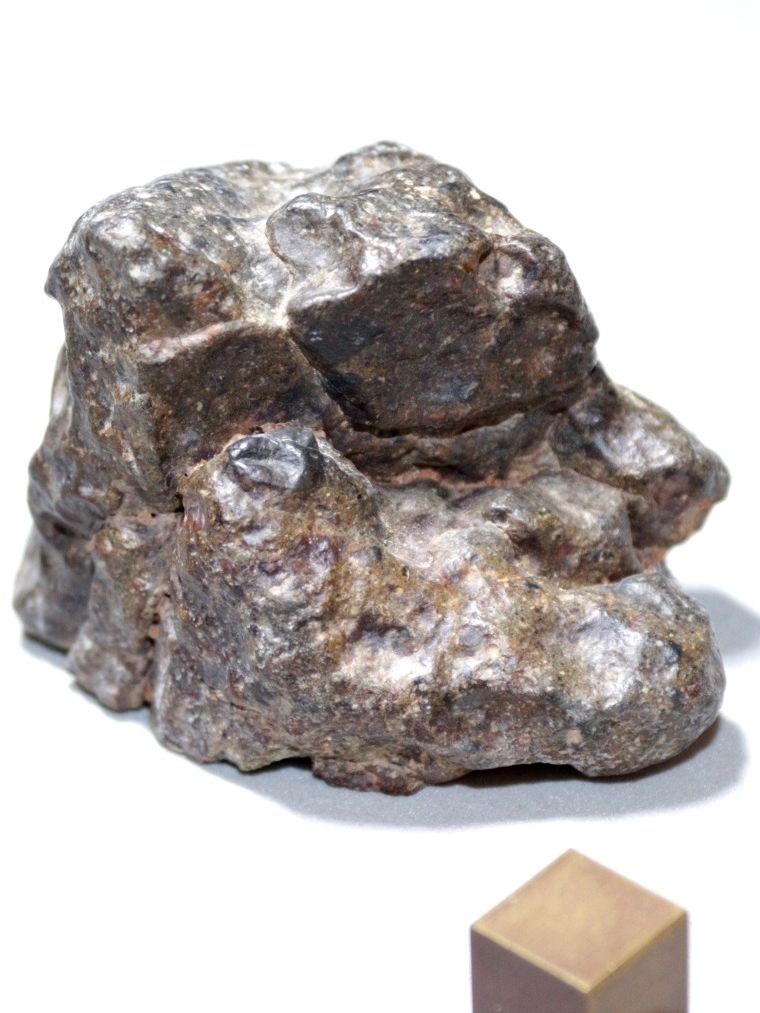
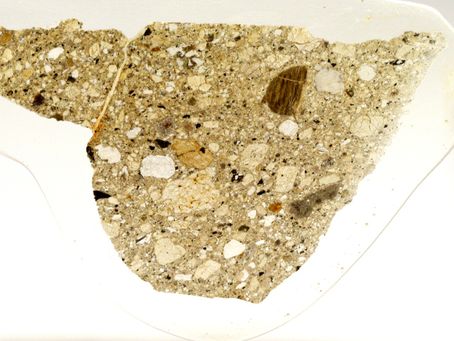
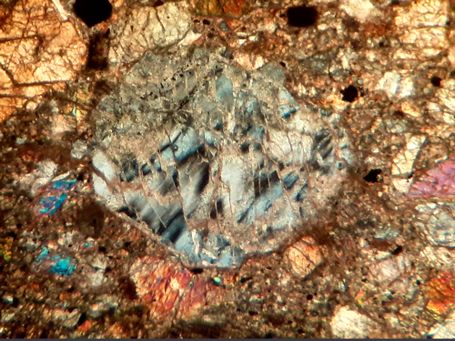
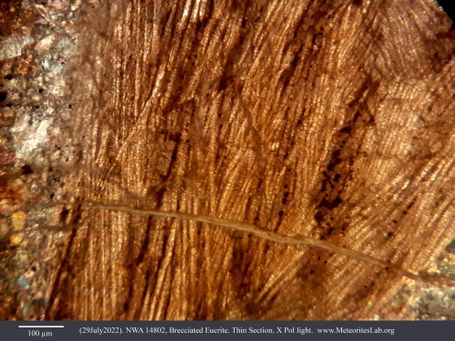
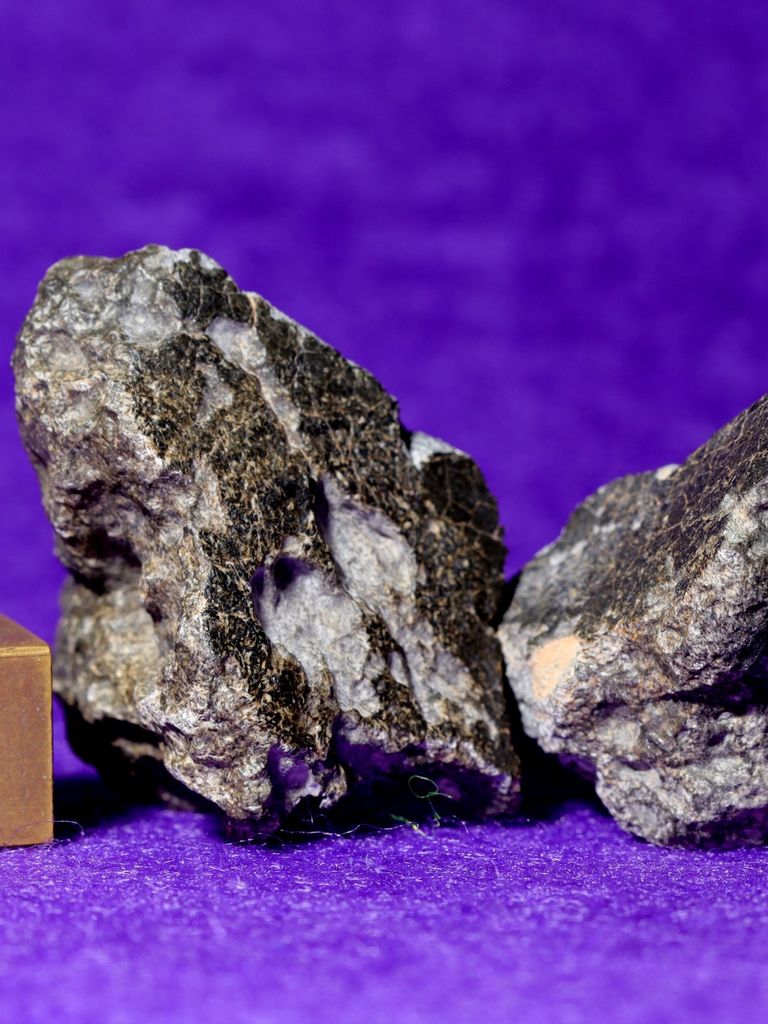
Northwest Africa 14803
Physical characteristics: Gray stone. Cut surface reveals a gray interior.
Petrography: Fractured but unbrecciated microgabbroic igneous rock with typical grain size 300 μm. Main minerals are exsolved pyroxene and plagioclase. Accessory troilite, ilmenite. No metal was observed.
Magnetic susceptibility: 2.61
Geochemistry: Pyroxene Fs60.4±1.0Wo1.9±0.2, FeO/MnO=36.0±3.5 (n=4). Plagioclase An81.6±1.3Ab17.2±0.7Or1.2±0.5 (n=3).
Classification: Achondrite (eucrite-unbr).
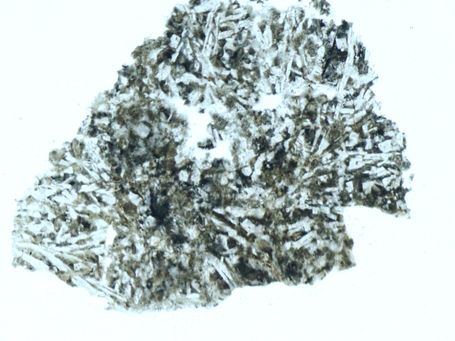
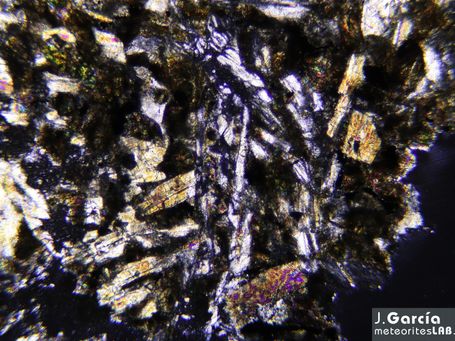
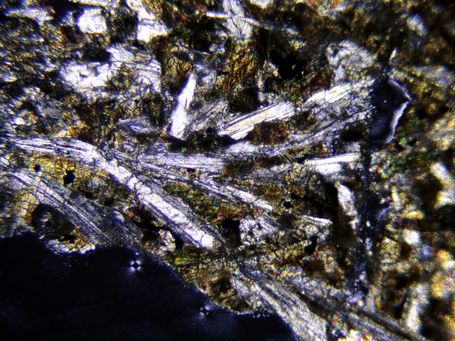
Northwest Africa 14816
Petrography: Ordinary chondrite with a cluster texture [Metzler 2012, MAPS 47:2193-2217]. Opaque veins and melt rock clasts with microporphyritic texture are present.
Susceptibilidad magnética; 4.75
Classification: Ordinary chondrite (L4).
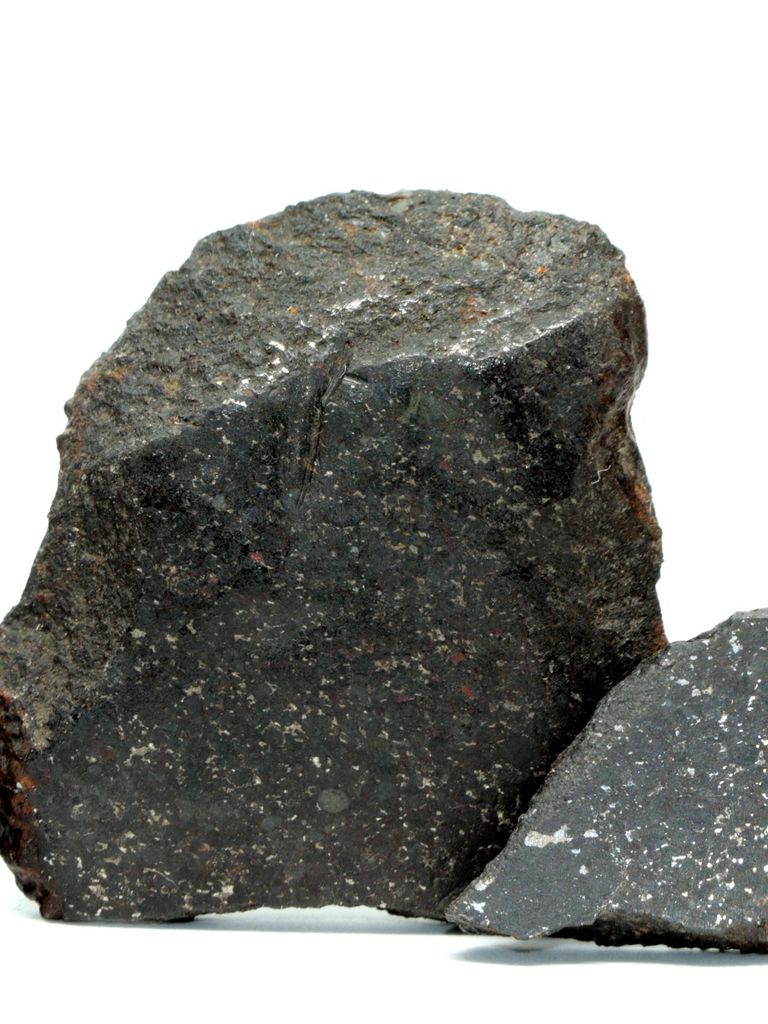
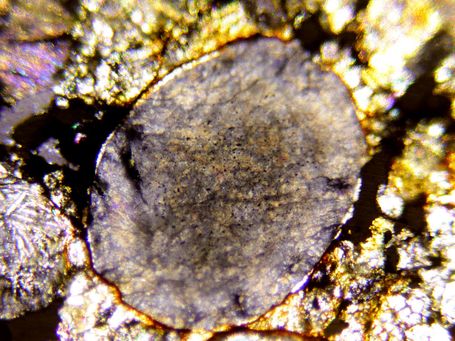
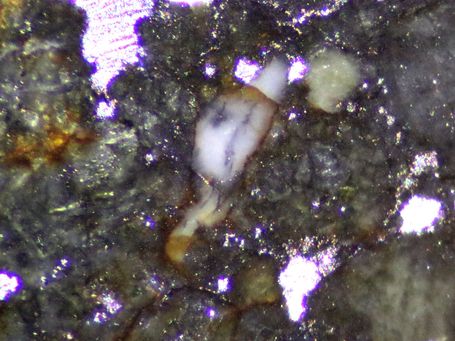
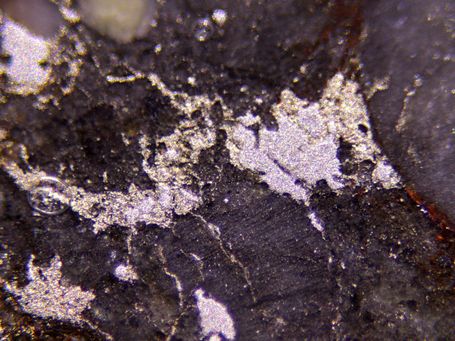
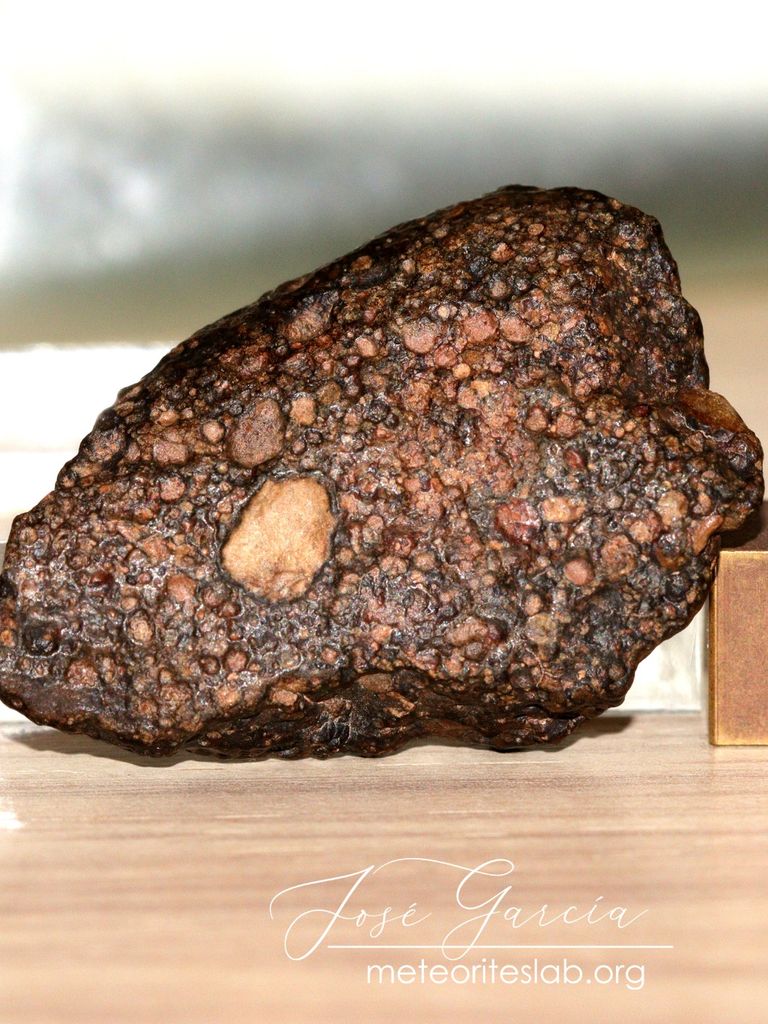
Northwest Africa 15158
Petrography: Chondrite with large chondrules (average apparent diameter 1210±270, n=14), and cluster texture. Olivine is zoned. Opaque minerals are metal and troilite.
Geochemistry: Olivine Fa16.3±7.5, range Fa0.5-27.0, Fa PMD 36% (n=9). Cr2O3 in ferroan olivine 0.23±0.13 wt% (n=8). Low-Ca pyroxene Fs11.4±8.1Wo1.2±1.3, range Fs2.1-22.9 (n=10).
Magnetic susceptibility: 3.82
Classification: Ordinary chondrite (LL3).
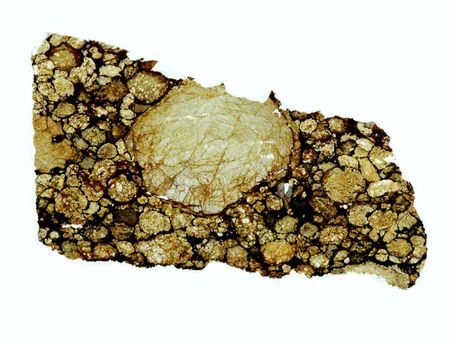
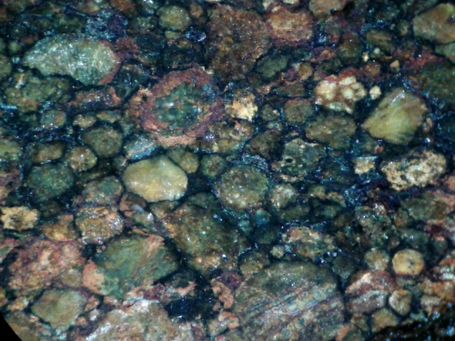
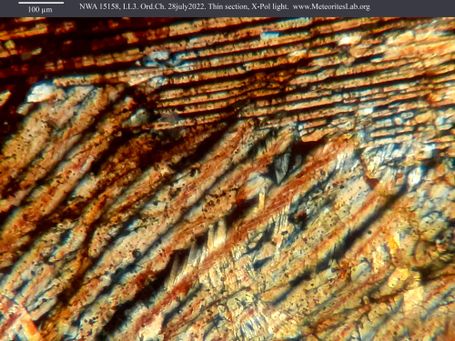
Northwest Africa 15159
Magnetic susceptibility: 4.94
Classification: Ordinary chondrite (L6 W0).
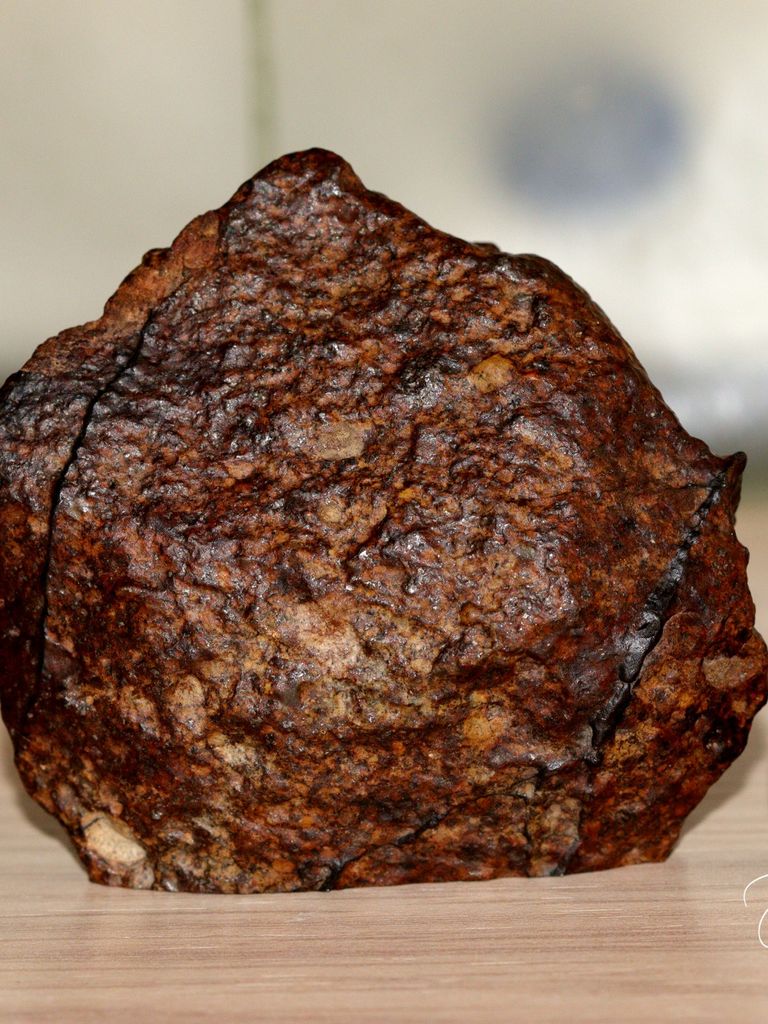
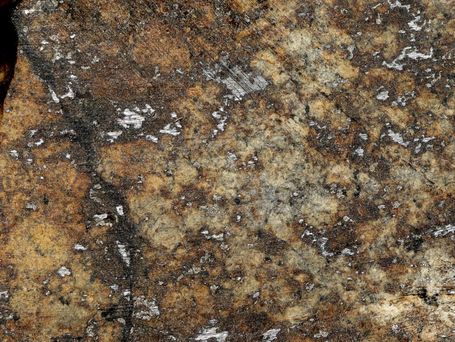
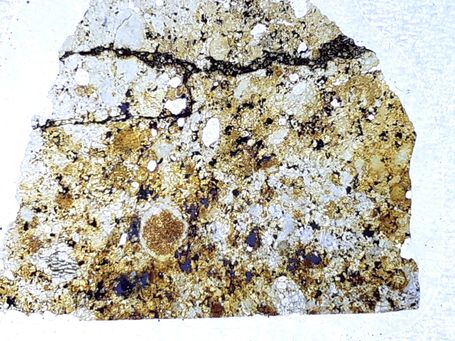
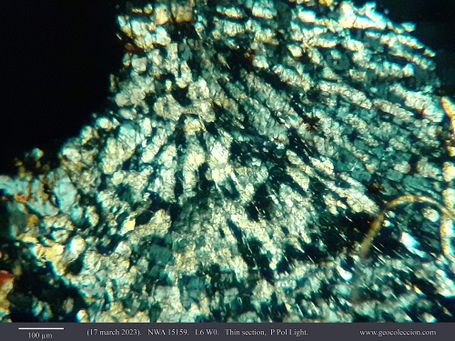
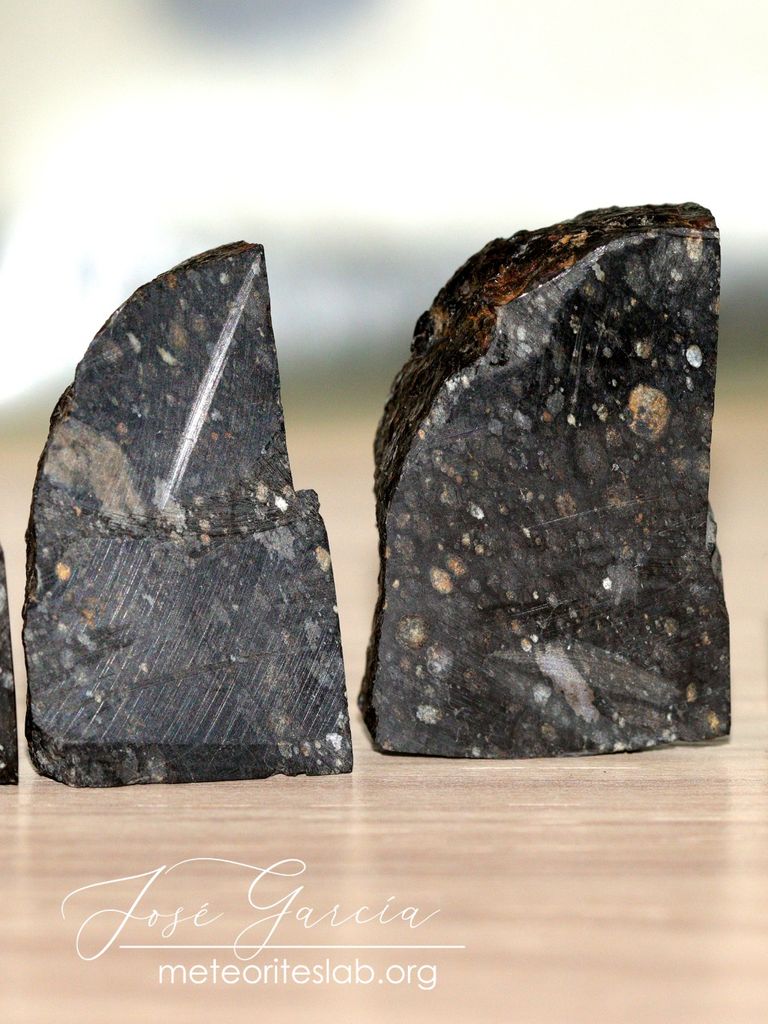
Northwest Africa 15177
Petrography: Chondrite with mm-sized chondrule and CAIs to 2 mm set in an abundant fine-grained iron-rich matrix. Sulfides and magnetite are abundant. Metal, that includes awaruite, is rare.
Geochemistry: Olivine Fa4.0±2.8, range Fa1.6-8.7 (n=8). Low-Ca pyroxene Fs3.2Wo1.0 (n=2). Sulfides are troilite and pentlandite.
Magnetic susceptibility: 3.94
Classification: Carbonaceous chondrite (CV ox 3).
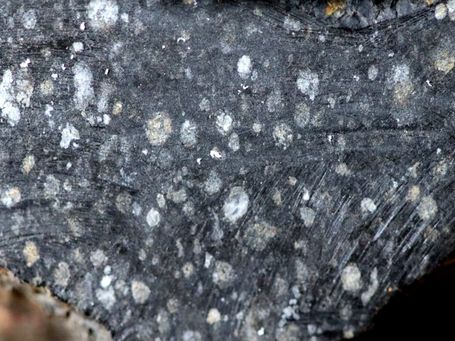
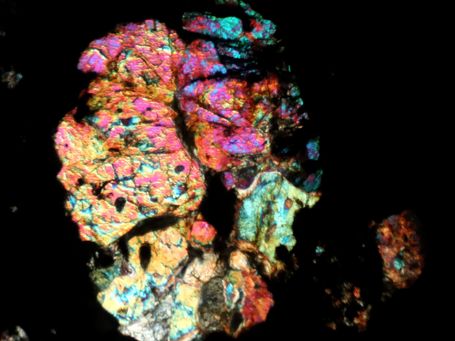
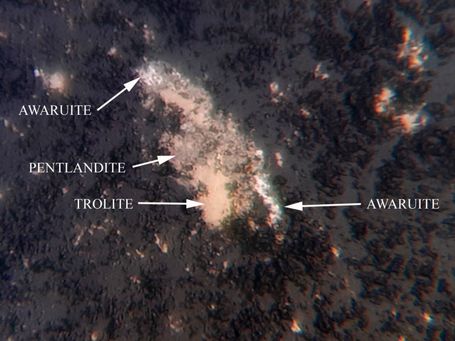
Physical characteristics: The meteorite is partially covered with fresh fusion crust. A cut surface reveals large chondrules and large CAIs set in a dark, fine grained matrix (about 75 vol.%).
Petrography: (V. Moggi Cecchi, MSN-FI; I.Abderrahmane, UMM; J.García, MCM; G.S.Senesi, CNR-ISTP): A polished section shows a chondritic texture with relatively large, well-formed PO and POP chondrules, ranging in size from 400 to 1500 μm, and set in a fine grained matrix (about 75 vol.%). CAIs consisting of melilite and spinel are present. Main silicate phases are Fo-rich olivine and Fs-rich orthopyroxene in chondrules and Fa-rich olivine in the matrix. Opaque phases mainly consist of framboidal magnetite inside chondrules and iron oxides as weathering products around chondrules. Pentlandite can be found as small blebs inside chondrules. Fe,Ni alloys are absent except for very rare awaruite grains.
Geochemistry: EMPA (V. Moggi Cecchi, MSN-FI): Ol in PO and POP chondrules (Fa4.7±3.9Fo95.3±3.5, N=45, Fe/Mn = 58.9;Cr2O3=0.2,CaO=0.3, all in Wt.%); Ol in matrix (Fa28.9±2.5Fo71.1±2.3, N=10); Opx in chondrules (Fs1.9±0.6En96.2±0.6Wo1.9±0.8, N=25, Fe/Mn = 18.3;Al2O3=1.2,Cr2O3=0.5, all in Wt.%); Magnetite with Cr2O3=1.5, Al2O3=0.6 (all in wt%).
Classification: Carbonaceous chondrite (CVox3).
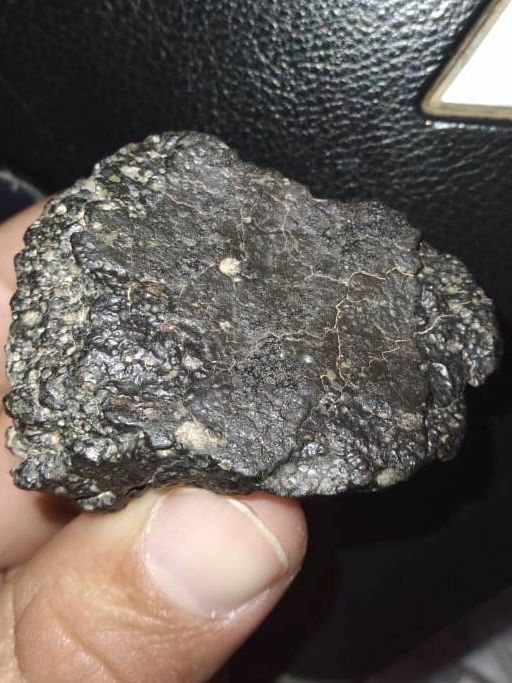
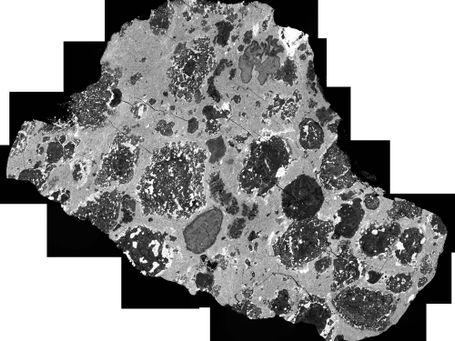
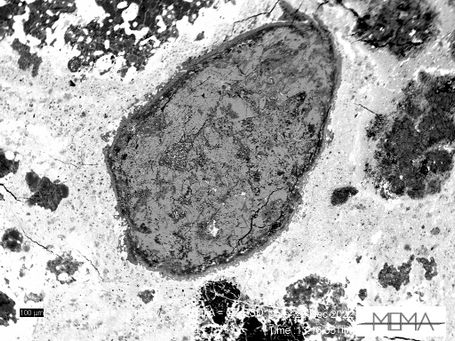
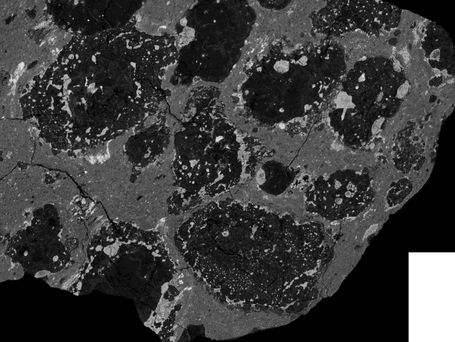
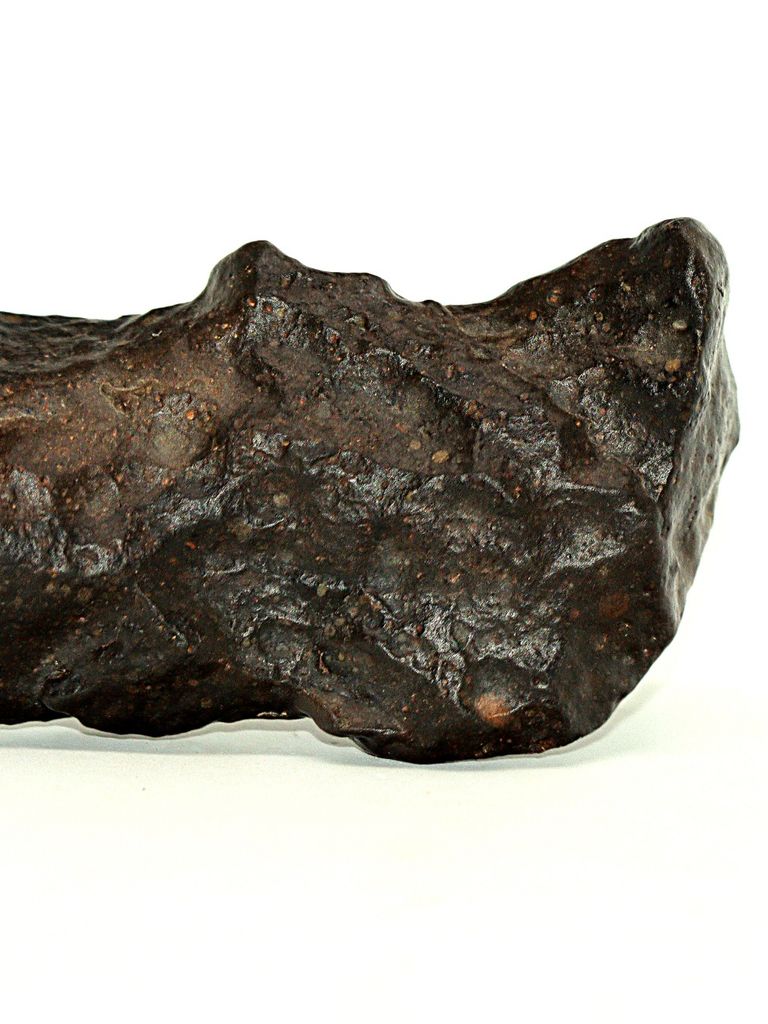
Northwest Africa 15750
Petrography: Chondrite with abundant recrystallized matrix containing plagioclase with typical size 20 µm. Opaque minerals are pyrrhotite and pentlandite mostly as rounded aggregates to 500 µm in the matrix, and magnetite.
Geochemistry: Olivine Fa40.7±0.3, NiO 0.27±0.02 wt% (n=3). Pyroxene Fs13.9Wo0.3, Fs25.1Wo0.3 (n=2).
Magnetic susceptibility: 3.08
Classification: Rumuruti chondrite (R4). Type 4 based on the unequilibrated pyroxene, despite the presence of plagioclase in the matrix.
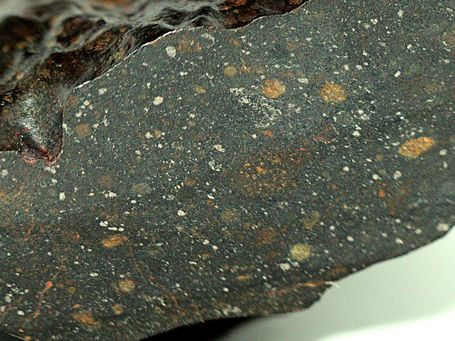
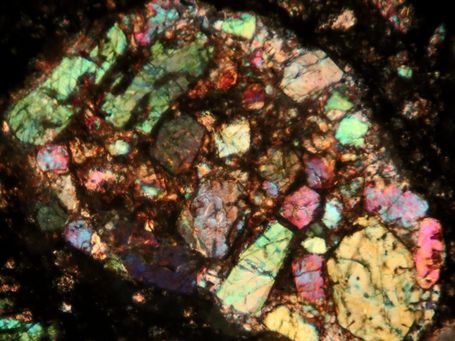
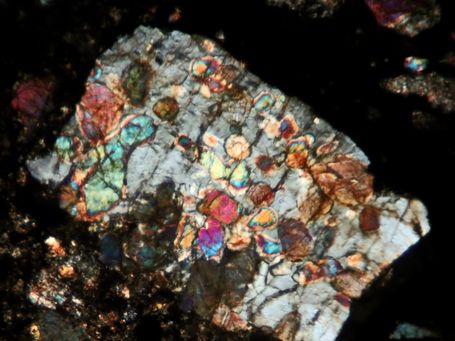
Northwest Africa 15751
Geochemistry: Fayalite (mol%): 30.6 (n=2), Ferrosilite (mol%): 25.0 (n=2), Wollastonite (mol%): 1.95.
Magnetic suscept.: 4.08
Classification: Ordinary chondrite LL6 W1.
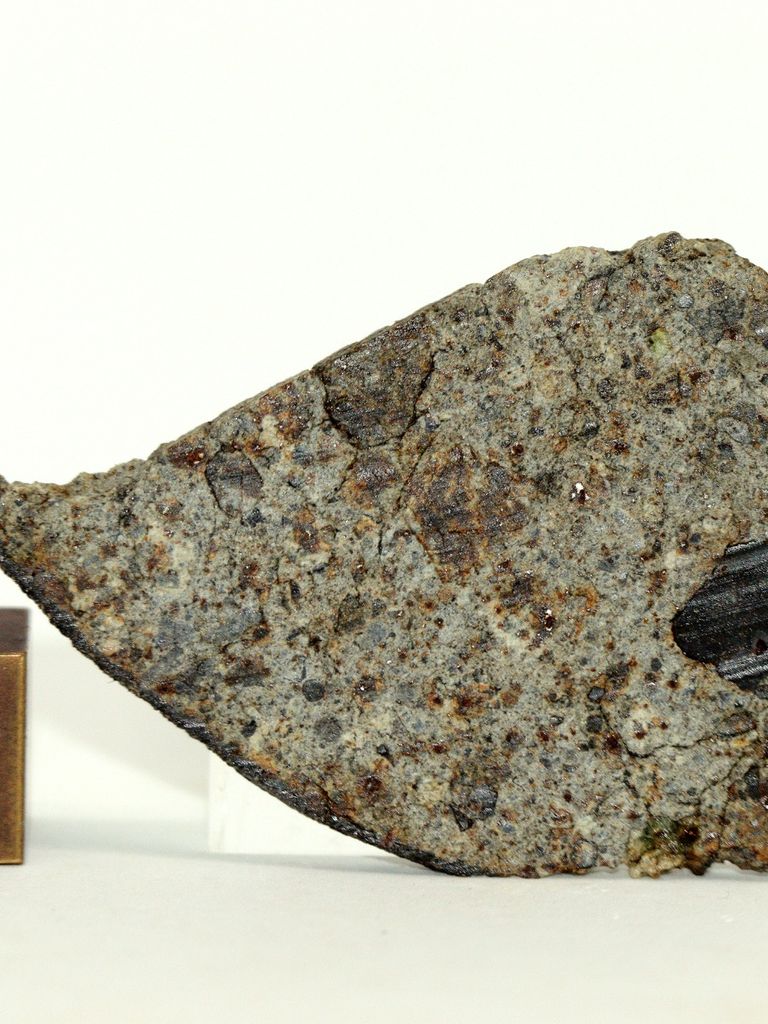
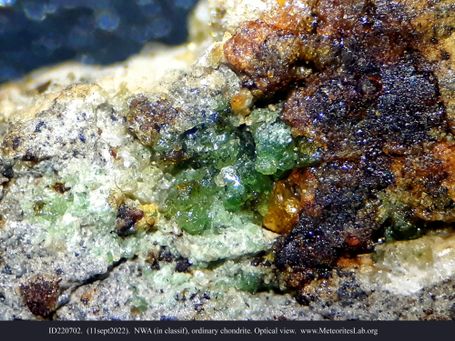
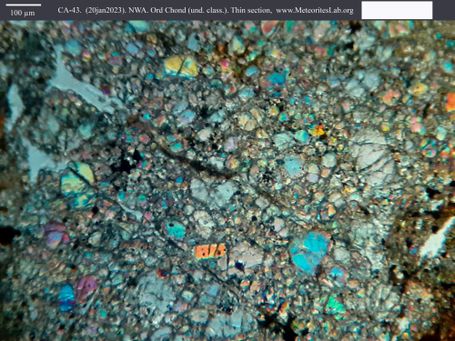
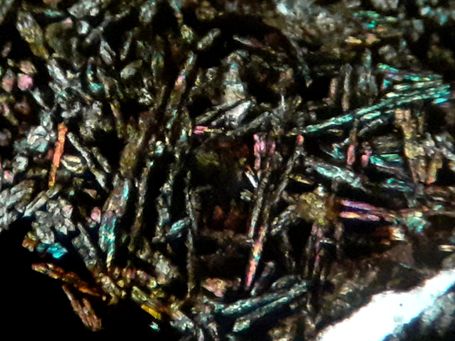
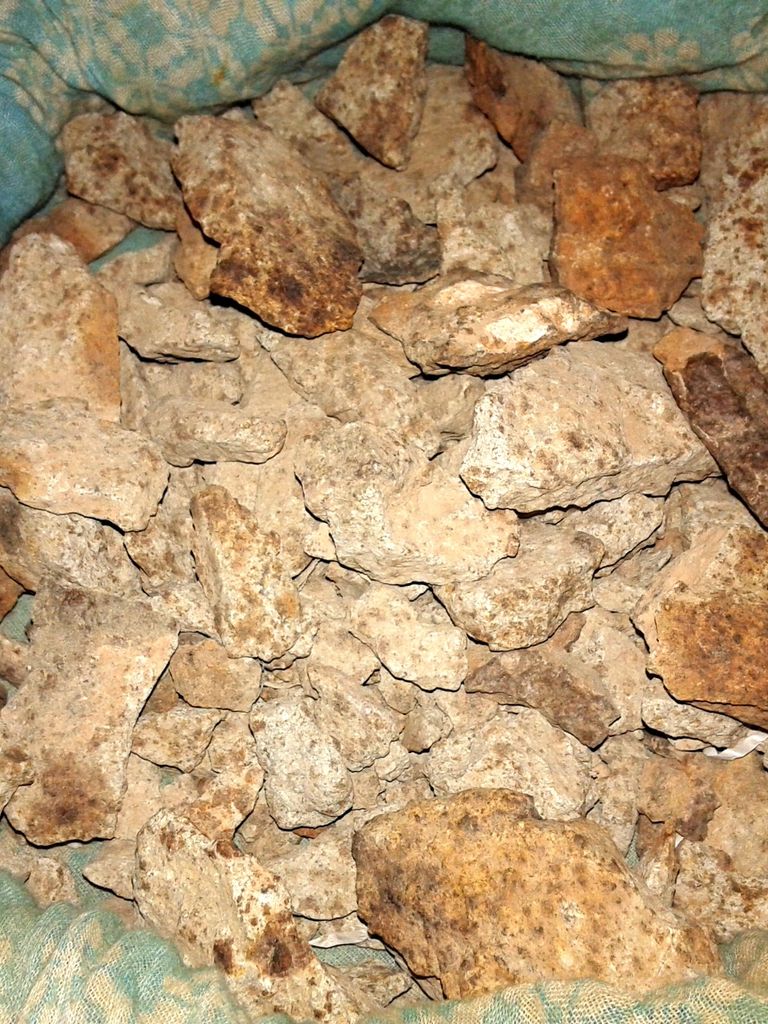
Northwest Africa 15969
Petrography: Highly recrystallized type 6 chondrite.
Geochemistry: Olivine; Fa 24.6 (n=1). Pyroxene; Fs 20.99±0.24 Wo 1.47±0.20 (n = 3).
Magnetic susceptibility: 4.77.
Classification: Ordinary chondrite L6 W2.
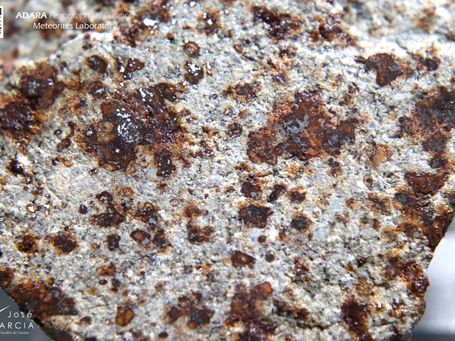
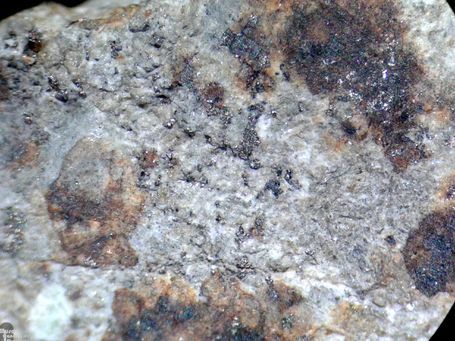
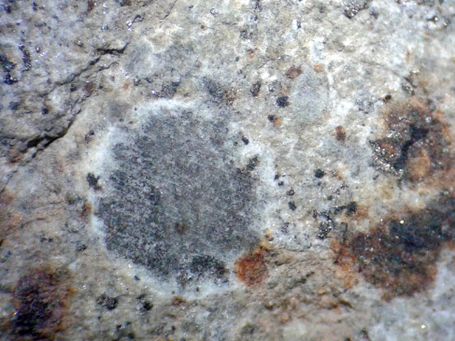
Northwest Africa 16023
Petrography: Ordinary chondrite with interchondrule plagioclase average size below 50 µm.
Magnetic suscept.: 5.40.
Classification: Ordinary chondrite H5 W1.
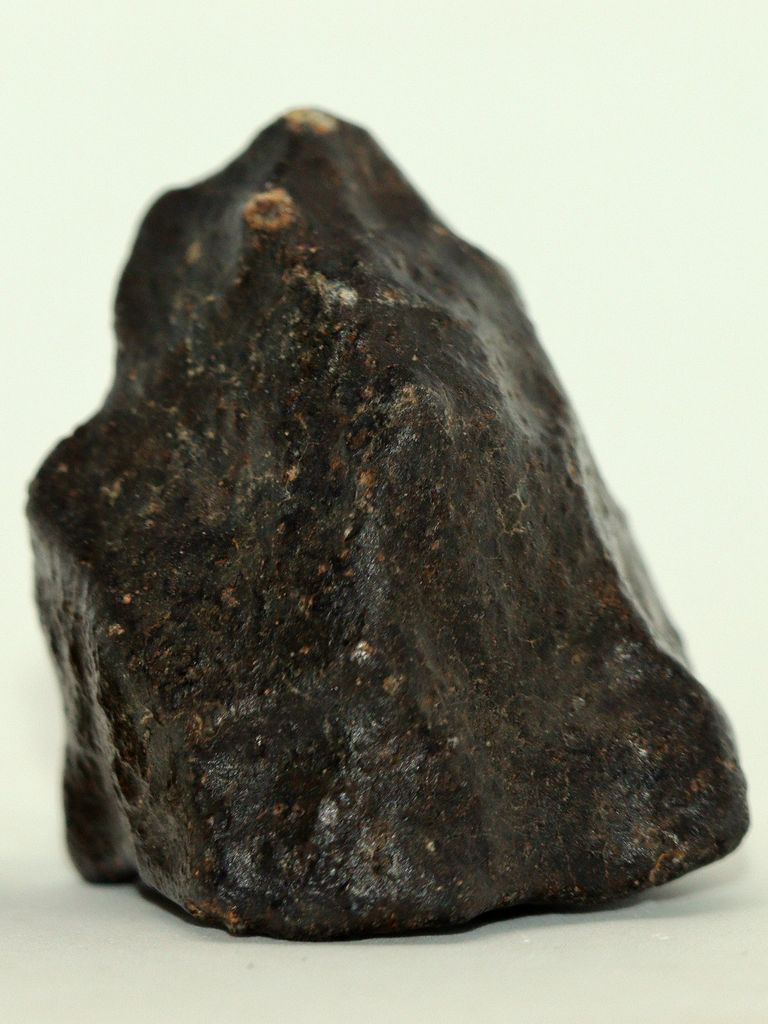
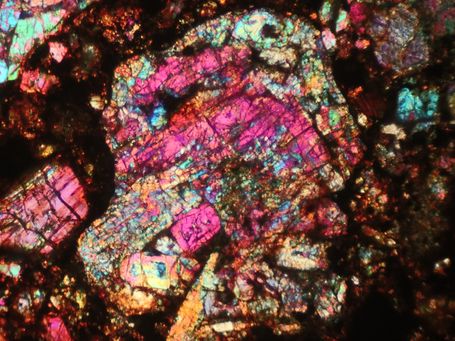
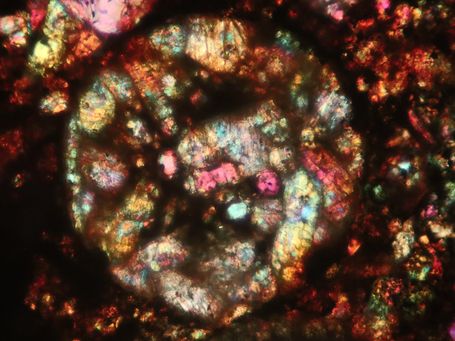
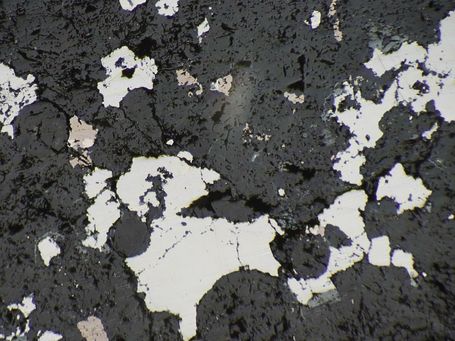
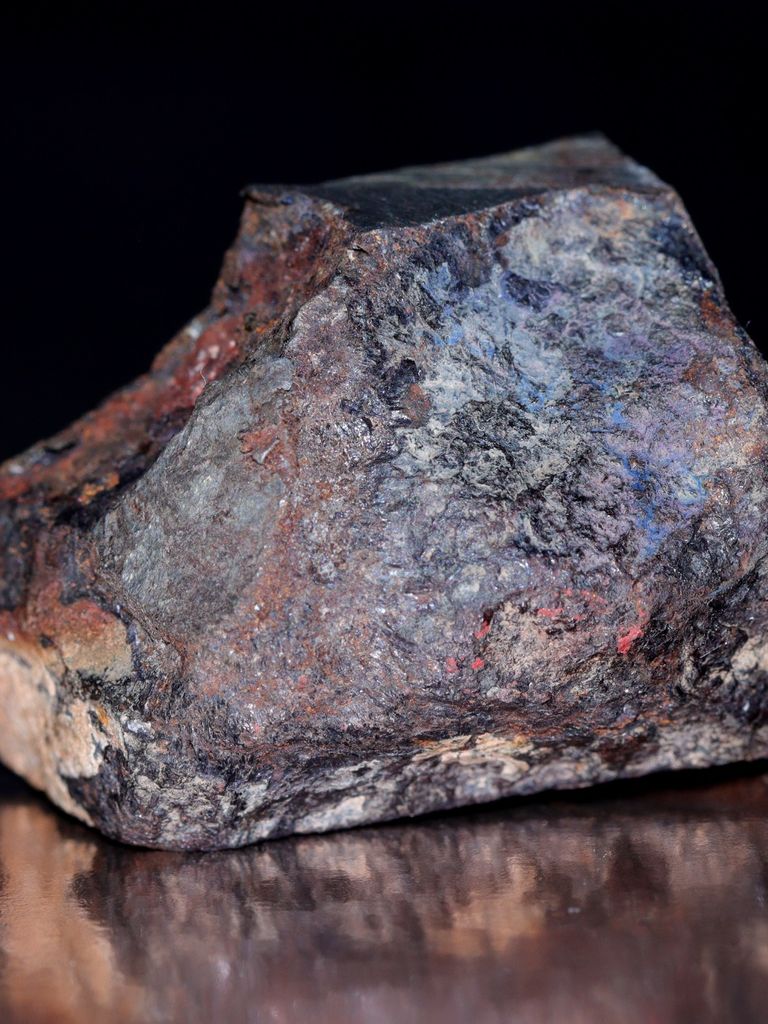
Petrography: Coarse octahedrite with Widmanstätten patterns with bandwidth 1300±230 µm (n=5). Some bands are recrystallized with kamacite grain size 800 µm, others with kamacite grain size 200 µm. Contains dark and comb plessite. Multiple sets of Neumann bands are visible. Rhabdites with grain size 4 µm are visible.
Geochemistry: Composition: Co 6.21 mg/g, Ni 88.8 mg/g, Ga 18.7 µg/g, As 2.59 µg/g, Ir 4.68 µg/g, Au 0.54 µg/g, Cu 167.5 µg/g, Cr 57.9 µg/g. Ge was not measured.
Classification: Iron IIIAB - anomalous. Anomalous designation based on the Co content of 6.21 µg/g (IIIAB have Co < 5.8 µg/g), and the Og texture (most IIIAB are Om)
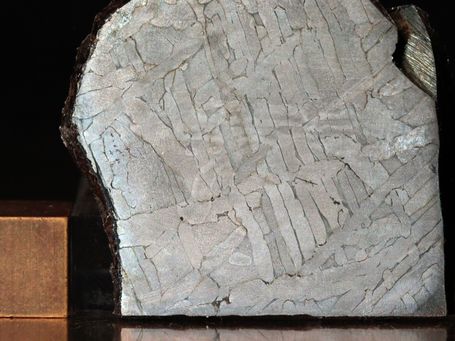
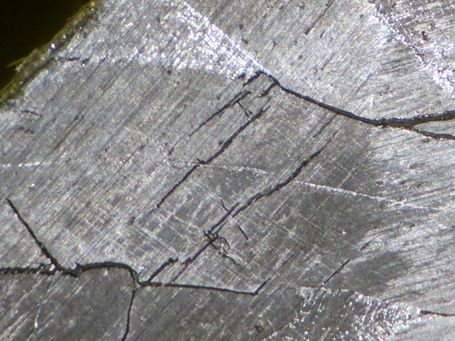
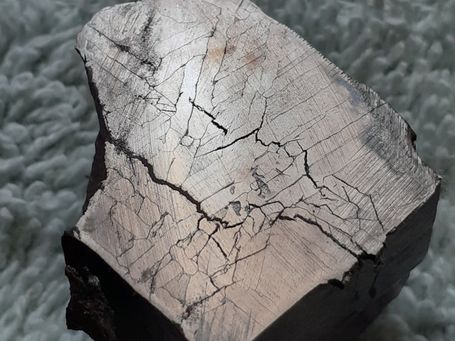
Bir Ounane 005
Petrography: Sample is a polymict breccia comprised of mm-sized lithic and mineral clasts/fragments, and impact glass spherules, set within a fine-grained matrix. Lithic clast lithologies identified include: anorthosites, basalts, impact melt clasts, noritic anorthosites, norites, and high-Fe clasts; mineral clast fragments of irregularly zoned pyroxenes, fayalitic olivine, pleonaste spinel, and silica are also present. Accessory phases identified include Ca-phosphates and troilite.
Geochemistry: Olivine (Fa67.7±29.2, range Fa14.0-97.8, Fe/Mn=82±6, n=14), Pigeonite (Fs47.2±12.3Wo17.8±3.9, range Fs30.0-83.3Wo9.9-24.5, Fe/Mn=54±6, n=20), High-Ca Pyroxene (Fs35.7±11.8Wo33.2±4.9, range Fs11.8-55.2Wo25.2-41.1, Fe/Mn=53±8, n=16), Calcic Plagioclase (An94.3±2.2, range An90.0-97.1, n=21).
Magnetic susceptibility:
Classification: Lunar (regolith breccia) due to its brecciated nature, clast diversity, and the presence of impact glass spherules.
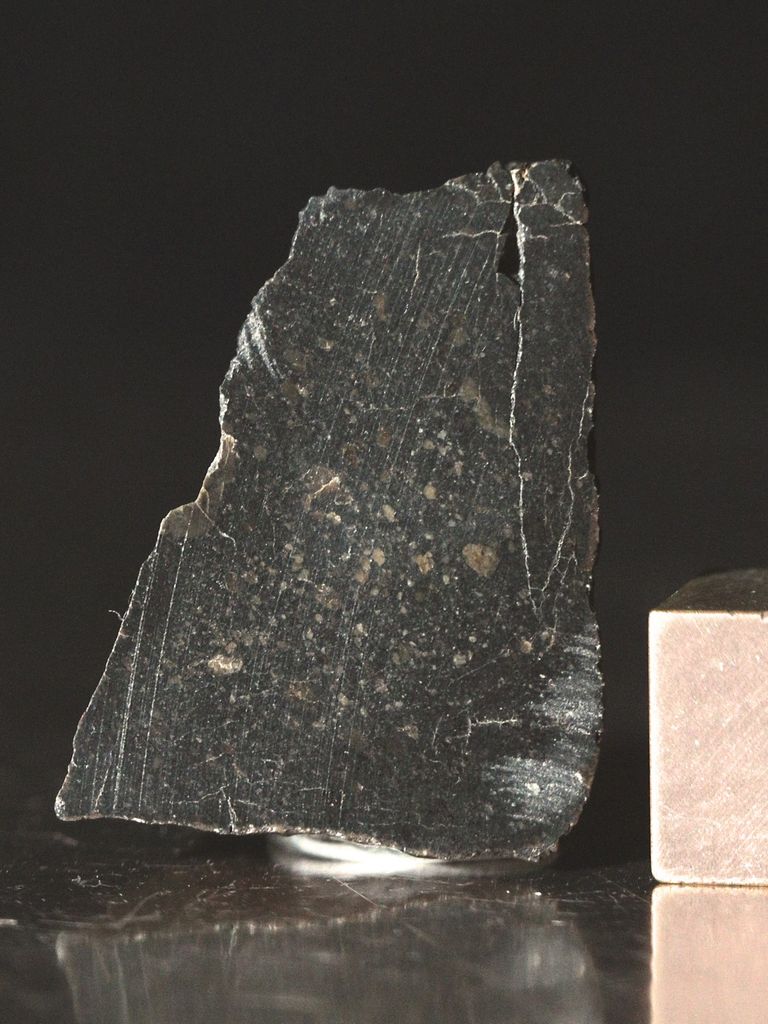
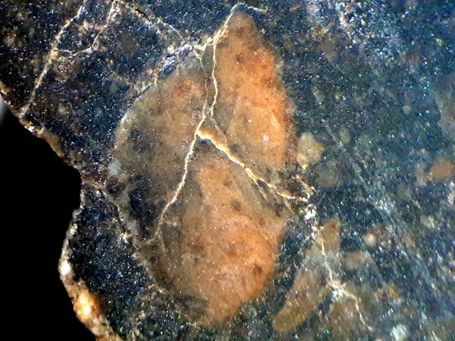
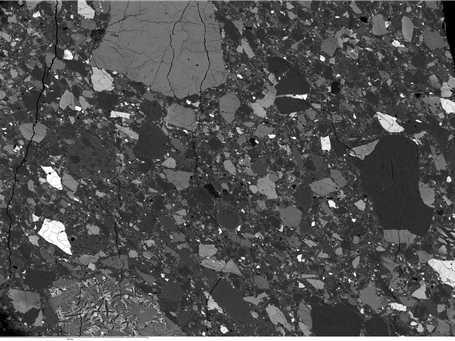
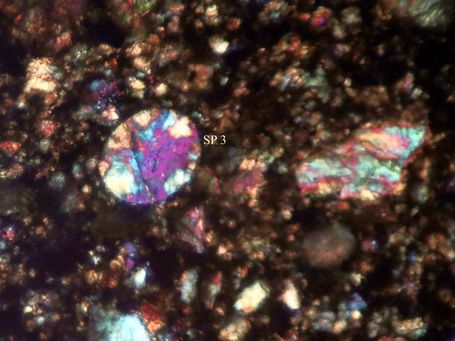
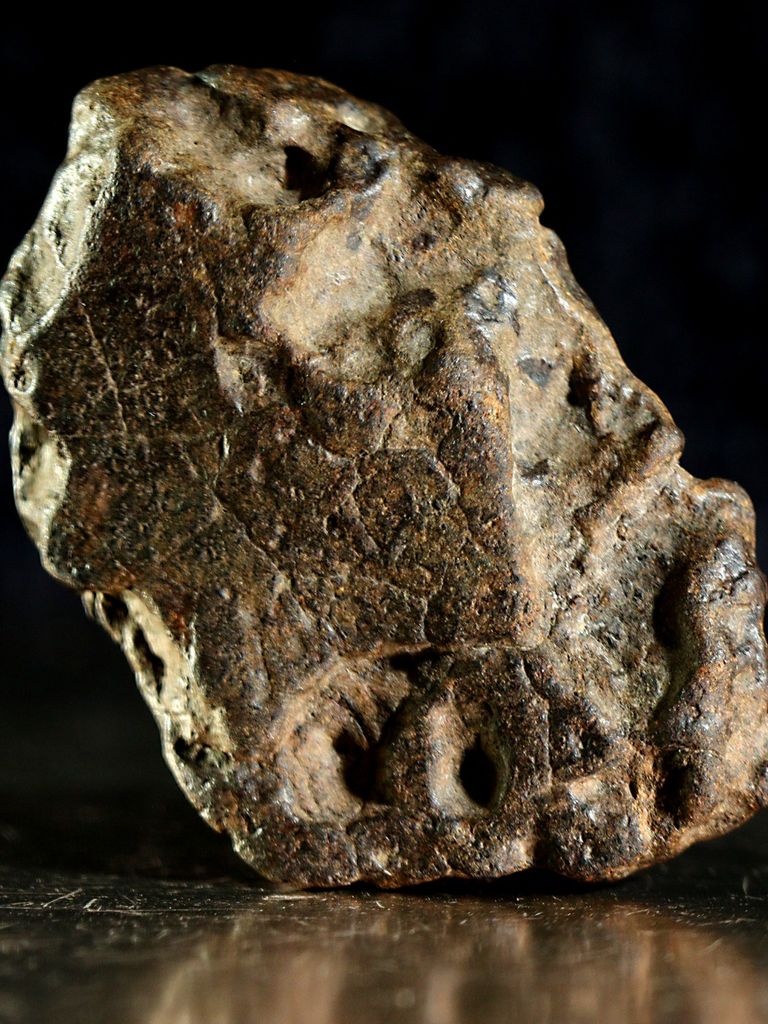
Petrography: Highly recrystallized chondrite with triple junctions. One relict chondrule was observed in the studied polished section.
Geochemistry: Olivine Fa31.4 (n=1). Orthopyroxene Fs24.9±0.3Wo2.0±0.2. Ca-pyroxene Fs10.5Wo44.1 (n=1).
Magnetic susceptibility: 2.89
Classification: ordinary chondrite (LL7). Type 7 based on texture and Wo content of orthopyroxene.
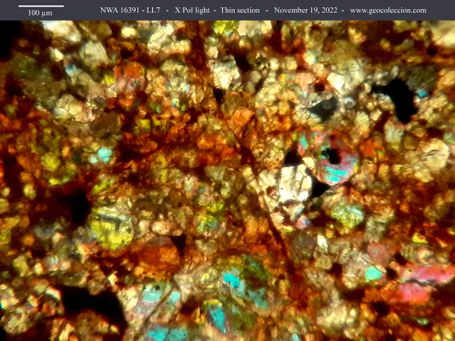
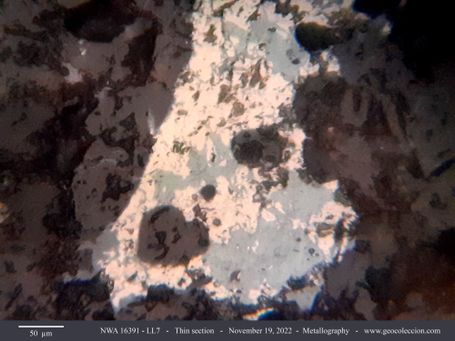
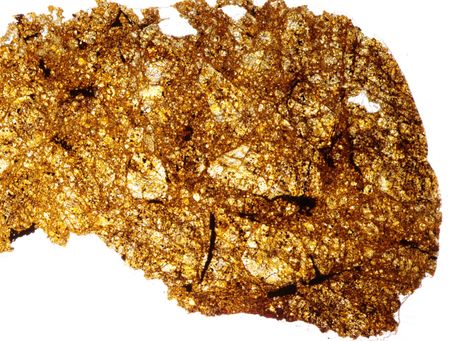
Northwest Africa 17050
Petrography: The polished thin section shows a chondritic texture, with well developed chondrules, mostly radial pyroxene (RP) and porphyritic olivine and pyroxene (POP) types, up to 0.3 mm across (± 0.2 mm, n=20). Olivine presents irregular fractures and a weak undulatory extinction. FeNi and sulphides were observed.
Magnetic susceptibility: Log X; 4.68
Classification: Ordinary chondrite H4 S3 W4.
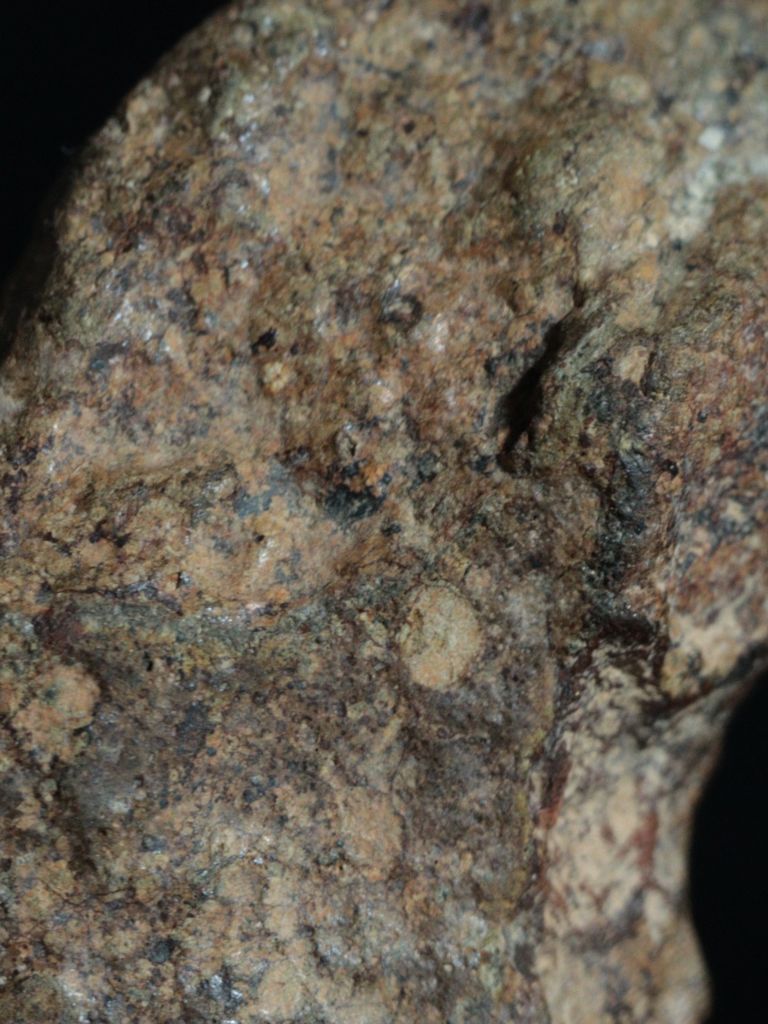
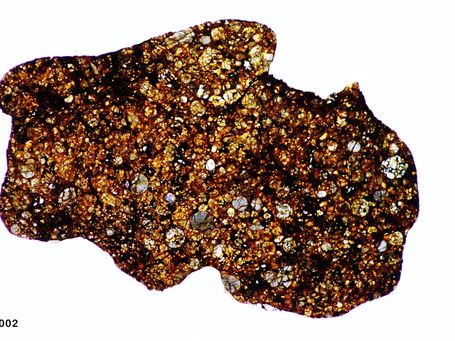
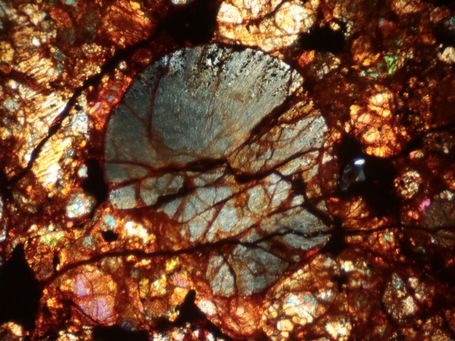
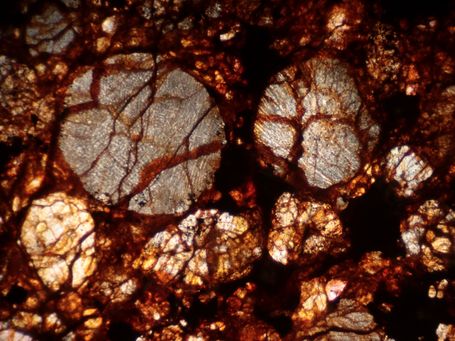
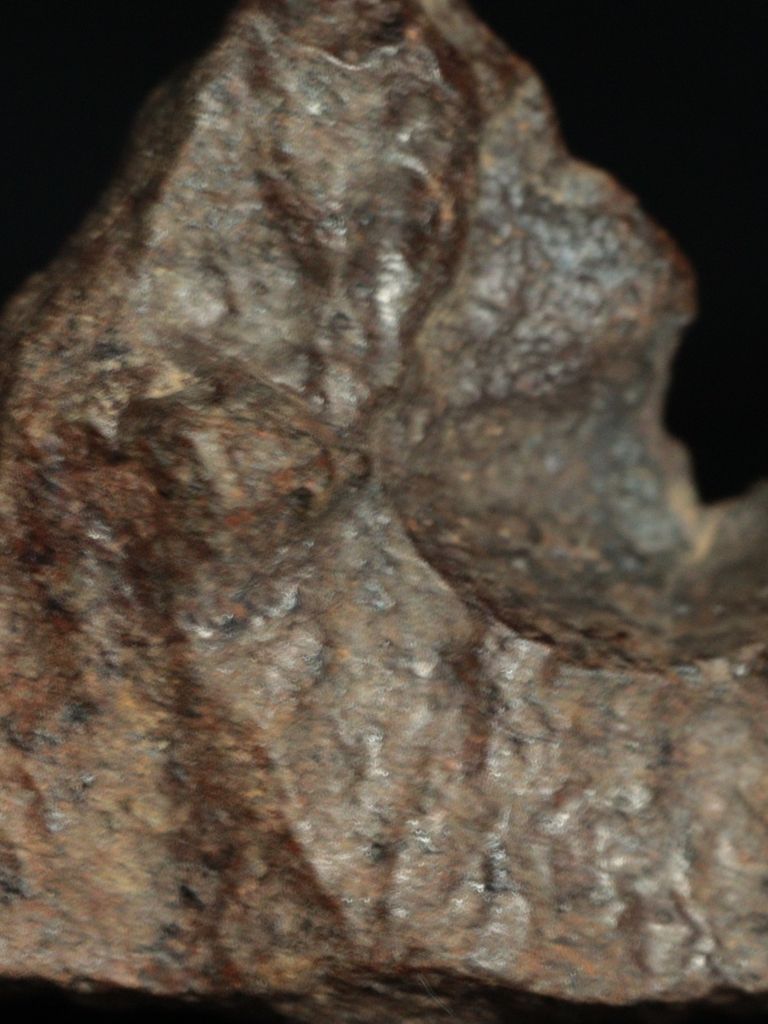
Northwest Africa 17051
Petrography: Thin section shows an ordinary chondrite, with cluster texture (ovoid chondrules as described in Metzler 2012, MAPS 47:2193-2217). Opaque matrix. Zoned olivine with planar and irregular fractures. FeNi and sulphides were observed.
Magnetic susceptibility: Log X = 4.78
Classification: Ordinary chondrite L4 S3 W3.
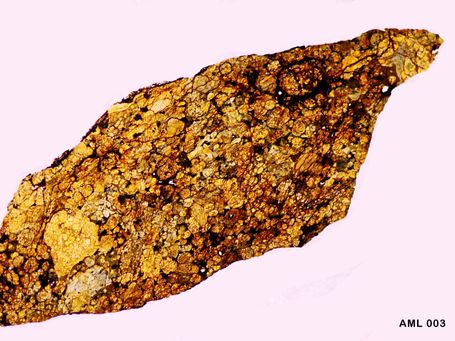
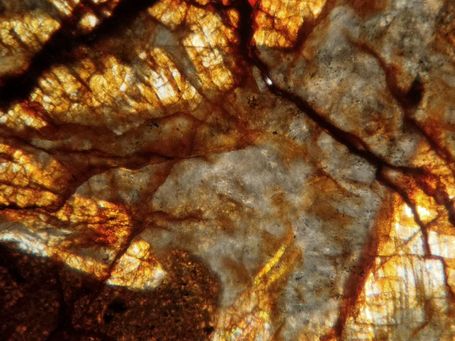
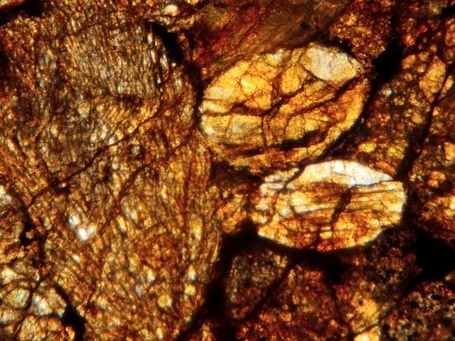
Northwest Africa 17052
Petrography: Thin section shows a chondritic texture, brecciated, with extremely diffuse chondrules. There is a metallic phase occuping 2% of volume as dispersed grains. Secondary feldspar grains are mostly < 50 µm.
Magnetic susceptibility: Log X; 3.68
Classification: Ordinary chondrite LL6 breccia S1 W2.
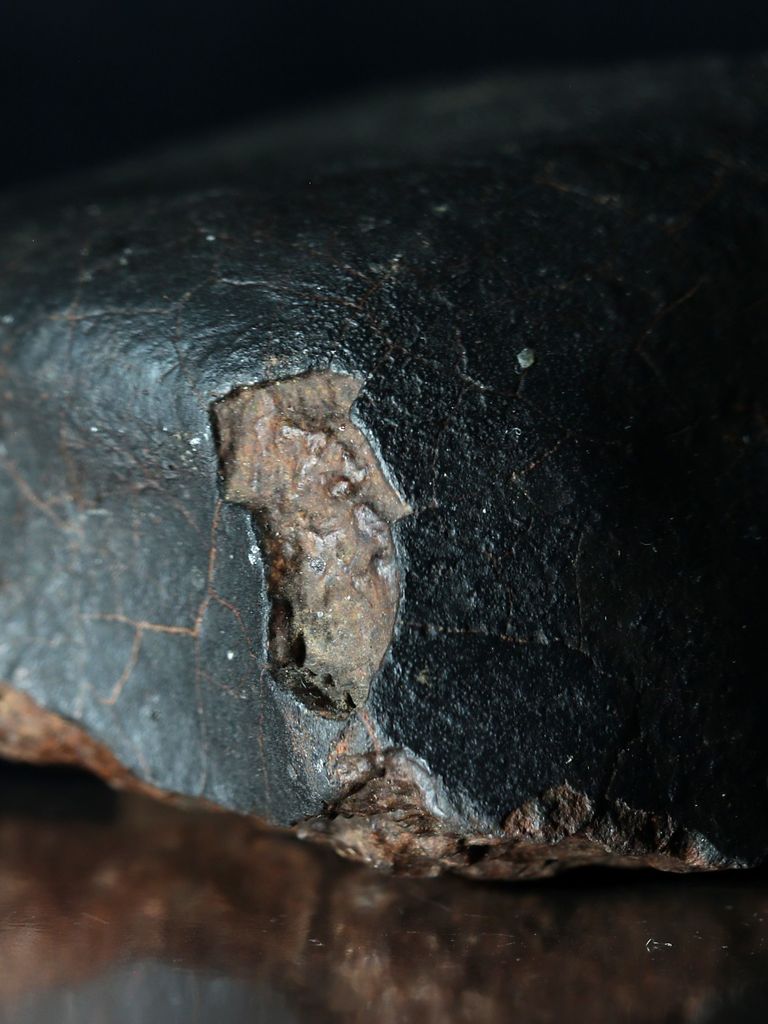
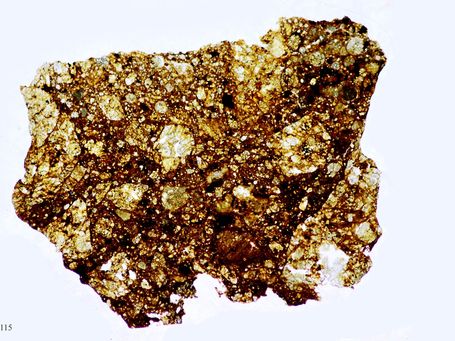
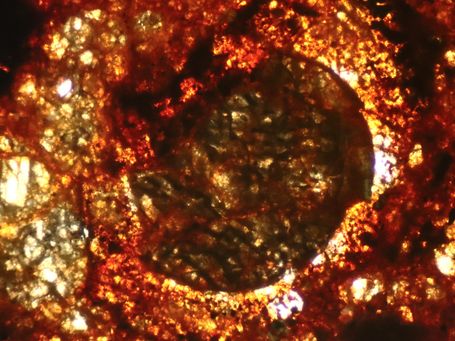
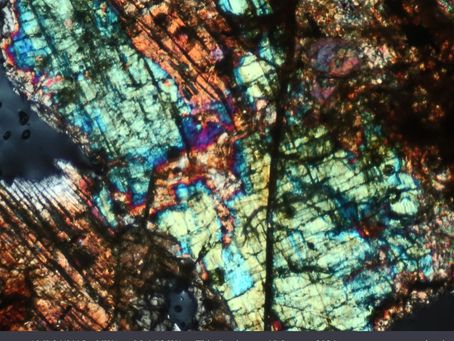
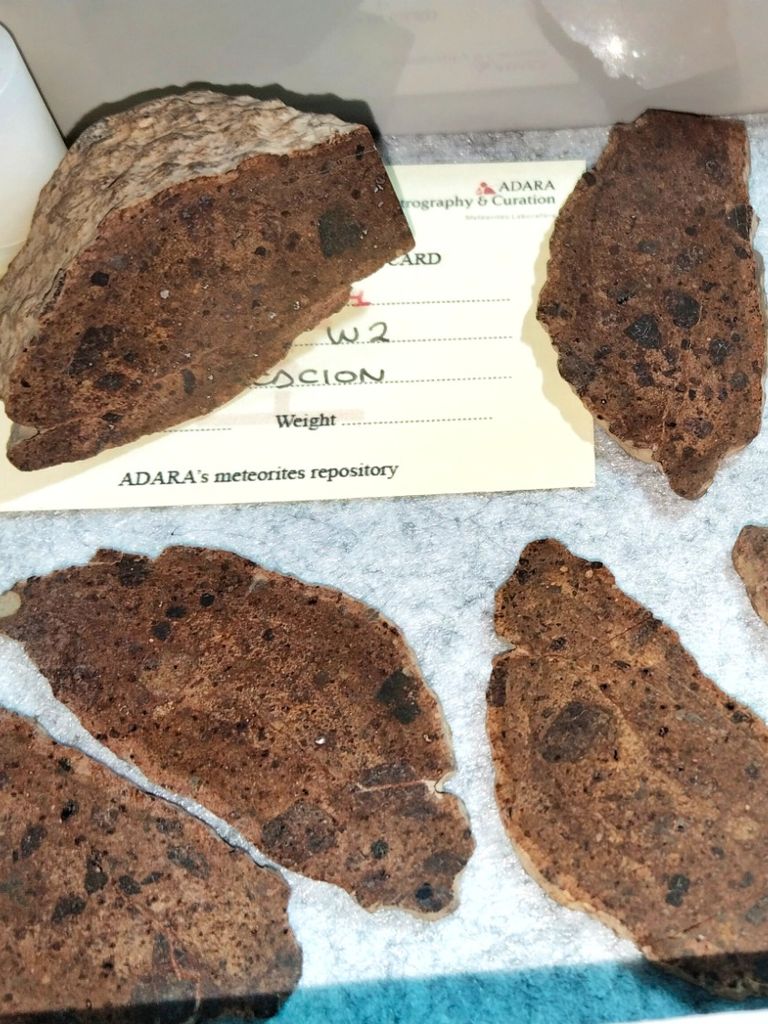
Dar al Gani 1071
Petrography: The analyzed thin sections show a chondritic, brecciated textured rock, composed of chondrules up to 0.8 mm across (± 0.2 mm, n=12) and highly recrystallized clasts up to 1.2 cm. FeNi and sulphides were observed.
Magnetic susceptibility: Log X = 3.99
Classification: Ordinary chondrite LL5 breccia S2 W2.
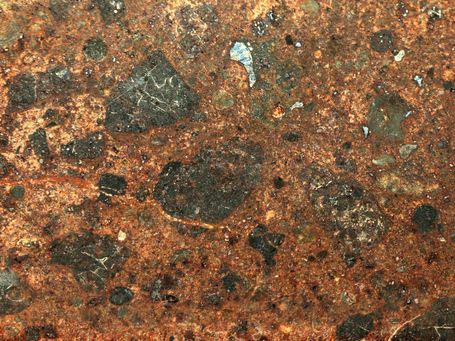
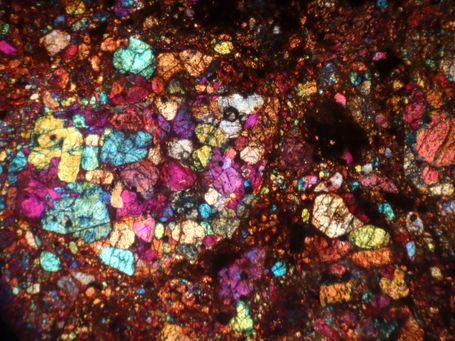
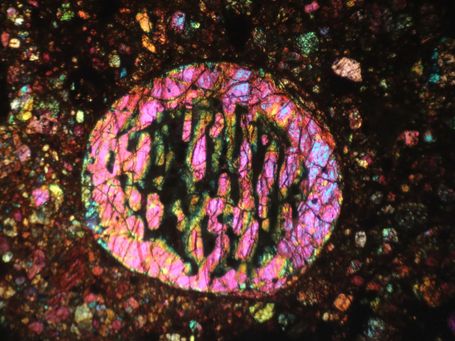
Ain Ben Tili 003
Petrography: Thin section shows an ordinary condrite, with hardly recognizable chondrules. Some other chondrules can be seen more clearly, up to 0.4 ± 0.2 mm across (n=9). Olivine is showing irregular fractures. FeNi and sulphides were observed.
Magnetic susceptibility: Log X; 5.13
Classification: Ordinary chondrite H6 S2 W2.
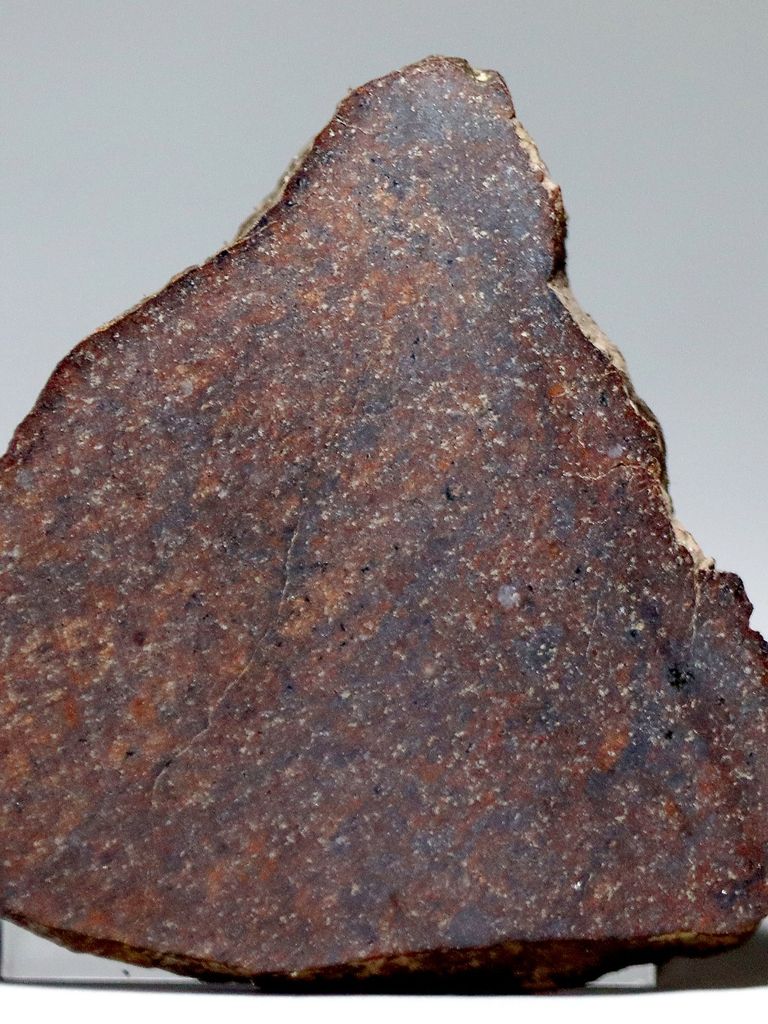
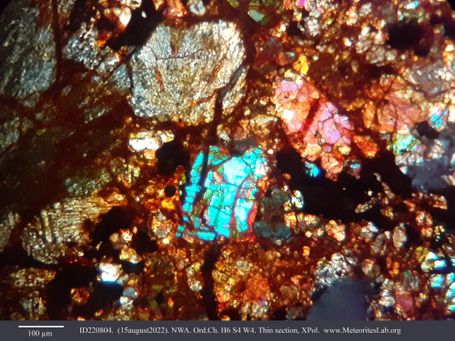
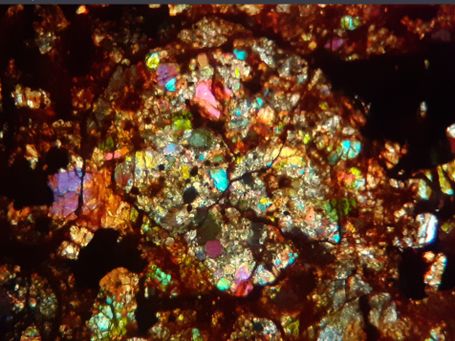
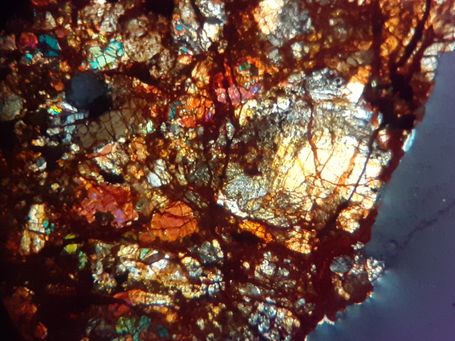
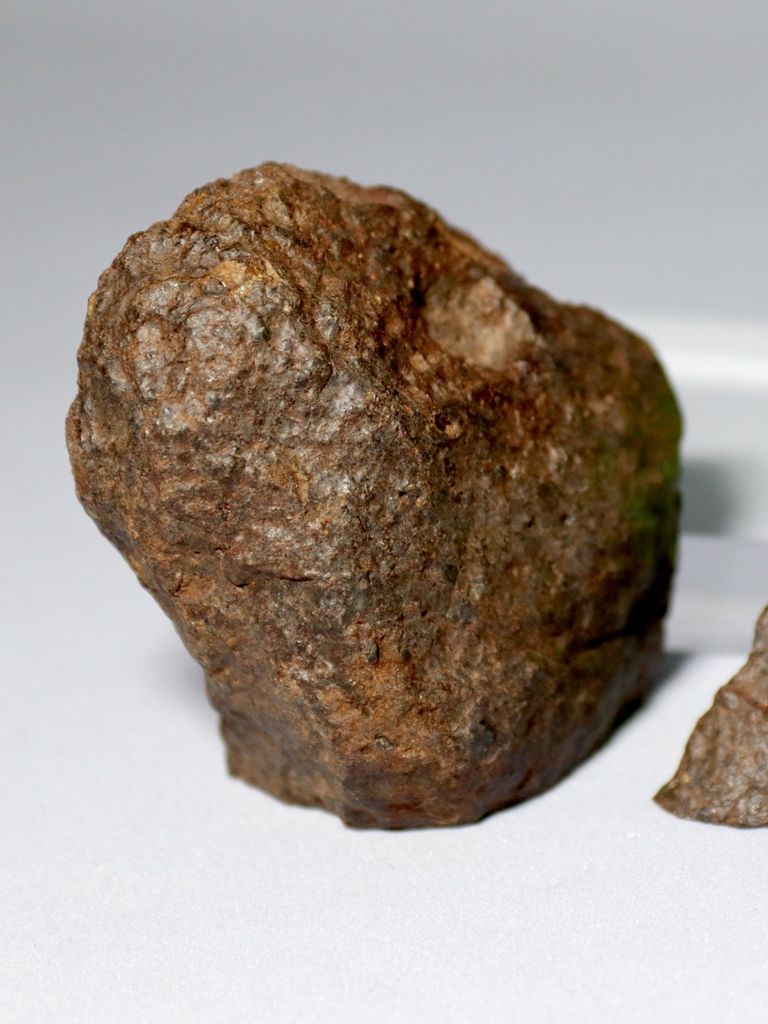
Northwest Africa 17054
Petrography: Examination of the thin section reveals a chondritic texture, composed of hardly recognizable chondrules, up to 1 mm across (a hugh 6 mm olivine porphyritic chondrule was observed. n=7). Olivine has irregular fractures. Low-Ca and Ca pyroxene were observed. Accessory iron (FeNi) almost converted into iron hydroxides, and sulphides are present.
Magnetic susceptibility: Log X = 4.54
Classification: Ordinary chondrite LL5 S2 W4.
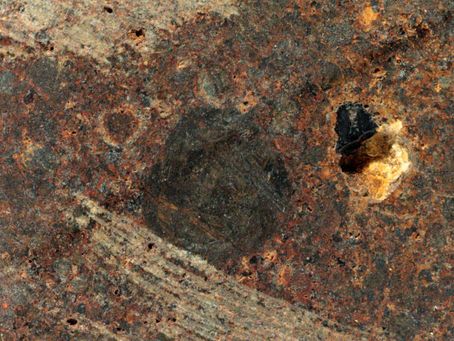
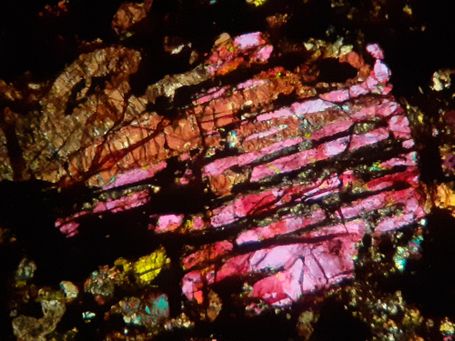
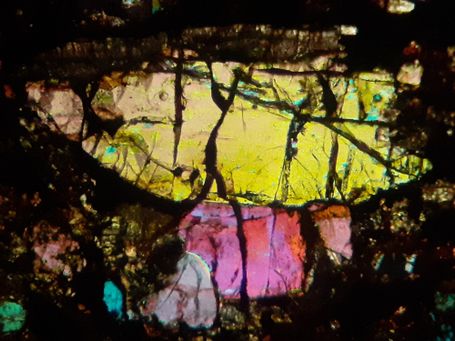
Northwest Africa 17055
Petrography: Examination of the thin section reveals a chondritic texture, composed of hardly recognizable chondrules, chondrule fragments and mineral clasts. The matrix is recrystallized. Olivine shows irregularr fractures. FeNi (about 3 vol%) as dispersed grains.
Magnetic susceptibility: Log X; 3.90
Classification: Ordinary chondrite LL6 S2 W4.
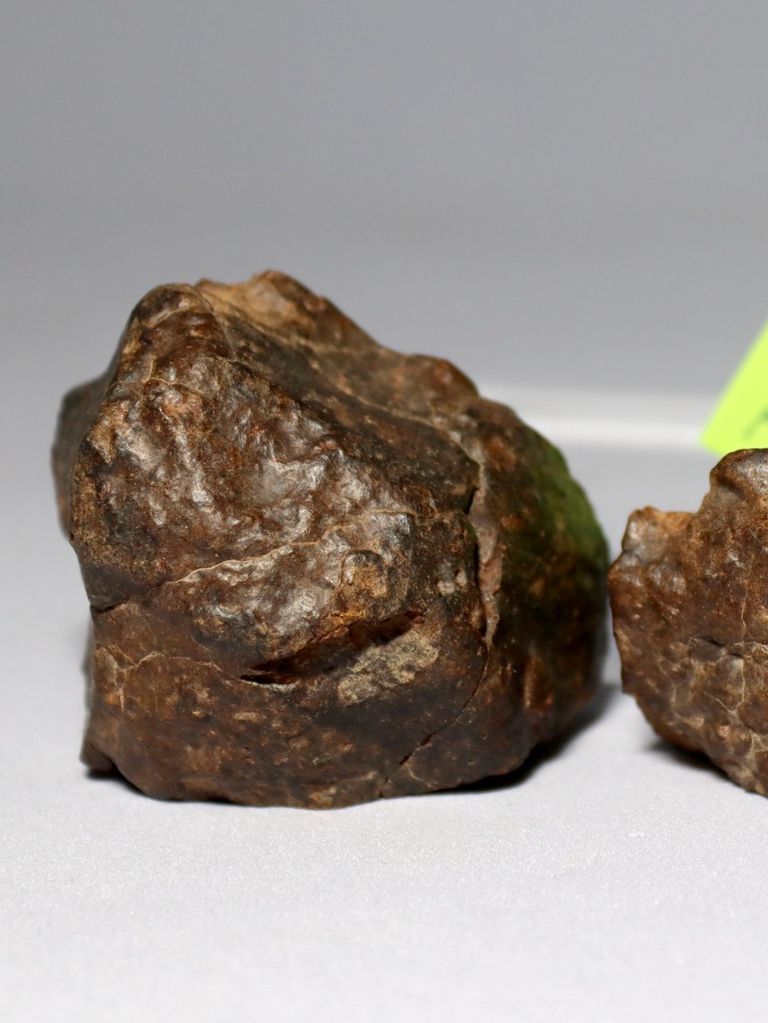
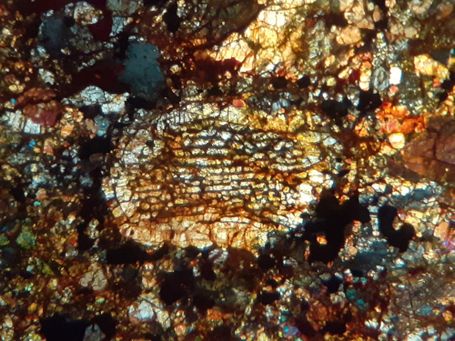
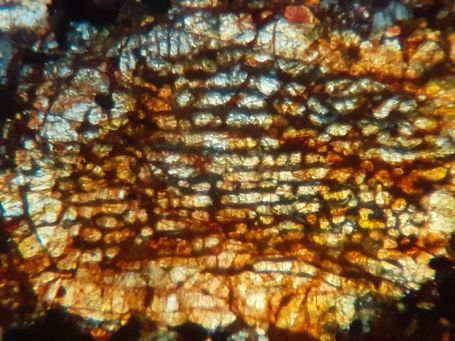
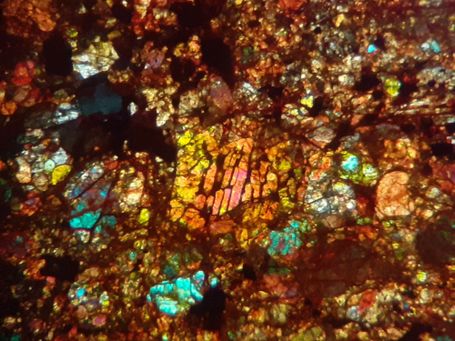
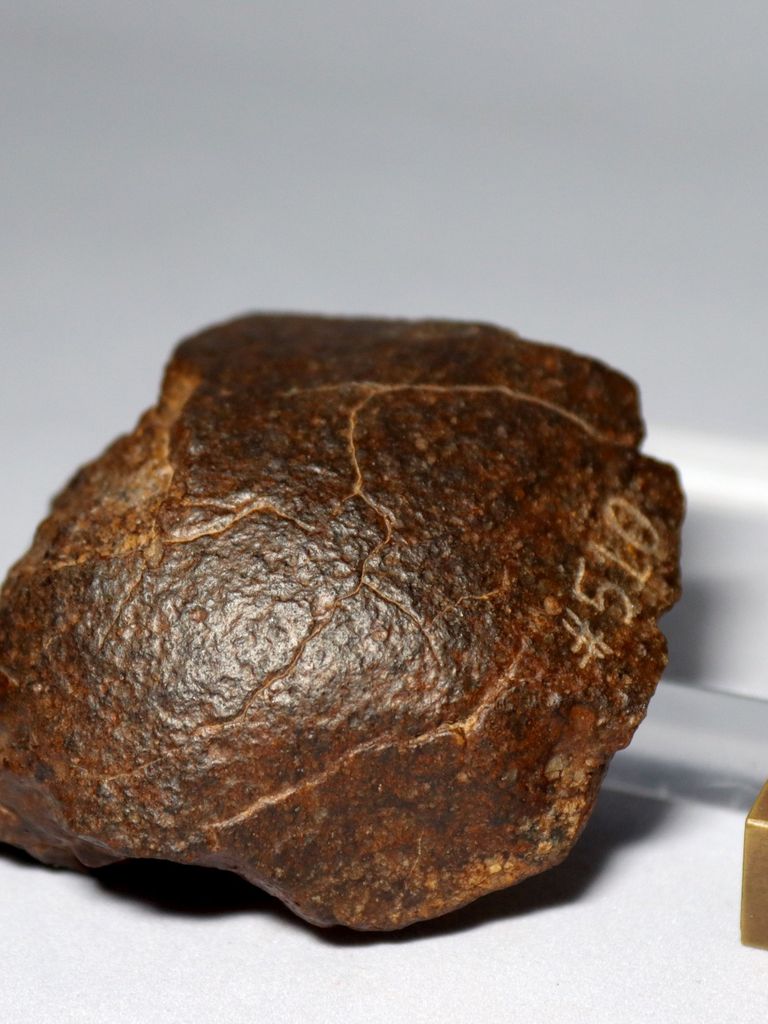
Northwest Africa 17056
Petrography: Examination of the thin section reveals a chondritic texture, composed of hardly recognizable chondrules, chondrule fragments and mineral clasts. FeNi is almost altered to hydroxides. Quench melt veins are present throughout. Irregular and planar fractures were observed in olivine. There is iron sulfide.
Magnetic susceptibility: Log X = 4.54
Classification: Ordinary chondrite L6 S3 W3.
Northwest Africa 17057
Petrography: Examination of the thin section reveals a chondritic texture, composed of chondrules up to 0.3 mm (±0.2 mm, n=18), chondrule fragments and mineral clasts. Metal is partially altered into hydroxides. Iron sulfides are almost absent, but some small grains up to 20 µm were observed in the thin section. Olivine is clear, with a weak undulatory extinction.
Magnetic susceptibility: Log X; 5.28
Classification: Ordinary chondrite H6 S1 W2.
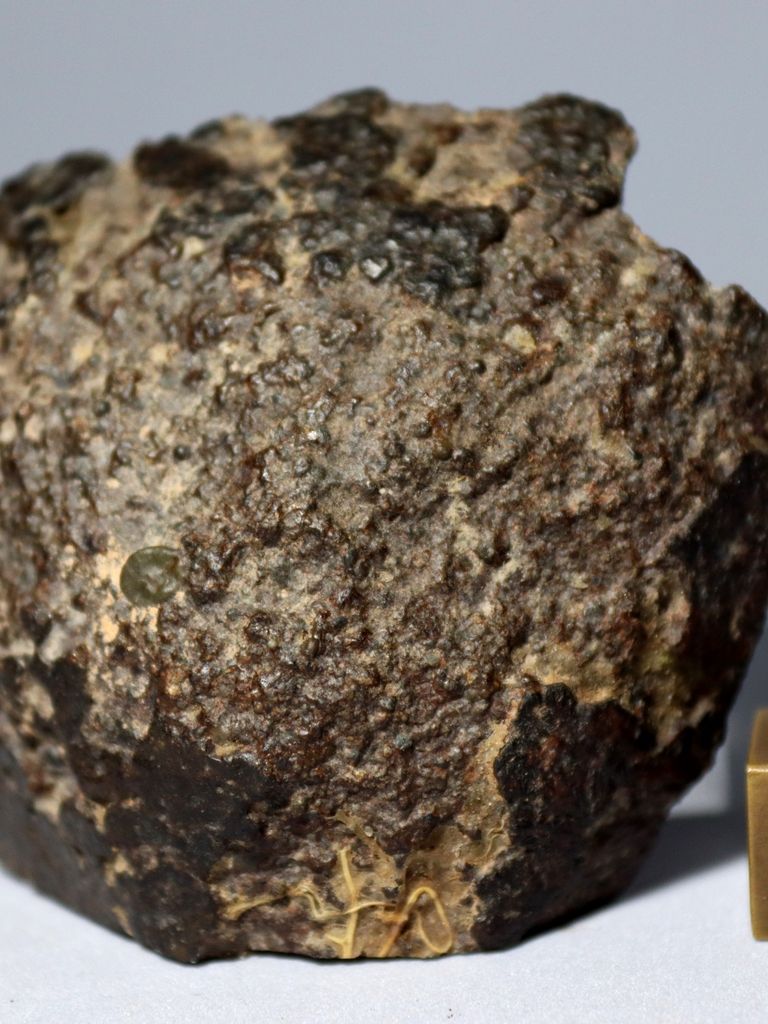
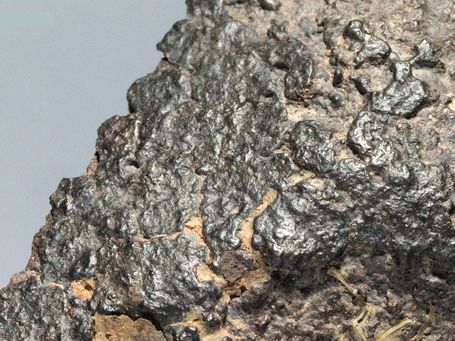
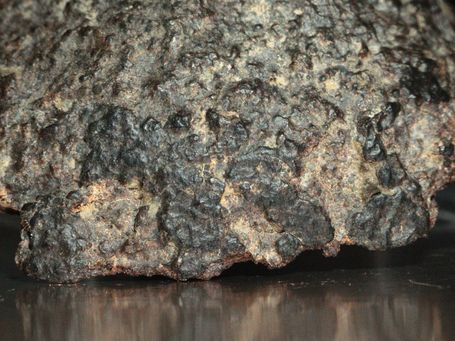
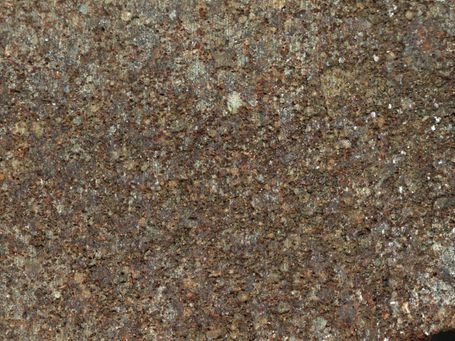
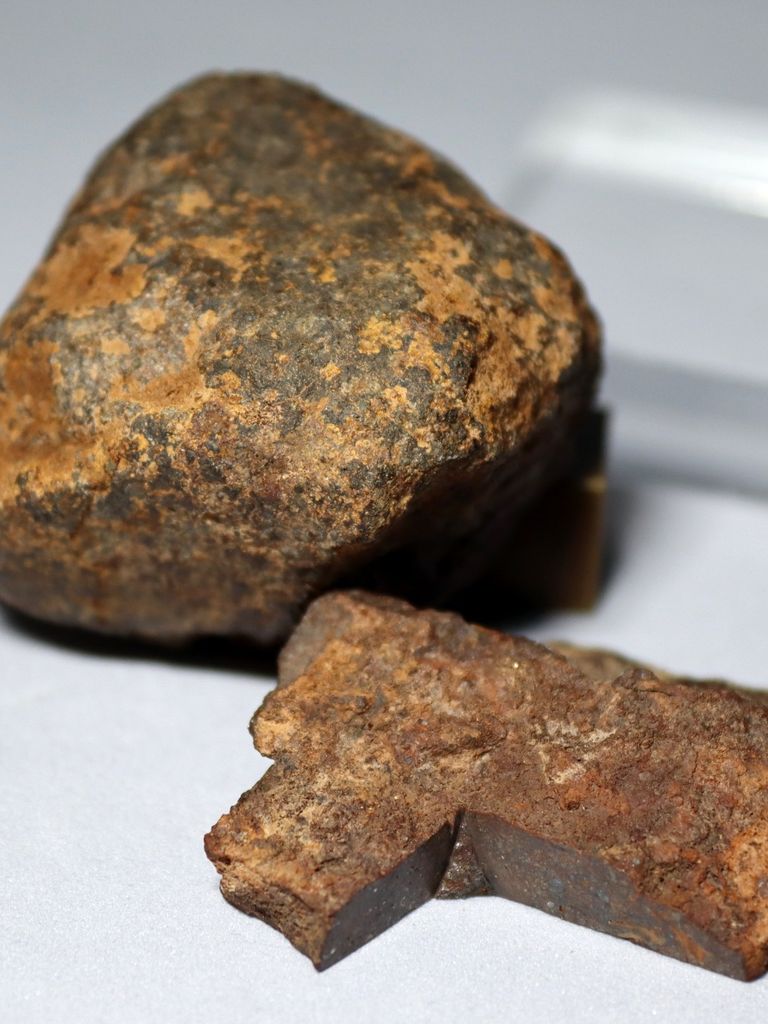
Northwest Africa 17058
Petrography: Examination of the polished thin section reveals a chondritic texture, with olivine and pyroxene porphyritic chondrules up to 0.3 mm (± 0.2 mm, n=6) in a porous matrix. Olivine displays undulatory extinction. FeNi is present, mainly converted into hydroxides. Troilite is also present.
Magnetic susceptibility: Log X = 5.06
Classification: Ordinary chondrite H6 S2 W3.
Northwest Africa 17139
Petrography: (J. Garcia, ADARA) Thin section shows chondritic texture composed of chondrules up to 0.4 ± 0.3 mm (n=6) including types BO, PO, GOP and RP, and chondrule fragments set in a porous matrix. High amount of FeNi is present. Olivine is clear, with a sharp optical extinction. Sulfides are also present.
Magnetic susceptibility: Log X; 5.39
Classification: Ordinary chondrite H5 S1 W1.
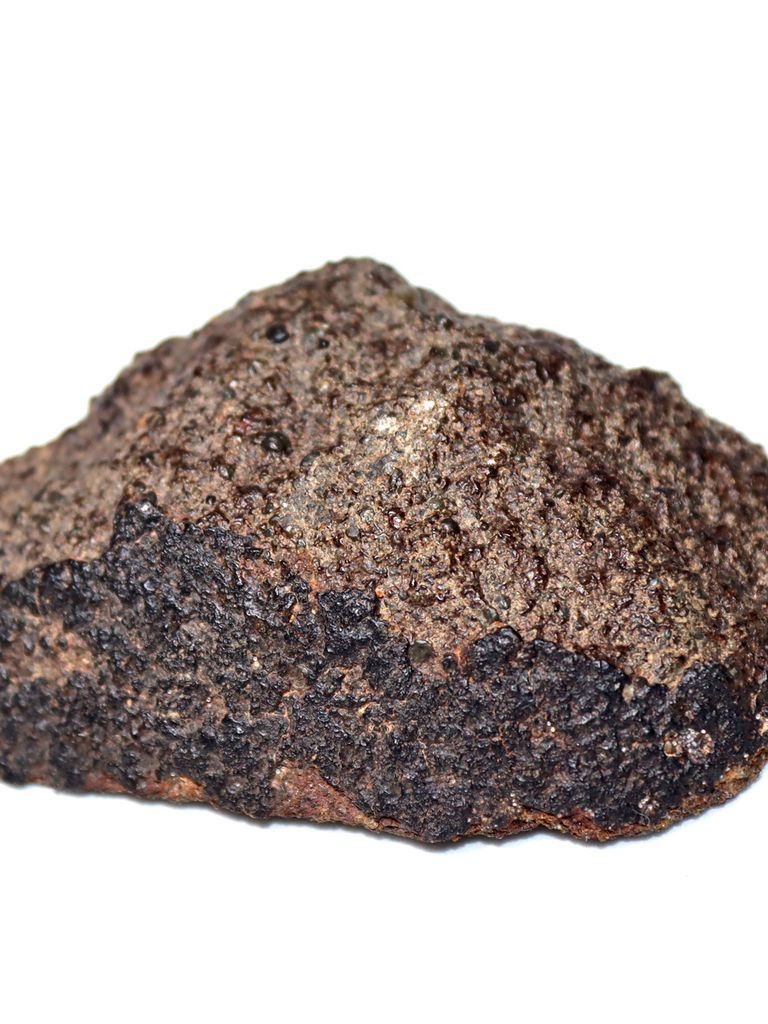
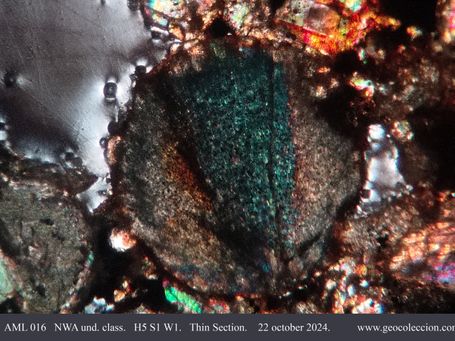
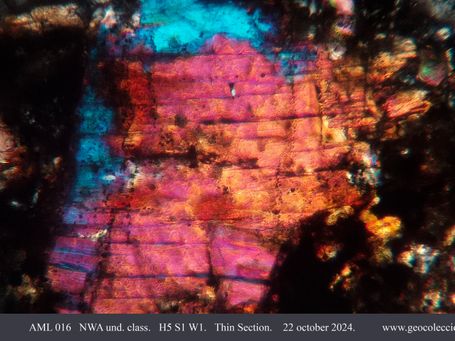
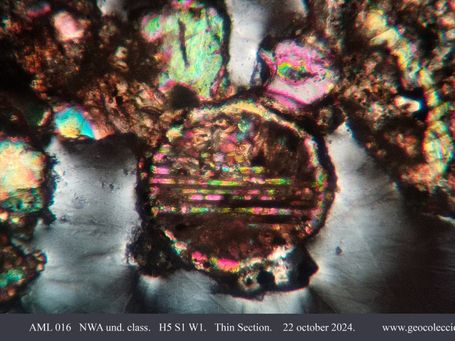
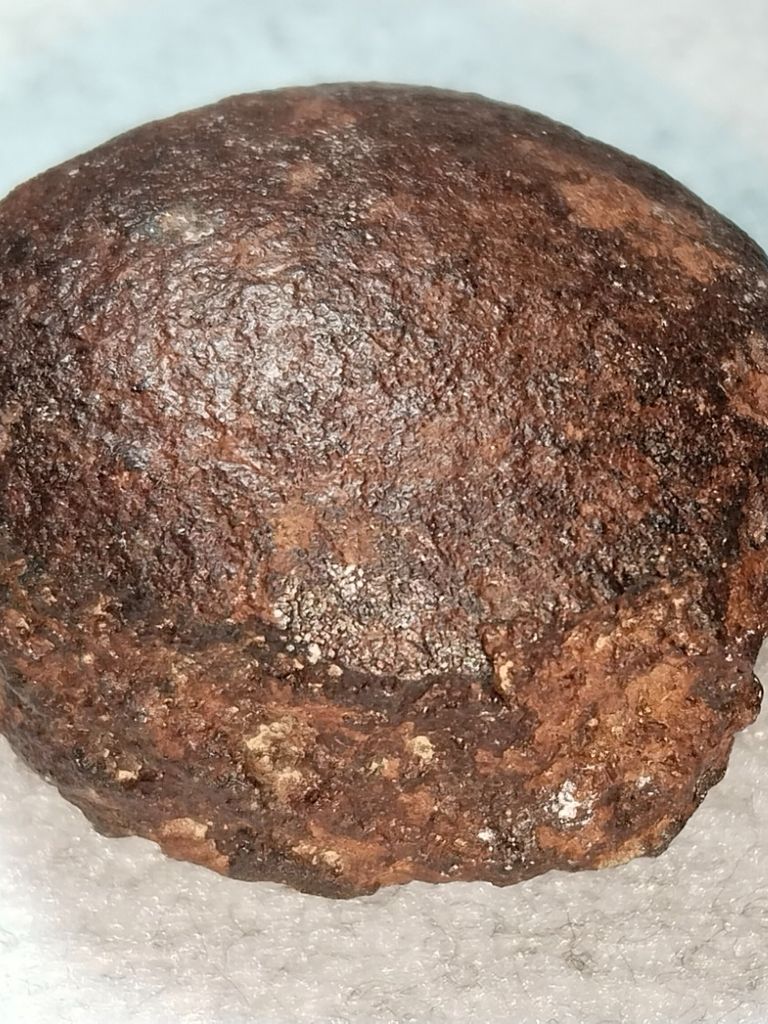
Northwest Africa 17141
Petrography: (J. Garcia, ADARA) Polished section shows an ordinary chondrite with extremely diffuse chondrules up to 350 ± 100 µm (n=4). FeNi and sulfides are present.
Magnetic susceptibility: Log X = 4.84
Classification: Ordinary chondrite H6 W3.
Northwest Africa 17143
Petrography: (J. Garcia, ADARA) Thin section shows a chondritic texture composed of some well-defined equilibrated chondrules containing devitrified glass up to 520±280 µm (n=15), mainly of types POP, PO, GO, RP and Cryptocrystalline. Olivine displays a sharp optica extinction and some irregular fractures. FeNi metal and sulfides are present.
Magnetic susceptibility: Log X; 5.12
Classification: Ordinary chondrite H4 S1 W3.
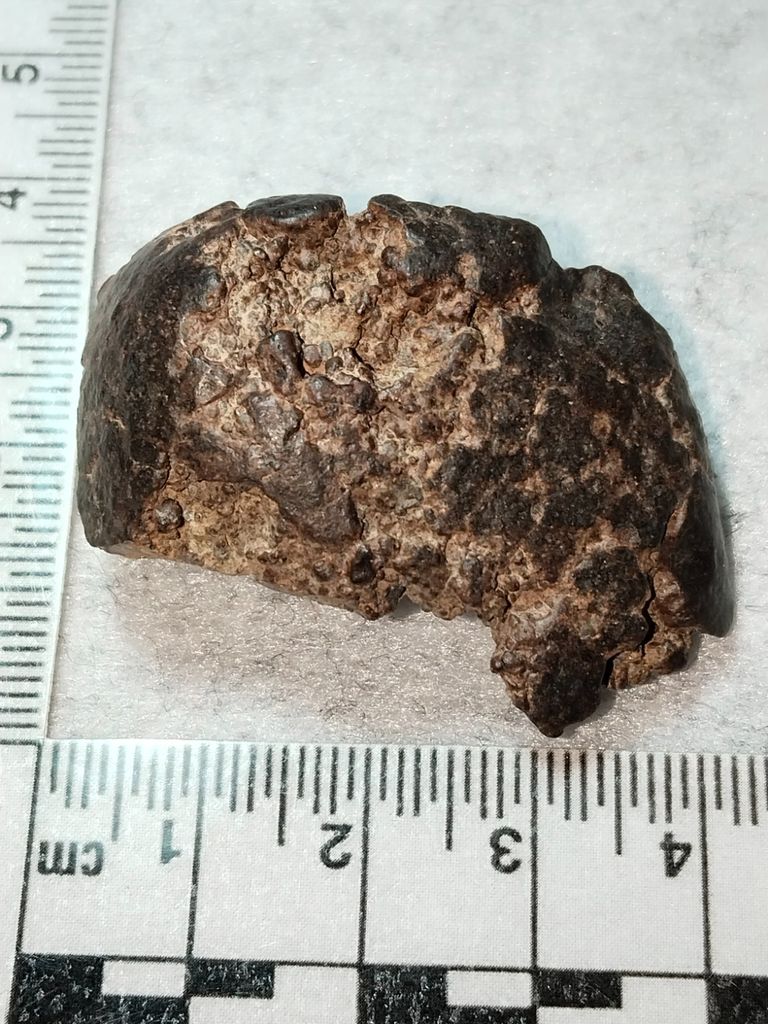
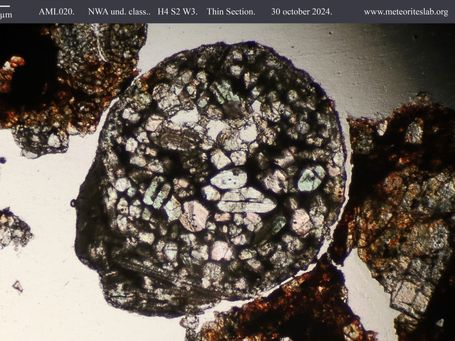
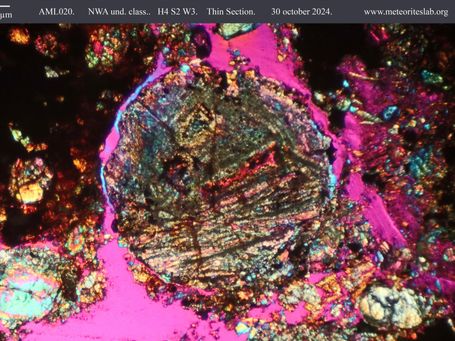
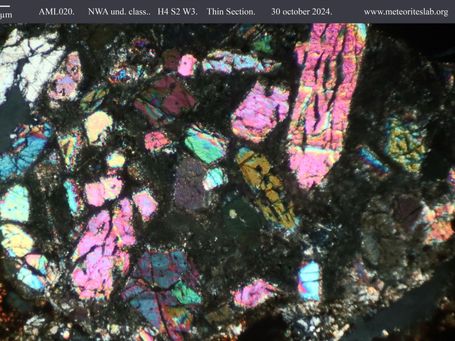
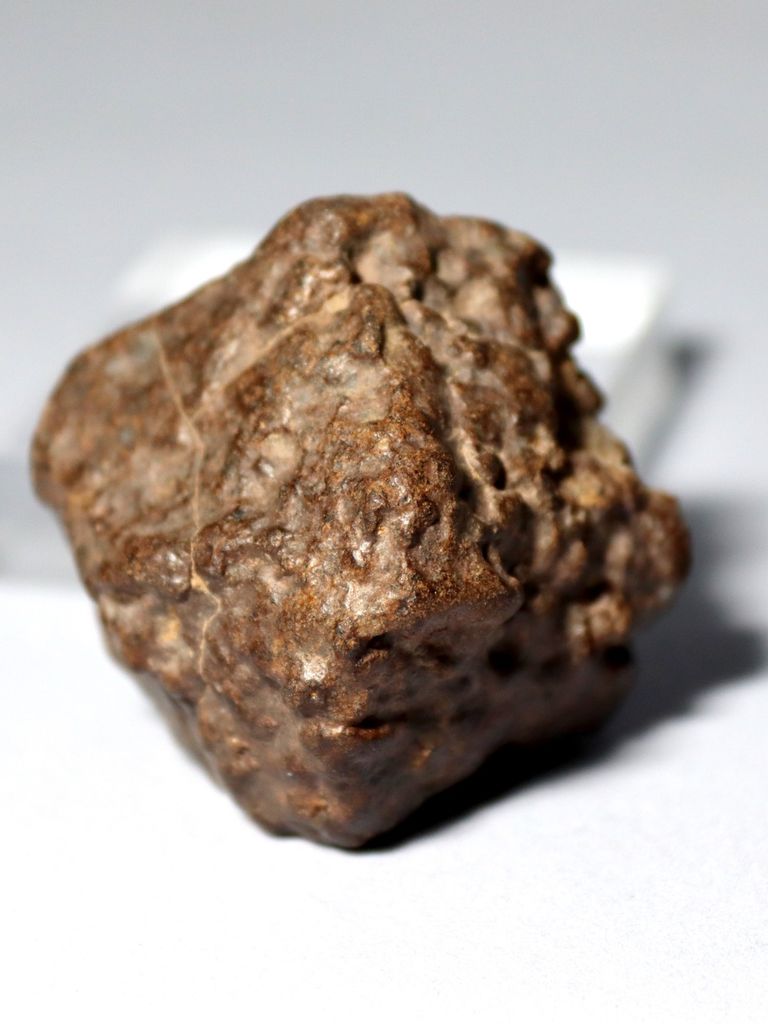
Wad Awzireft 001
Petrography: Polished thin sections show chondritic texture, composed of chondrules up to 0,8 ± 0,3 mm across (n=30) in a wide variety of types (including RP, PO, BO, GOP and Cryptocrystalline), and chondrules fragments. FeNi (partially converted to iron hydroxides) and troilite were observed.
Magnetic susceptibility: Log X = 4.75
Classification: Ordinary chondrite L5 S1 W4.
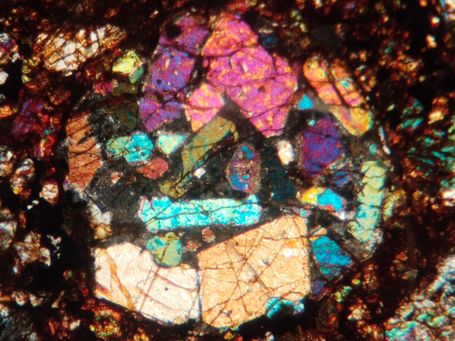
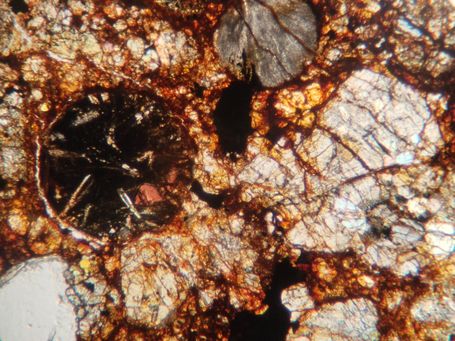
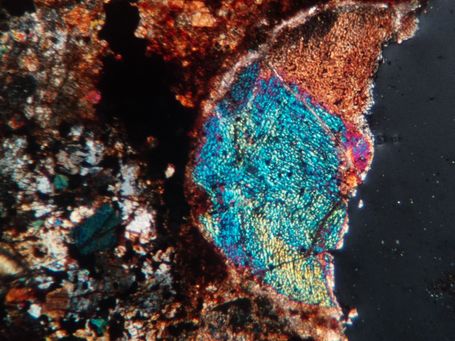
Northwest Africa 17204
Petrography: (J. Garcia, ADARA) Thin section shows a brecciated texture, composed of disaggregated eucritic debris and some lithic eucrite clasts, set in a gray, fragile, light matrix. Minerals include anorthite, pigeonite, fayalite, augite, silica polymorph, ilmenite, chromite and troilite. Fe metal is also present.
Geochemistry; Low-Ca pyroxene (Fs53.9±3.0 Wo5.2±1.1, FeO/MnO=31-37, n=15); Ca Pyroxene (Fs25.4.5±2.4 Wo39.9±1.3, FeO/MnO=27-31, n=15); Orthopyroxene host (Fs34.7±3.3 Wo3.1±0.8, FeO/MnO=25-28, n=15); Clynopyroxene exolution lamella (Fs15.6±1.2 Wo42.4±0.8, FeO/MnO=27-30, n=15); Olivine (Fa92.6±2.0, FeO/MnO=41-42, n=10); Plagioclase (An 90.4±3.1, n=20).
Magnetic susceptibility: Log X; 3.27
Classification: Polymict Eucrite.
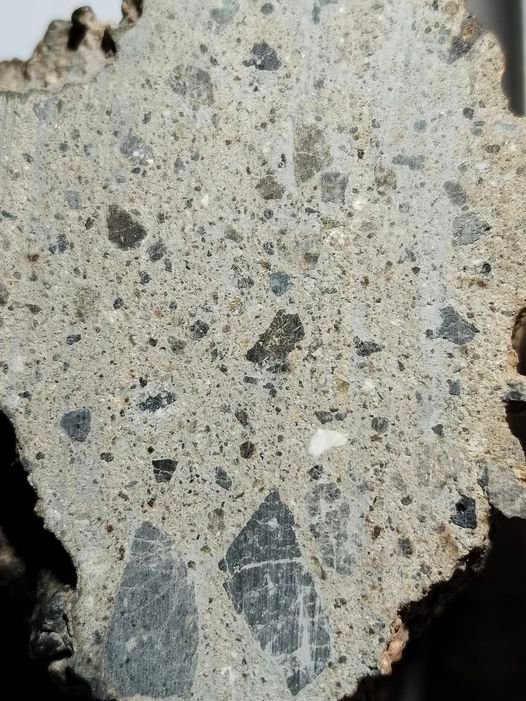
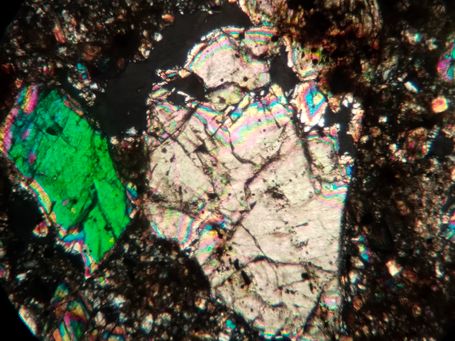
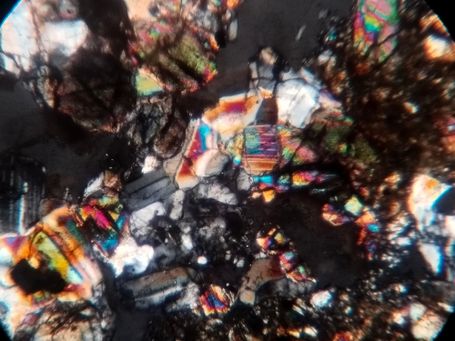
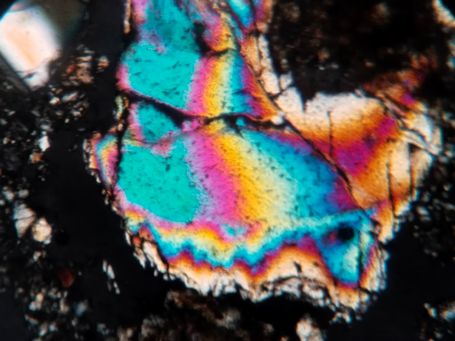

Northwest Africa 17049
Petrography: The analyzed polished thin section reveals a chondritic textured rock, with well developed chondrules up to 0.5 (±0.4) mm across (n=35), and chondrule fragments. Chondrule types dominated by PO, POP, RP, PP, and BO, with presence of primary igneous glass. Abundant FeNi and sulphides are present.
Magnetic susceptibility: Log X = 4.96
Classification: Ordinary chondrite L3 S1 W1.
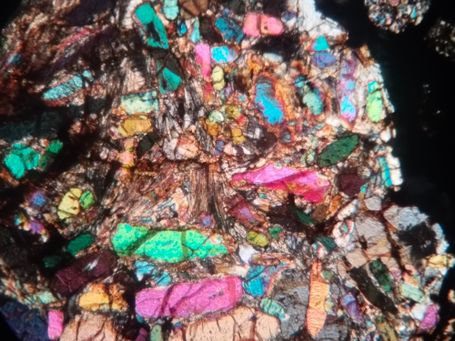
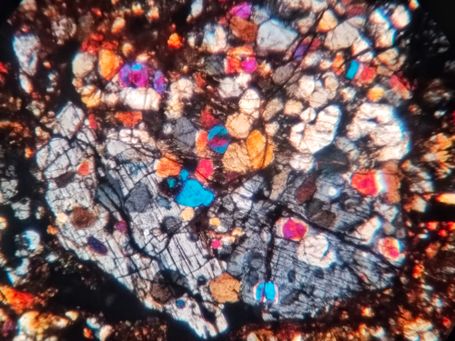
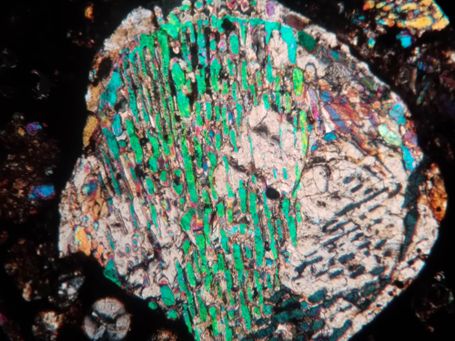
Northwest Africa 17269
Petrography: (J. Garcia, ADARA) Thin section shows chondritic texture containing chondrules up to 410±108 µm (n=17), and chondrule fragments embeeded in a fine grained, yellowish matrix. Opaques are chromite and FeNi sulfides. Metallic iron is absent. Low-Ca pyroxene was not observed.
Geochemistry; Olivine: Fa 39.4 ± 0.5 Fe/Mn 81 ± 1.3 (n=13); Pyroxene: Fs11.9±0.9Wo45.1±1.1 (n=15); Plagioclase: An9.8-11.0 (n=6).
Magnetic susceptibility: Log X; 3.54
Classification: Rumuruti chondrite R4-5 S2 W3.
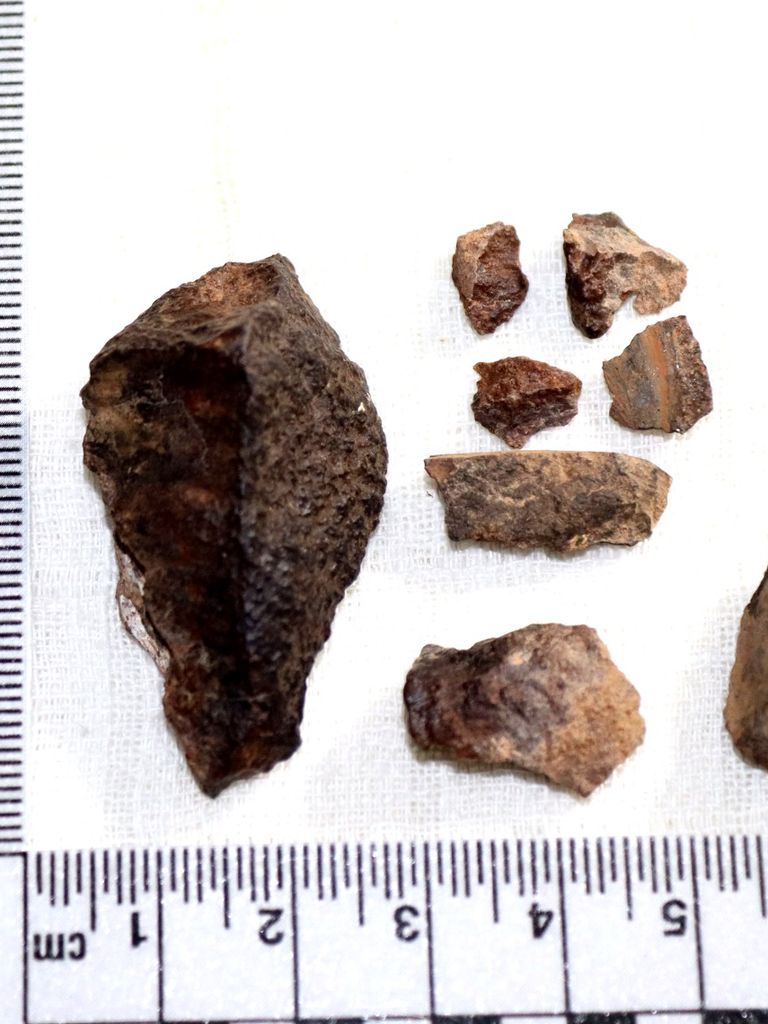

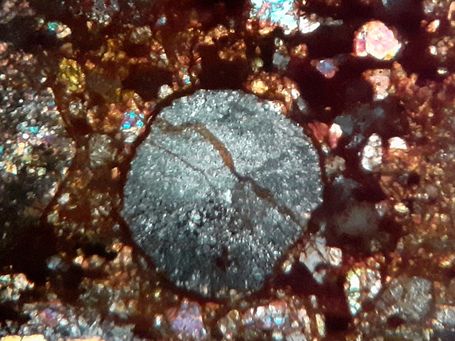
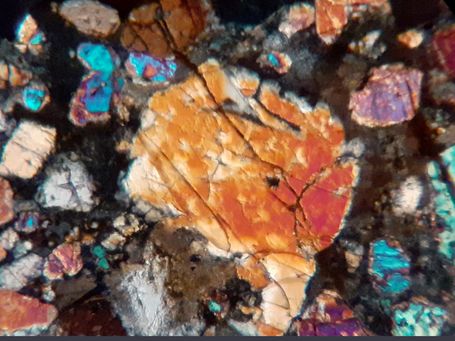
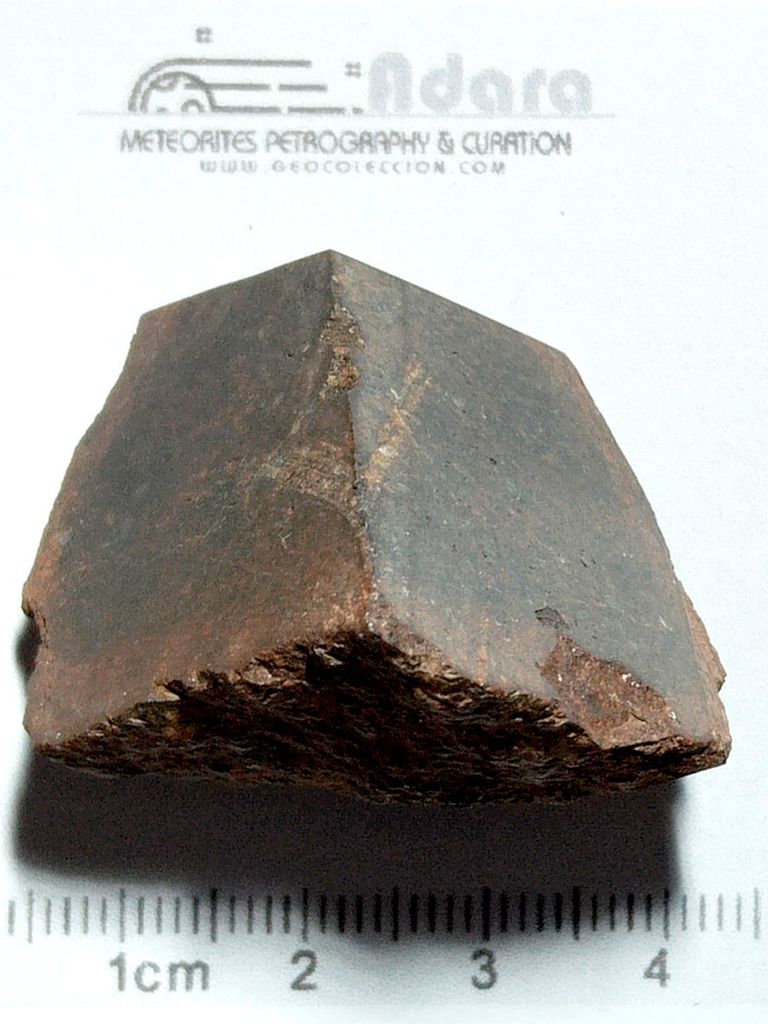
Northwest Africa 17232
Petrography: Thin section reveals a chondritic texture, composed of chondrules relatively developed up to 0.7 ± 0.3 mm (n=6), chondrule fragments and mineral clasts. Olivine is showing irregular fractures and a slight undulatory extinction. Pyroxene is mostly orthorrombic. FeNi is almost oxydized. Accessory is Troilite (isolated grains) and Iddingsite (in olivine).
Magnetic susceptibility: Log X = 4.65
Classification: Ordinary chondrite L5 S2 W3.
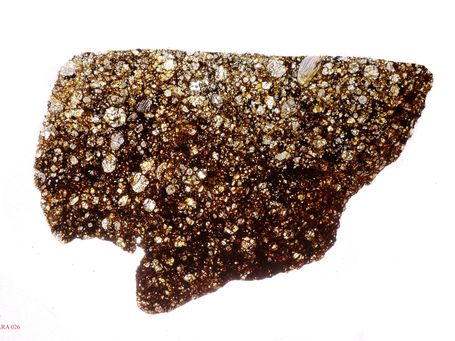
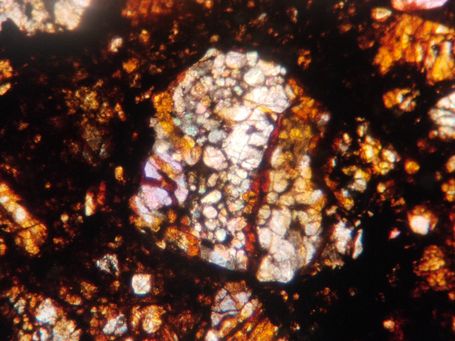
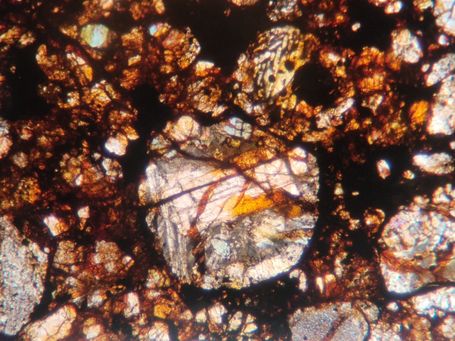
NorthEast Africa 072
Petrography: (J. Garcia, ADARA) Thin section shows a chondritic texture, composed of chondrules up to 0.4±0.3 mm, n=9), chondrule fragments and mineral clasts. Some RP chondrules up to 1.3 mm (n=4) were observed. Olivine is zoned, and displays a weak undulatory extinction. Melt veins run throughout the rock. FeNi and sulfides are present.
Magnetic susceptibility: Log X; 5.01
Classification: Rumuruti chondrite H5 S2 W2.
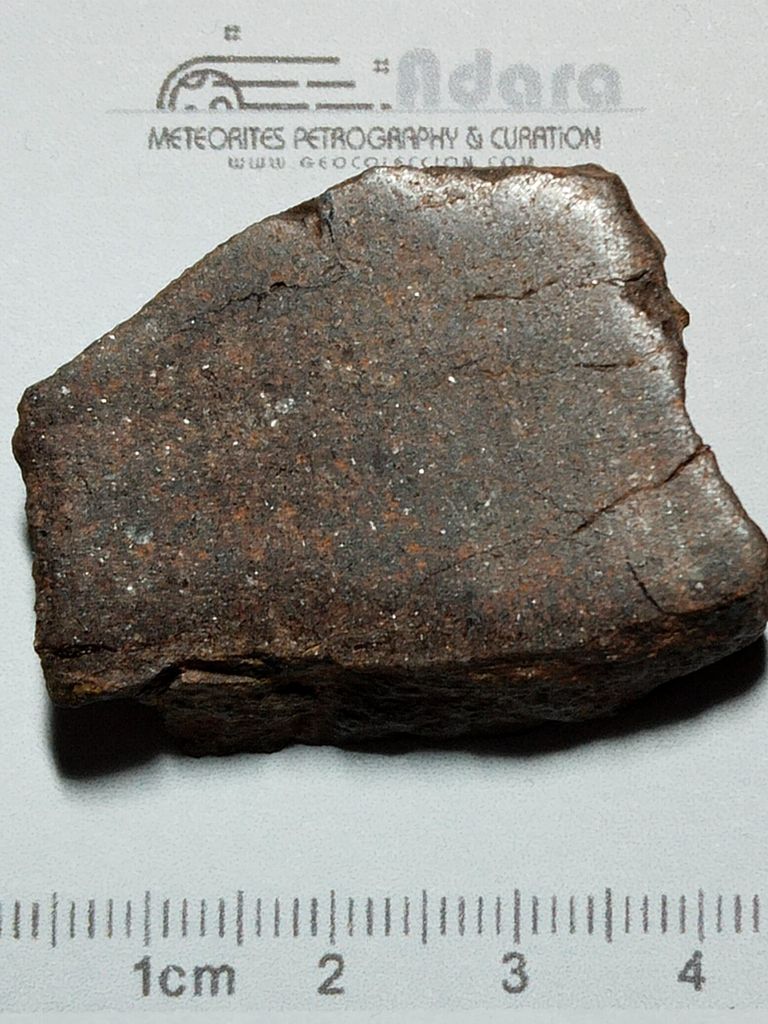
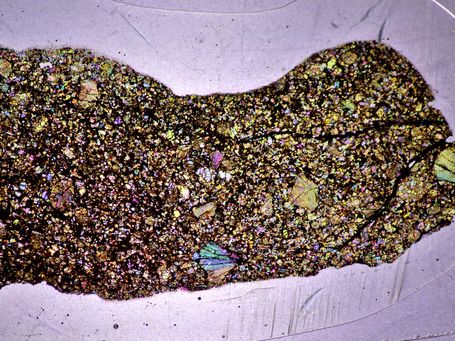
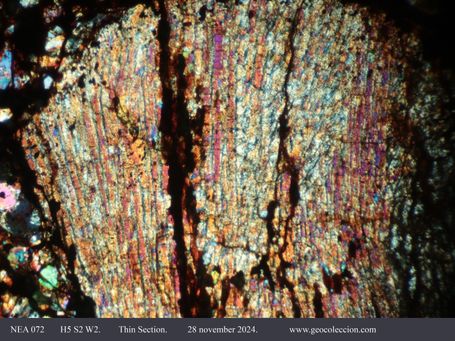
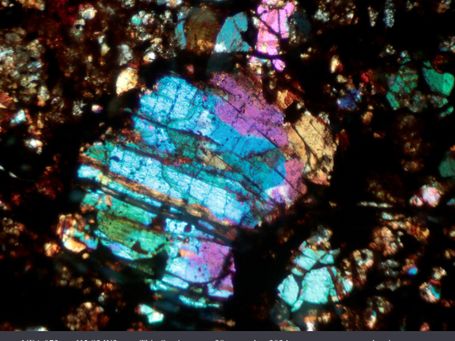
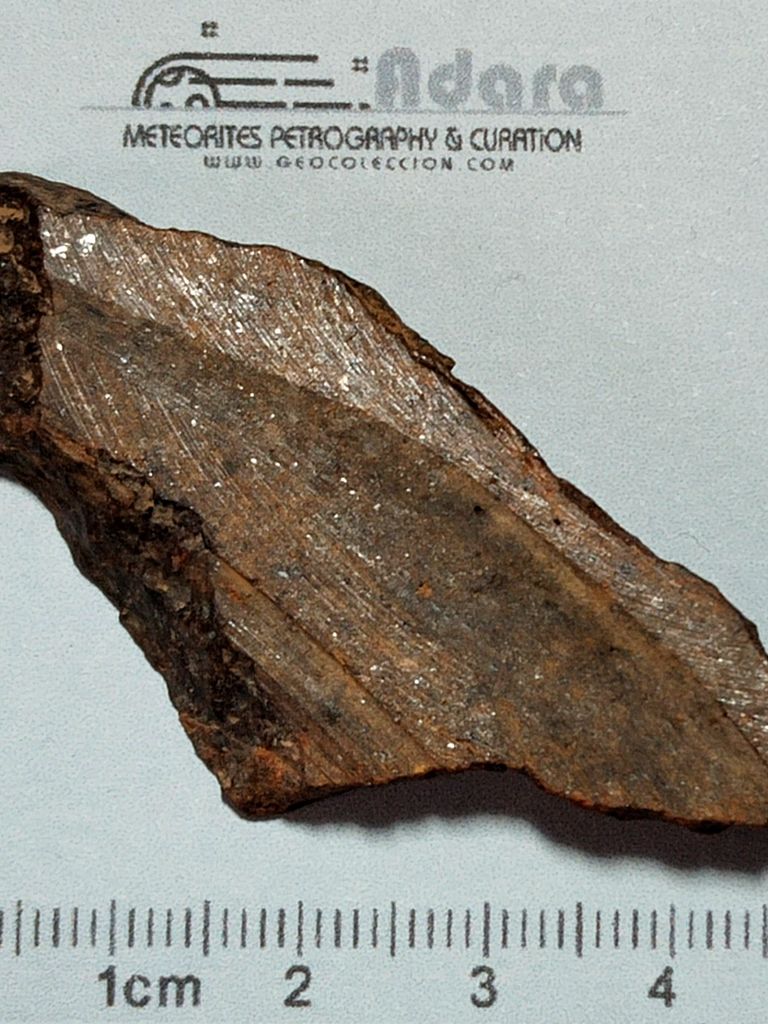
NorthEast Africa 074
Petrography: Thin section shows a recrystallized chondrite, composed of hardly recognizable chondrules up to 0.6±0.3 mm (n=5). Olivine displays a strong undulatory extinction, planar and irregular fractures. Pyroxene is mostly orthorrombic. Opaques are FeNi and sulfides. Feldspar grain size up to 50 µm (n=6).
Magnetic susceptibility: Log X = 4.42
Classification: Ordinary chondrite L6 S4 W3.
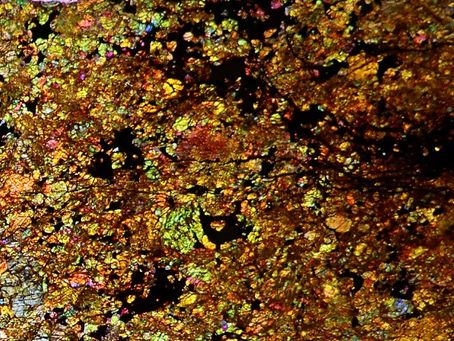
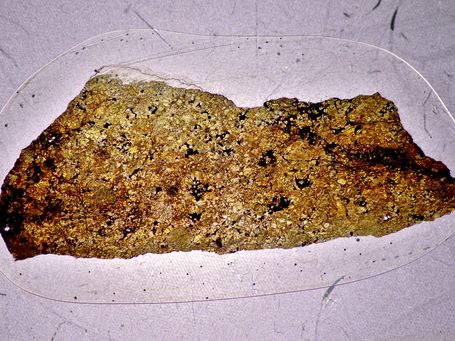
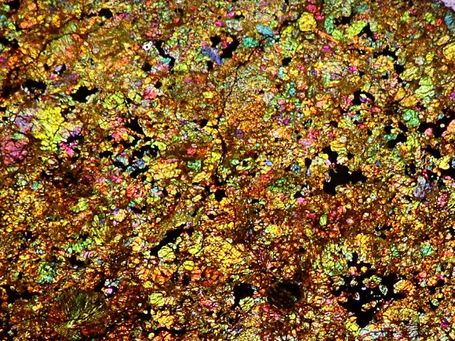
NorthEast Africa 073
Petrography: (J. Garcia, ADARA) Thin sections show a highly recrystallized chondrite, with some relict chondrules. Olivine displays undulatory extinction, planar and irregular fractures (also in pyroxene). Opaques are FeNi and sulfides. Feldspar grain size up to 60 µm (n=8).
Magnetic susceptibility: Log X; 4.79.
Geochemistry: Olivine Fa 24.7±0.2 (n=5); Pyroxene Fs 20.0±0.1 Wo 1.6±0.1 (n=5).
Classification: Ordinary chondrite (L6 S3 W2)
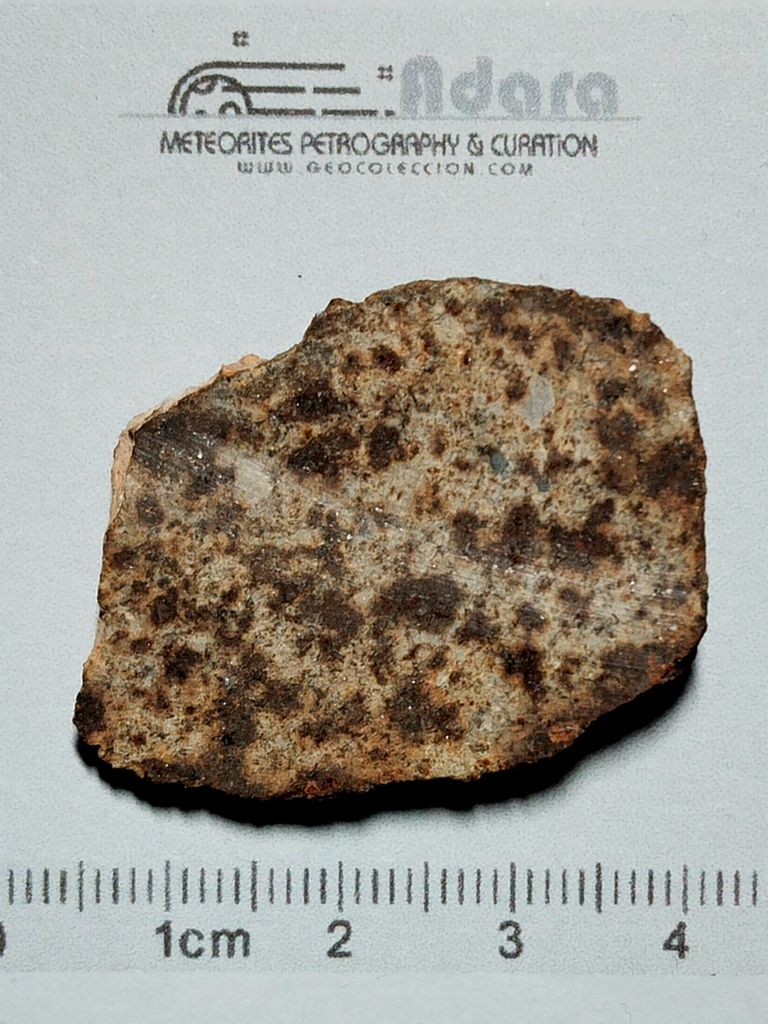
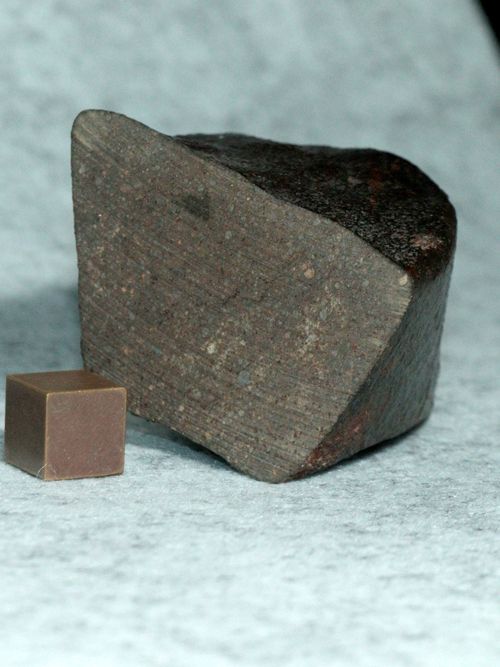
Petrography: (J. Garcia, ADARA) Thin section shows a chondritic texture, composed of well-developed chondrules 0.4±0.15 mm (n=36), chondrule fragments, and mineral clasts. Chondrules are mostly POP, BOP, RP and cryptocrystalline. Olivine displays a weak undulatory extinction and some irregular fractures. FeNi is about 15% of the modal composition. Sulfides are also present.
Geochemistry: Olivine Fa17.7±0.6 (n=10). Low-Ca pyroxene Fs15.9±0.9Wo1.3±1.2 (n=5). Ca-pyroxene Fs6.6±0.9Wo46.2±1.1 (n=10). Magnetic susceptibility log χ (× 10-9 m3/kg) = 4.88
Classification: Ordinary chondrite (H4 S2 W3)
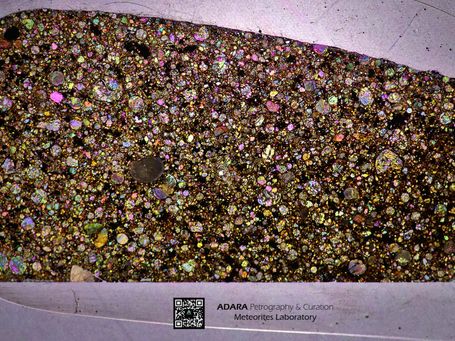
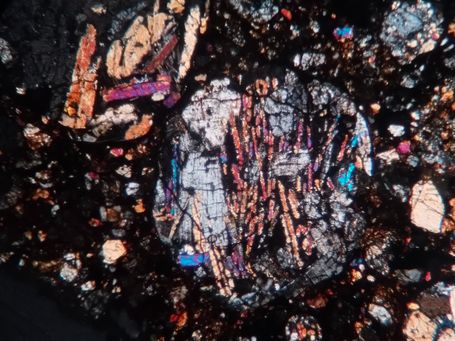
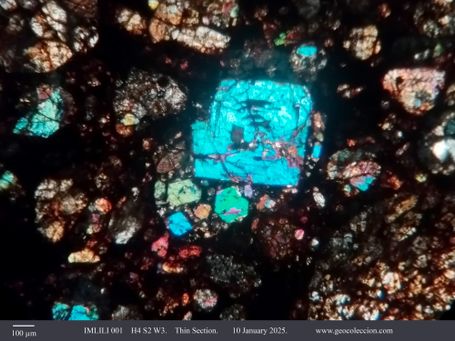
NorthWest Africa 17137
Petrography: (J. Garcia, ADARA) Examination of thin sections show an ordinary chondrite, composed of condrule fragments, and a few not well defined chondrules up to 0.8±0.2 mm (n=7), in a finely recrystallized matrix. One big chondrule (almost 1 cm) was observed. Zoned olivine and pyroxene show undulatory extinction and planar fractures. Thick shock veins run through the rock, producing a deep darkening in part of the meteorite. Metal FeNi and sulfides are present, part of them as scattered blebs in the melt veins. Feldspar grain size <50 µm.
Geochemistry: Olivine Fa 23.9±0.2 (n=5); Pyroxene Fs 21.5±0.2 Wo 1.3±0.3 (n=5).
Magnetic susceptibility: log χ (× 10-9 m3/kg) = 4.94
Classification: Ordinary chondrite L5 S4 W1.
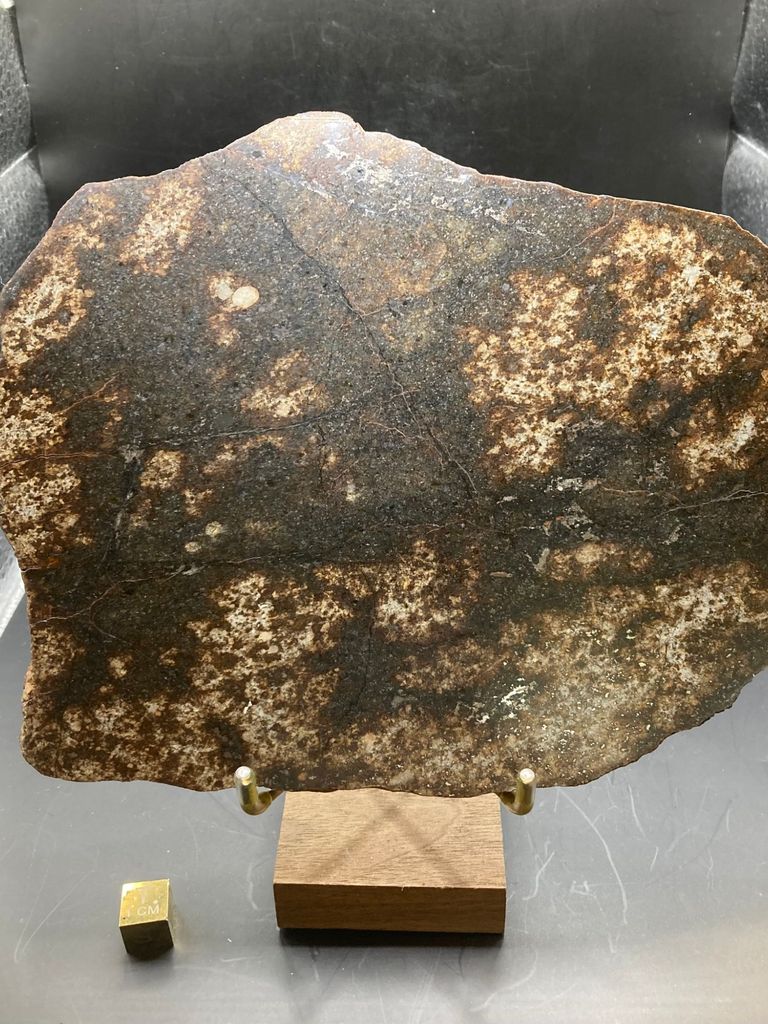
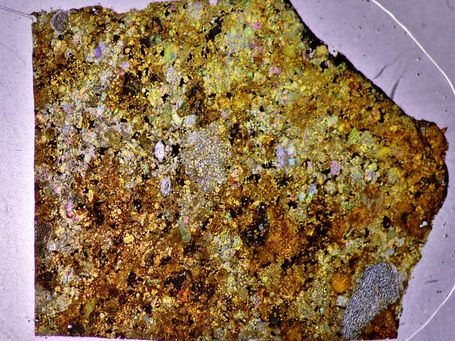
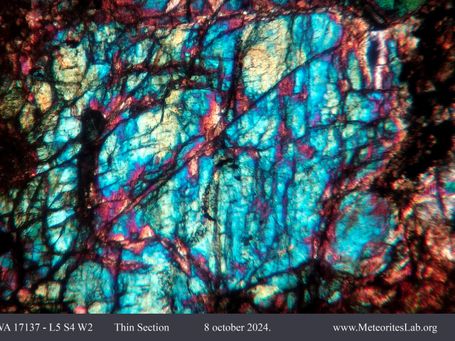
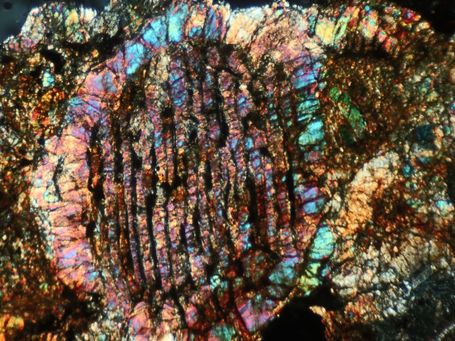
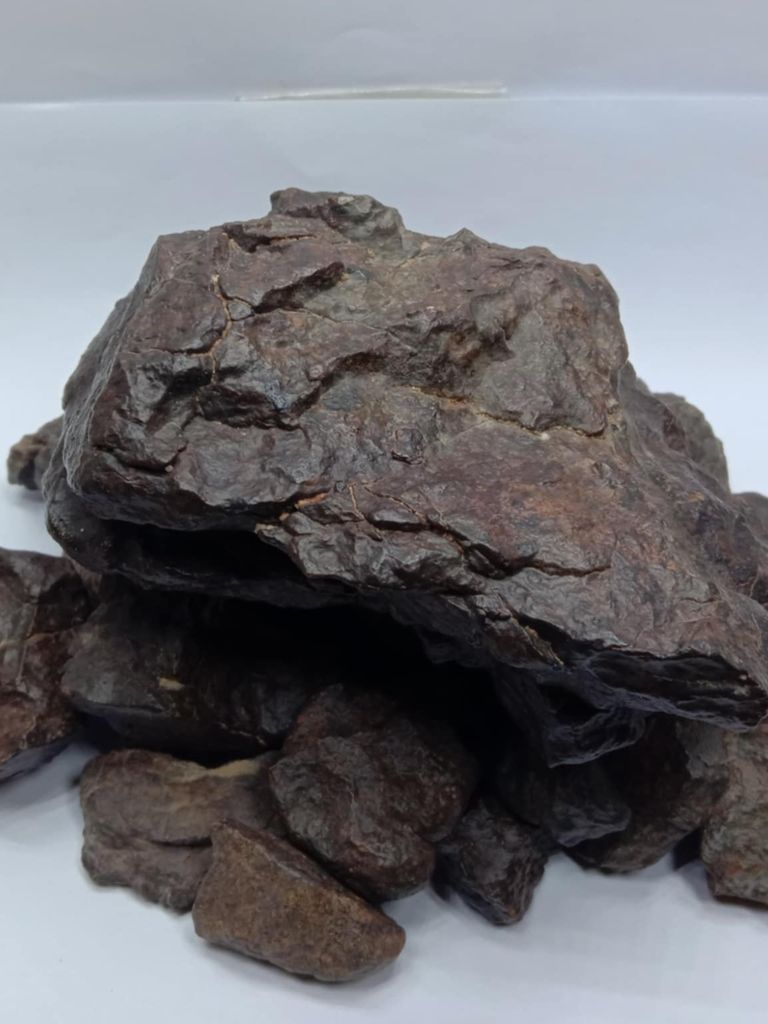
Al Bir Lahlou 002
Petrography: (J. Garcia, ADARA) Thin section shows a chondritic texture, composed of chondrules 720±150 µm (n=6) and chondrule fragments in a recrystallized matrix. Olivine shows undulatory extinction, irregular and planar fractures. FeNi is almost converted into hydroxides. Chromite, troilite and iddingsite were observed. Feldspar grain size is 60-92 µm.
Geochemistry: Olivine Fa25.5±0.7 (n=8); Low-Ca Pyroxene Fs21.9±1.4 Wo1.5±0.3 (n=8). Magnetic susceptibility log χ (× 10-9 m3/kg) = 4.61
Classification: Ordinary chondrite L6 S3 W3
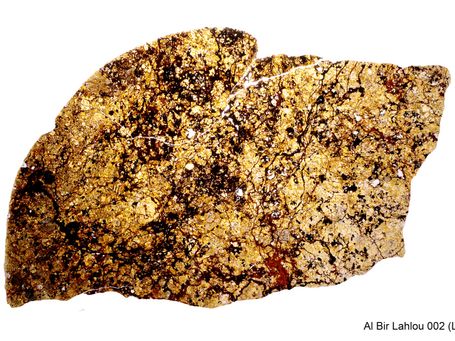
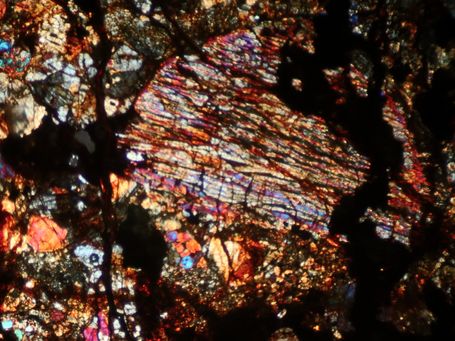
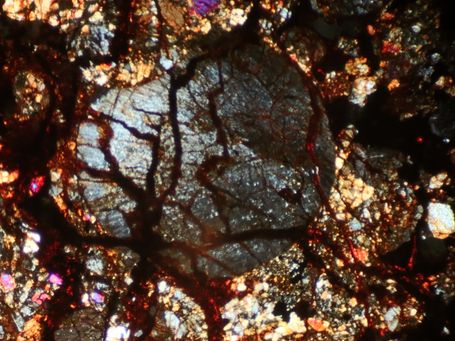
Al Bir Lahlou 003
Petrography: (J. Garcia, ADARA) Thin section shows chondritic texture composed of chondrules 0.4±0.2 mm (n=15) including types BO, PO, GOP and RP, and chondrule fragments set in a porous matrix. FeNi and sulfides are present. Olivine is clear, with a sharp optical extinction.
Geochemistry: Olivine Fa19.9±0.3 (n=10); low-Ca Pyroxene Fs17.9±0.3Wo1.6±0.4 (n=10).
Magnetic susceptibility: log χ (× 10-9 m3/kg) = 4.83
Classification: Ordinary chondrite H5 S1 W2.
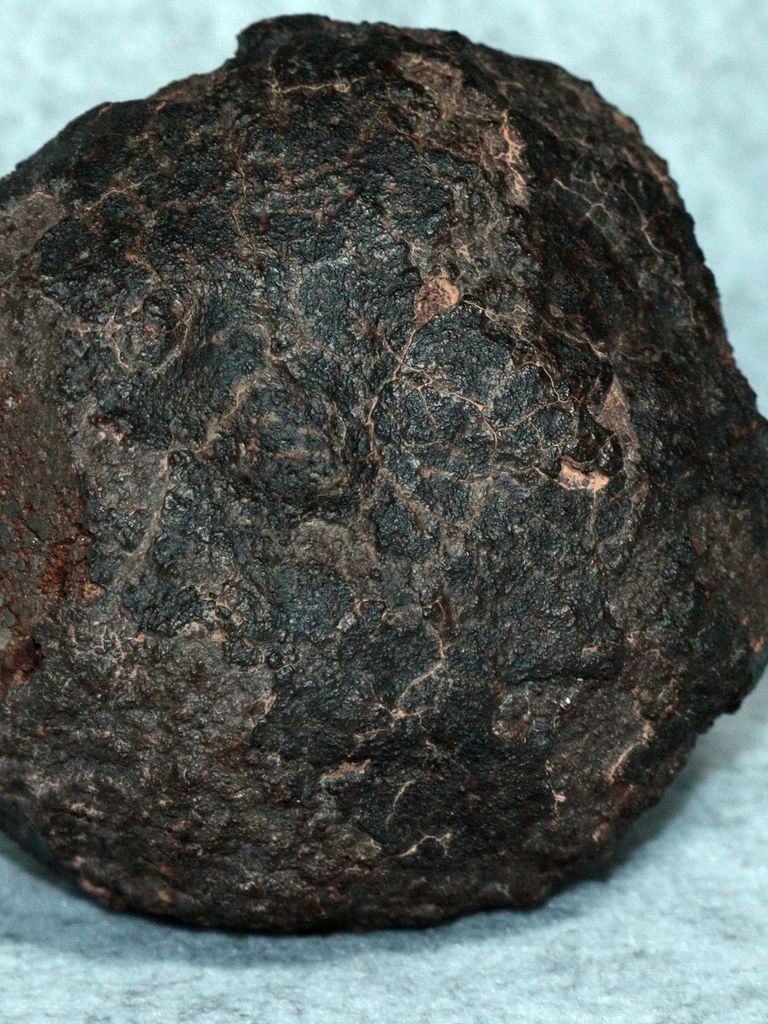
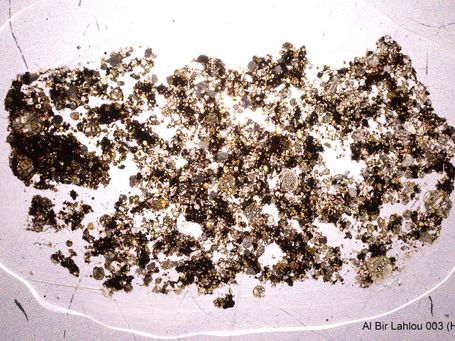
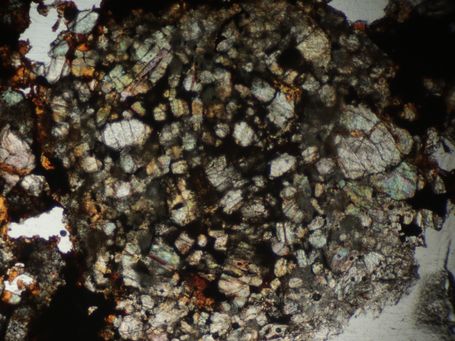
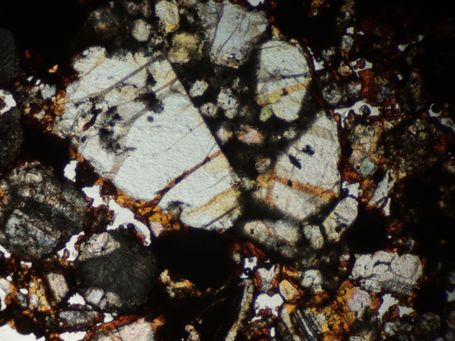
More classified meteorites
Contact us for more information.
REMEMBER; NO PHOTOGRAPHS OR VIDEOS ARE COMMENTED. WE DO NOT ANSWER EMAILS WHERE THE QUERY IS ASKING TO IDENTIFY PHOTOS.
